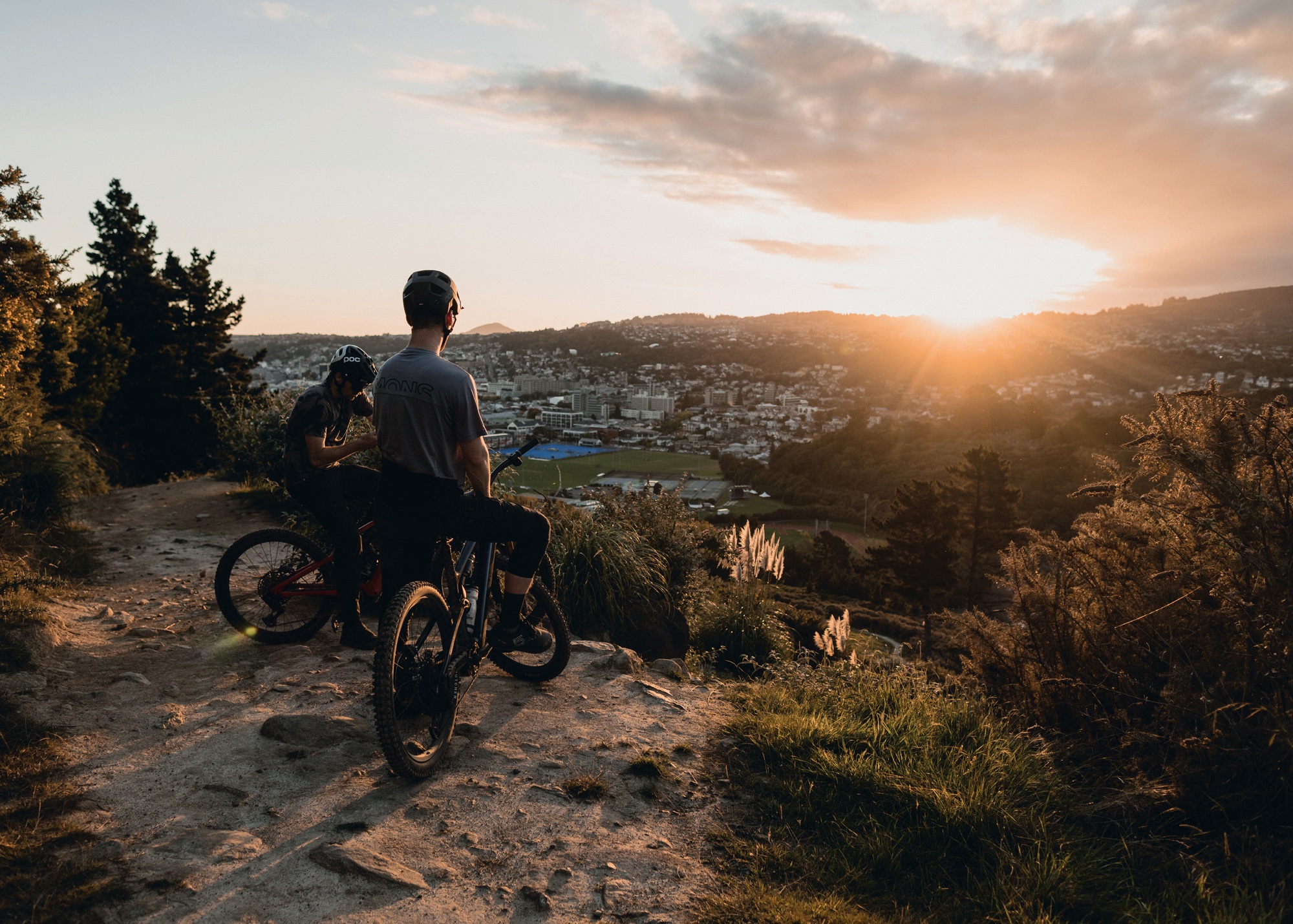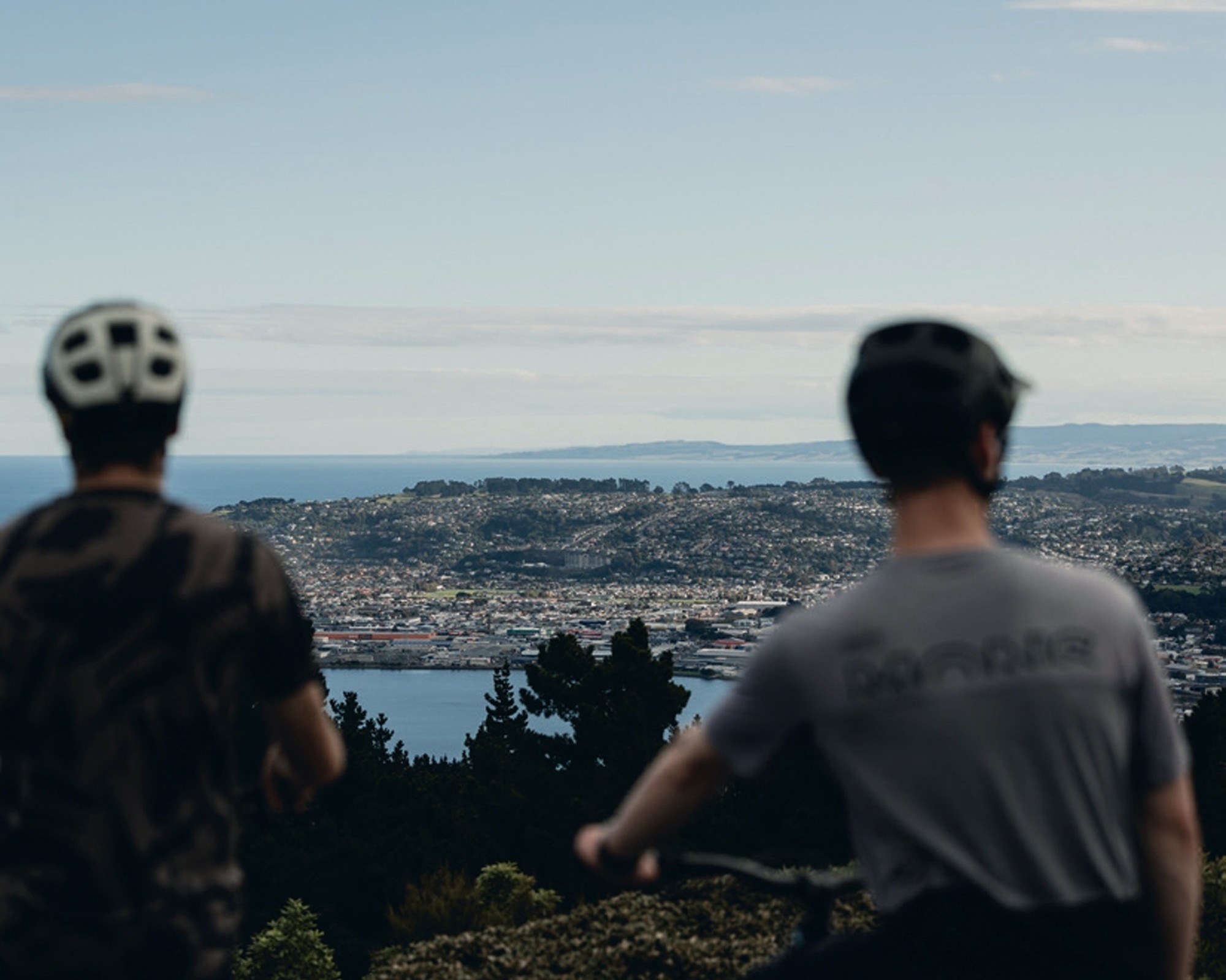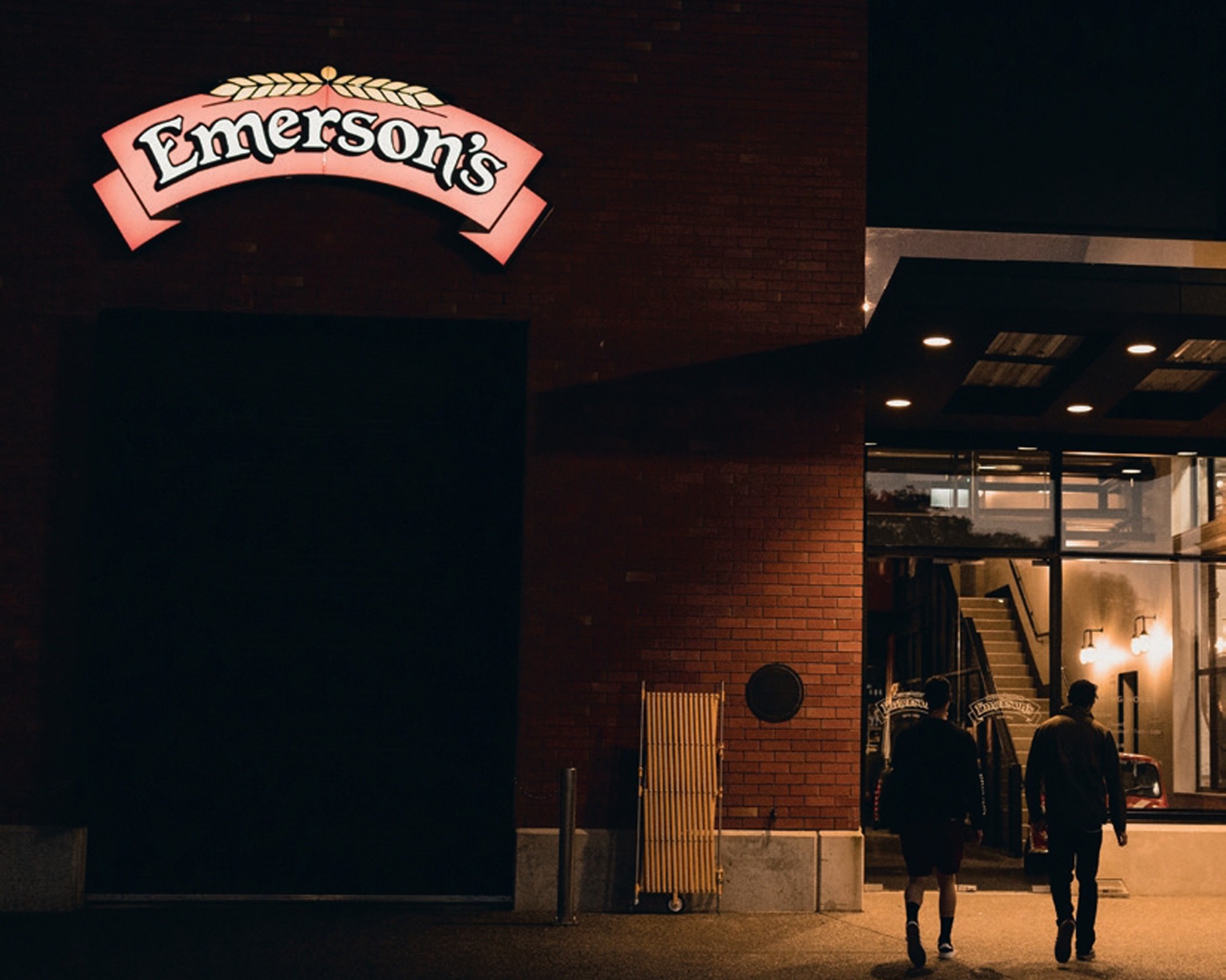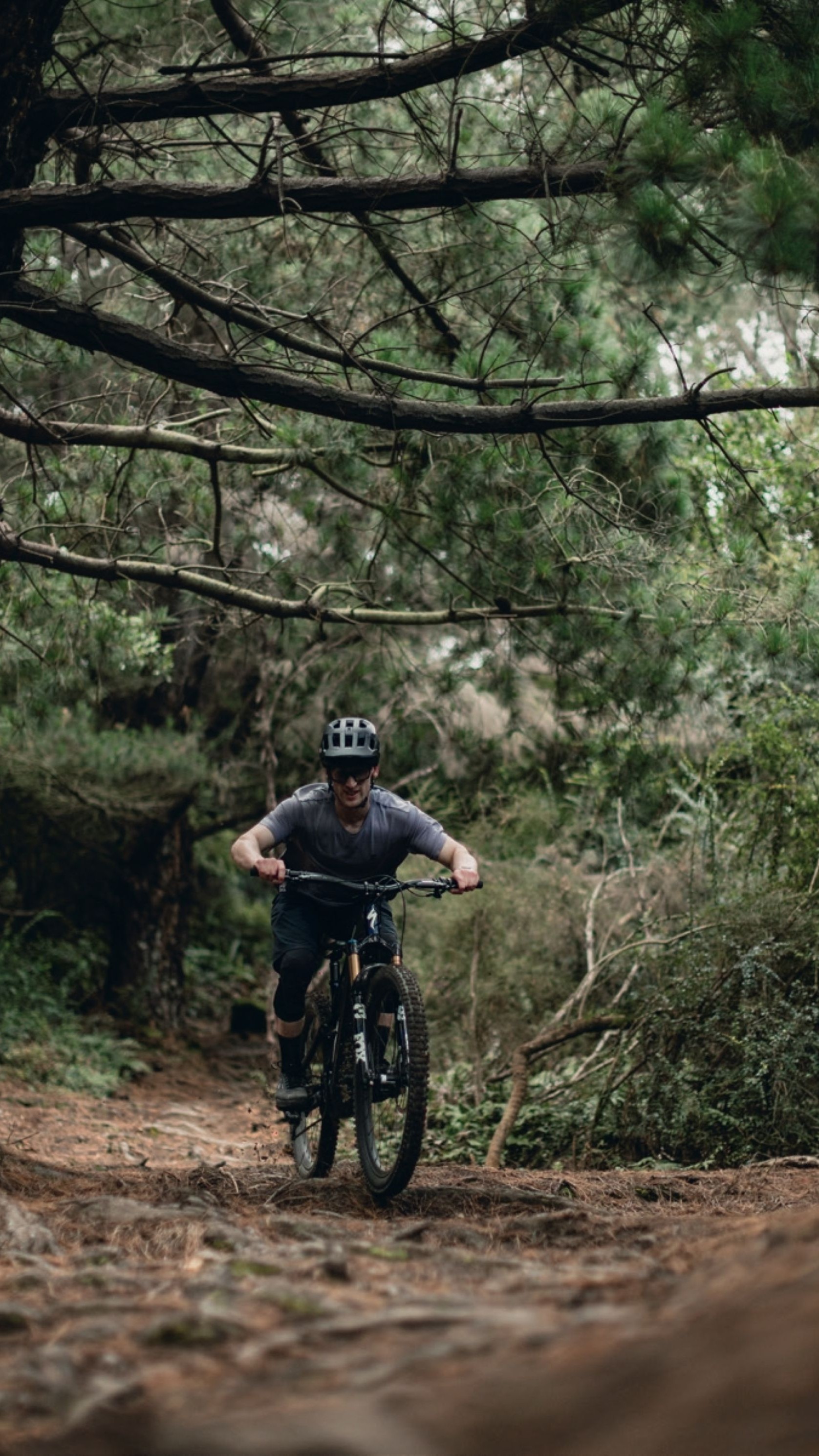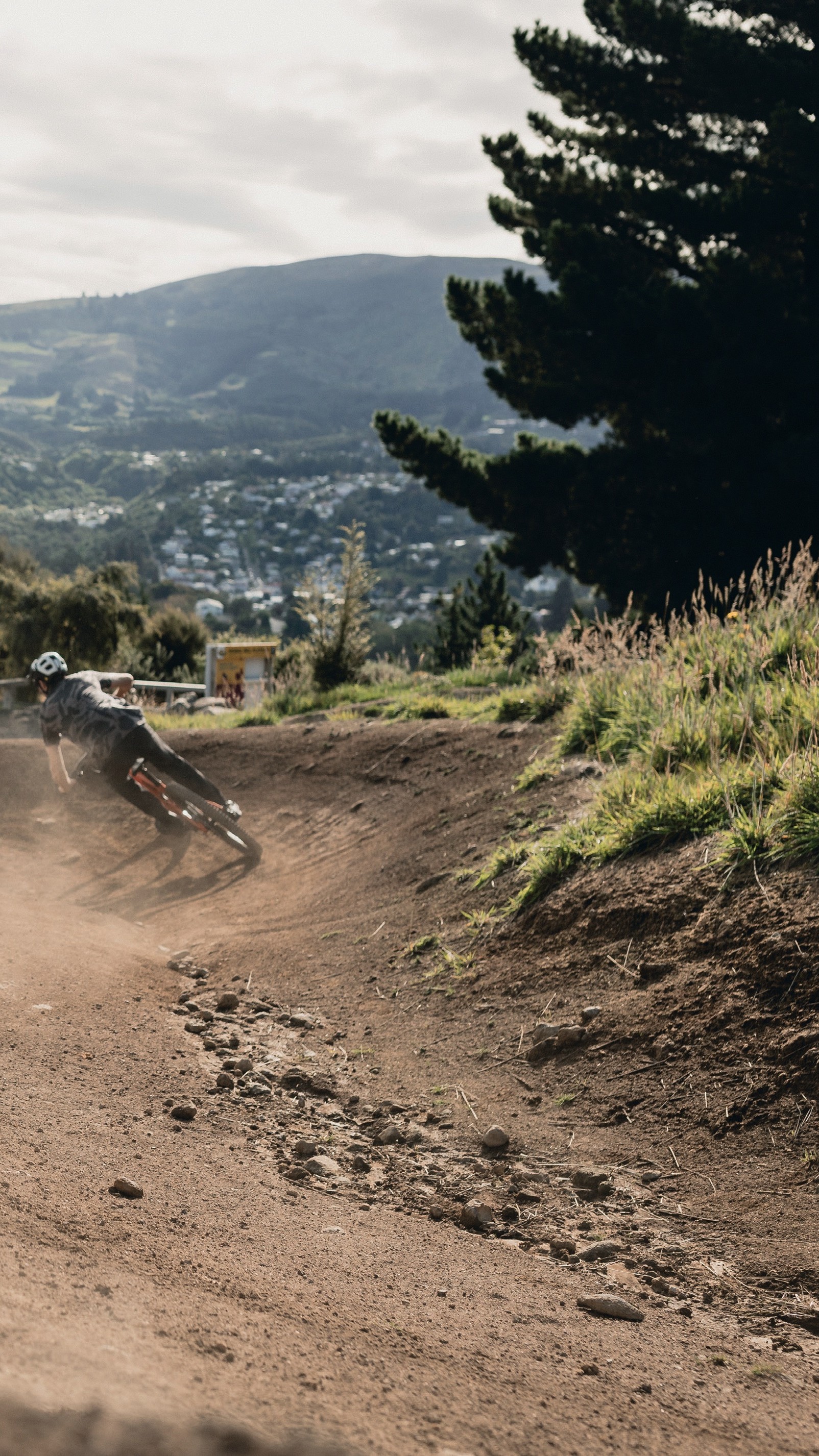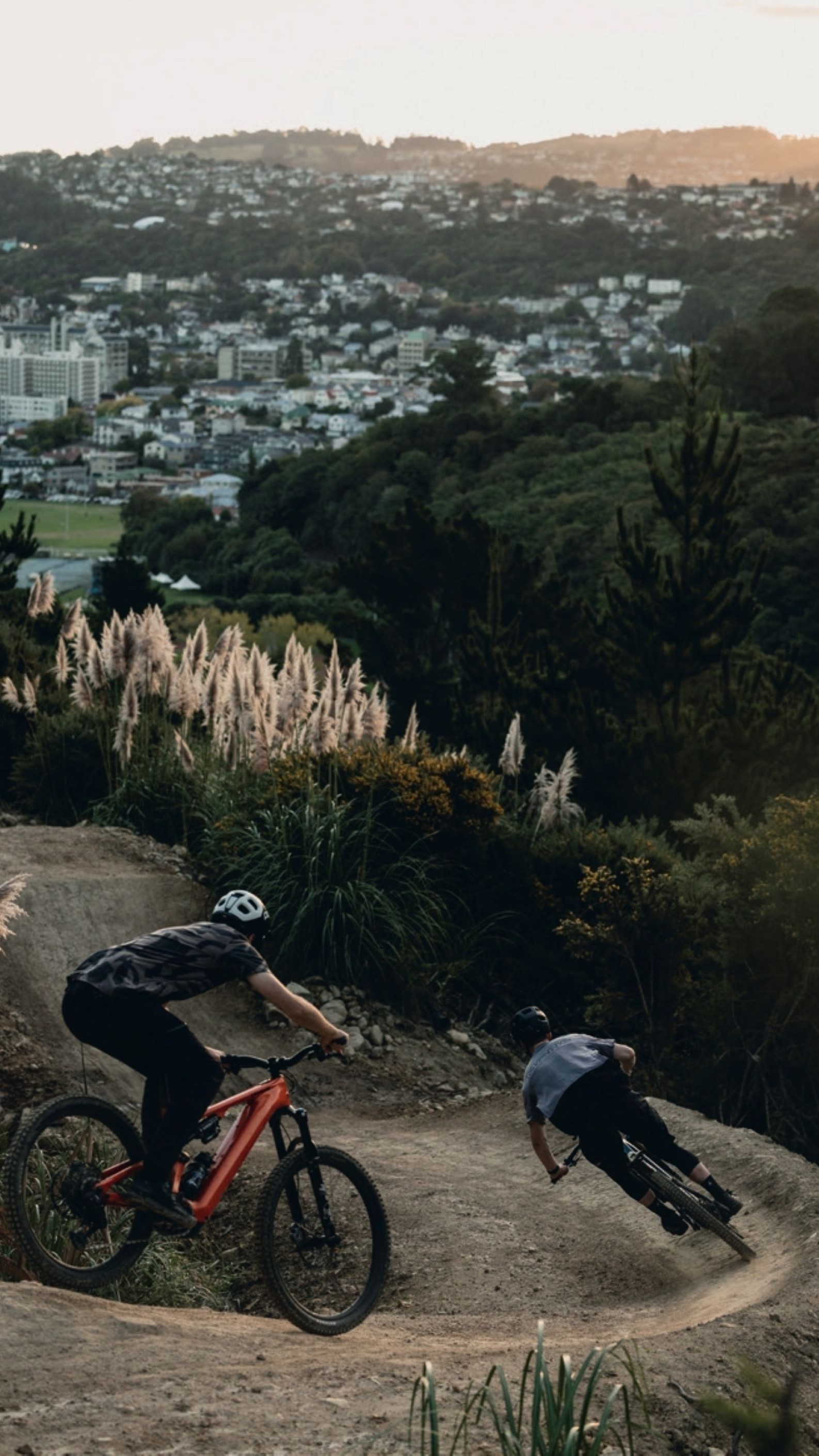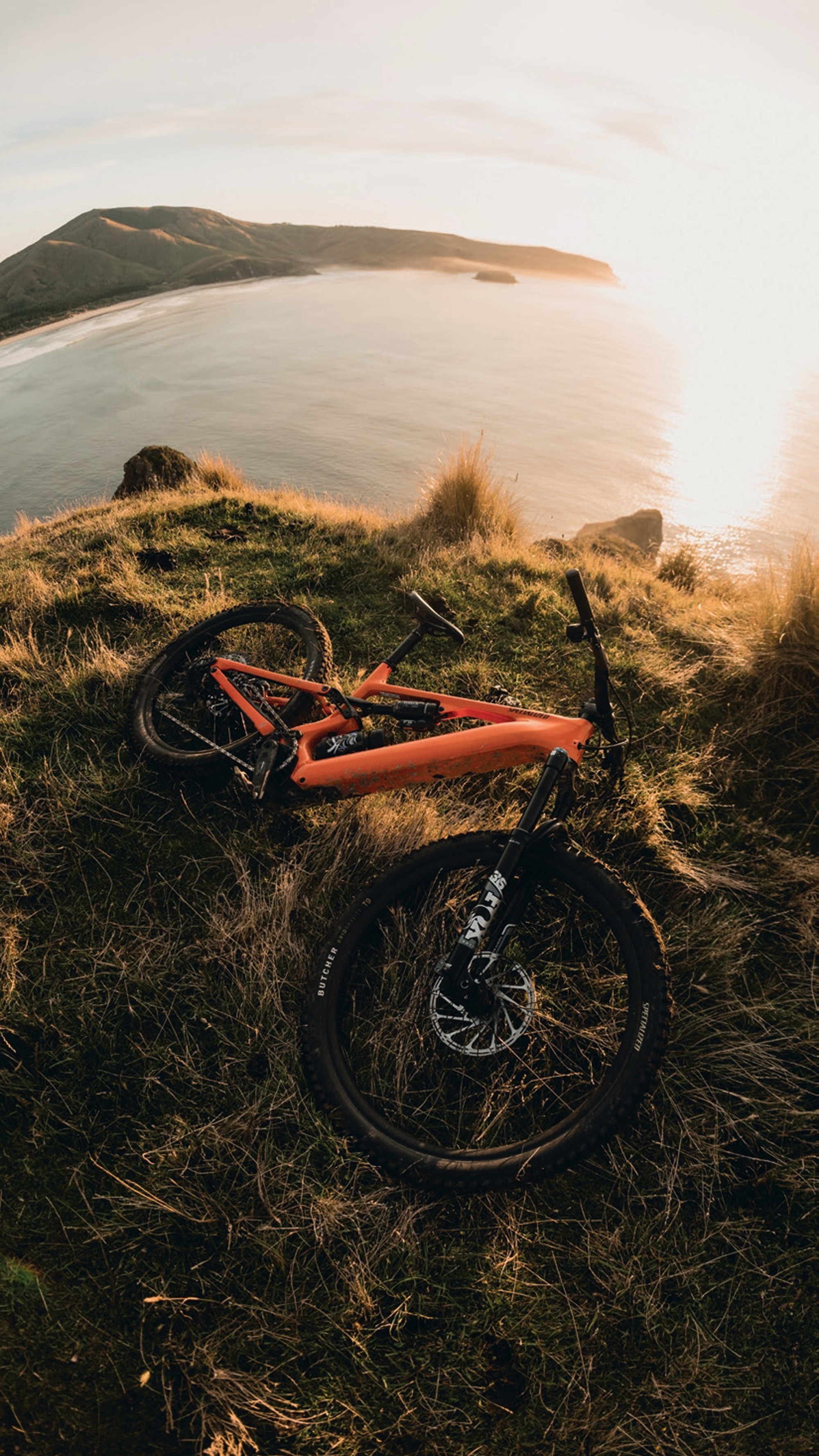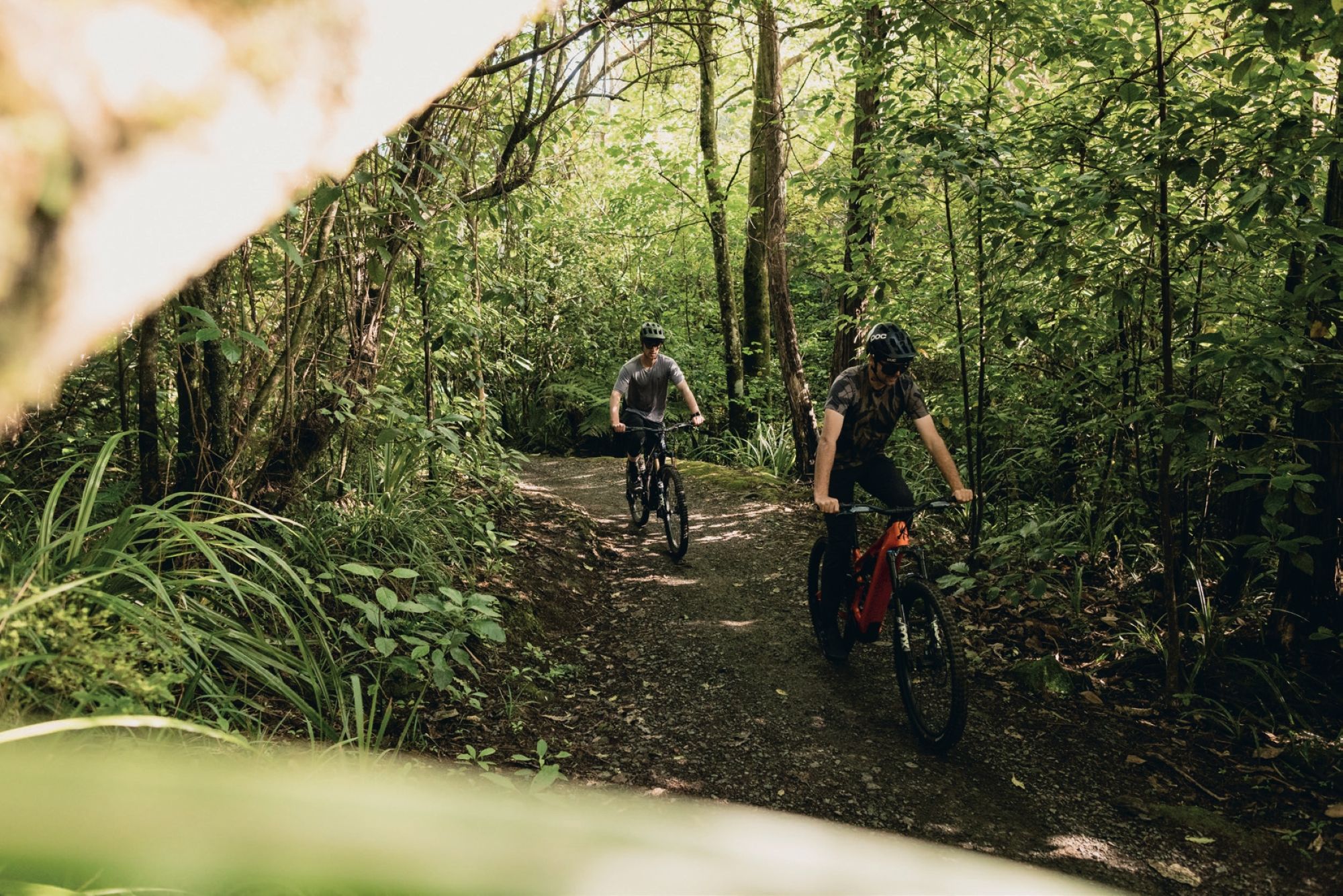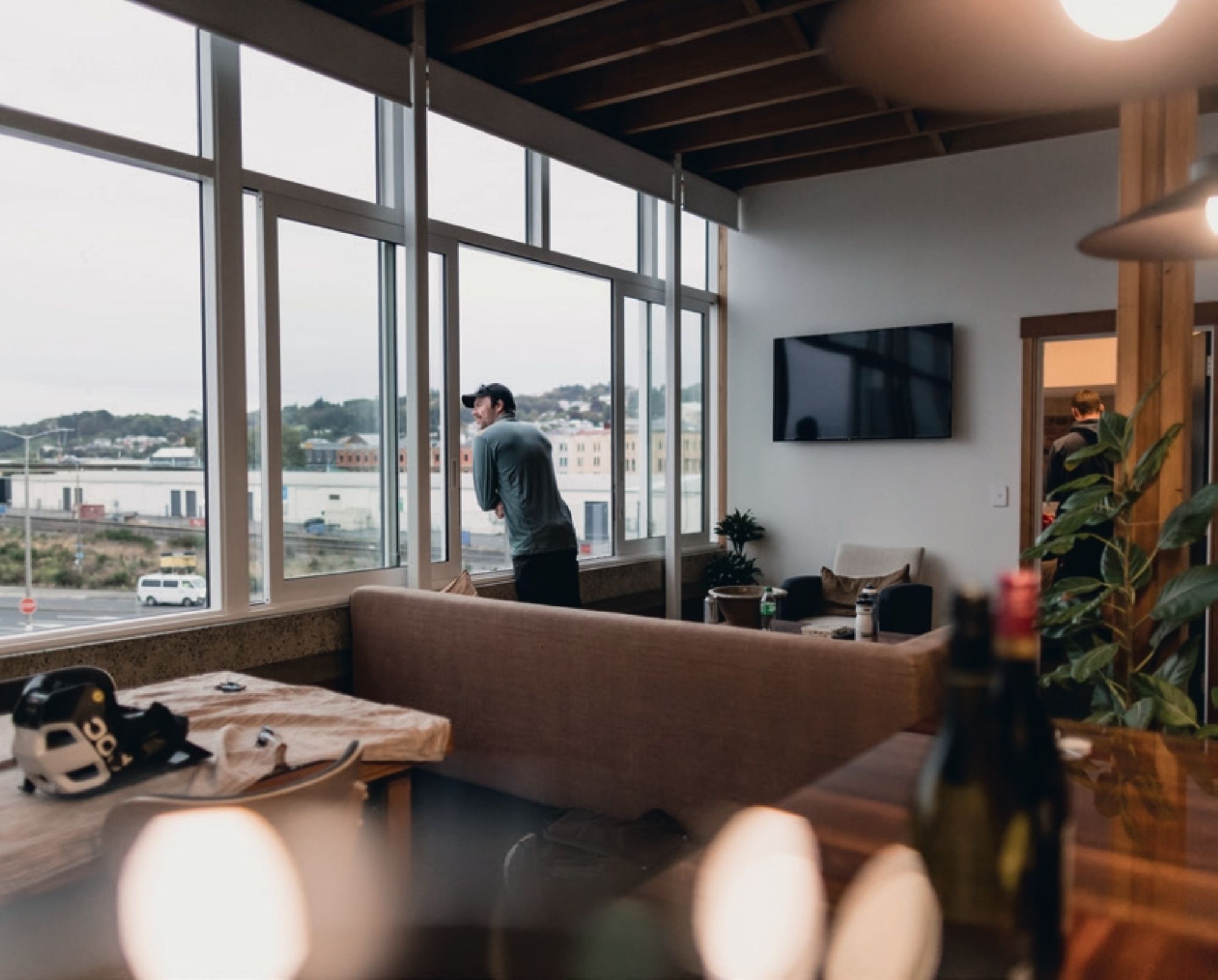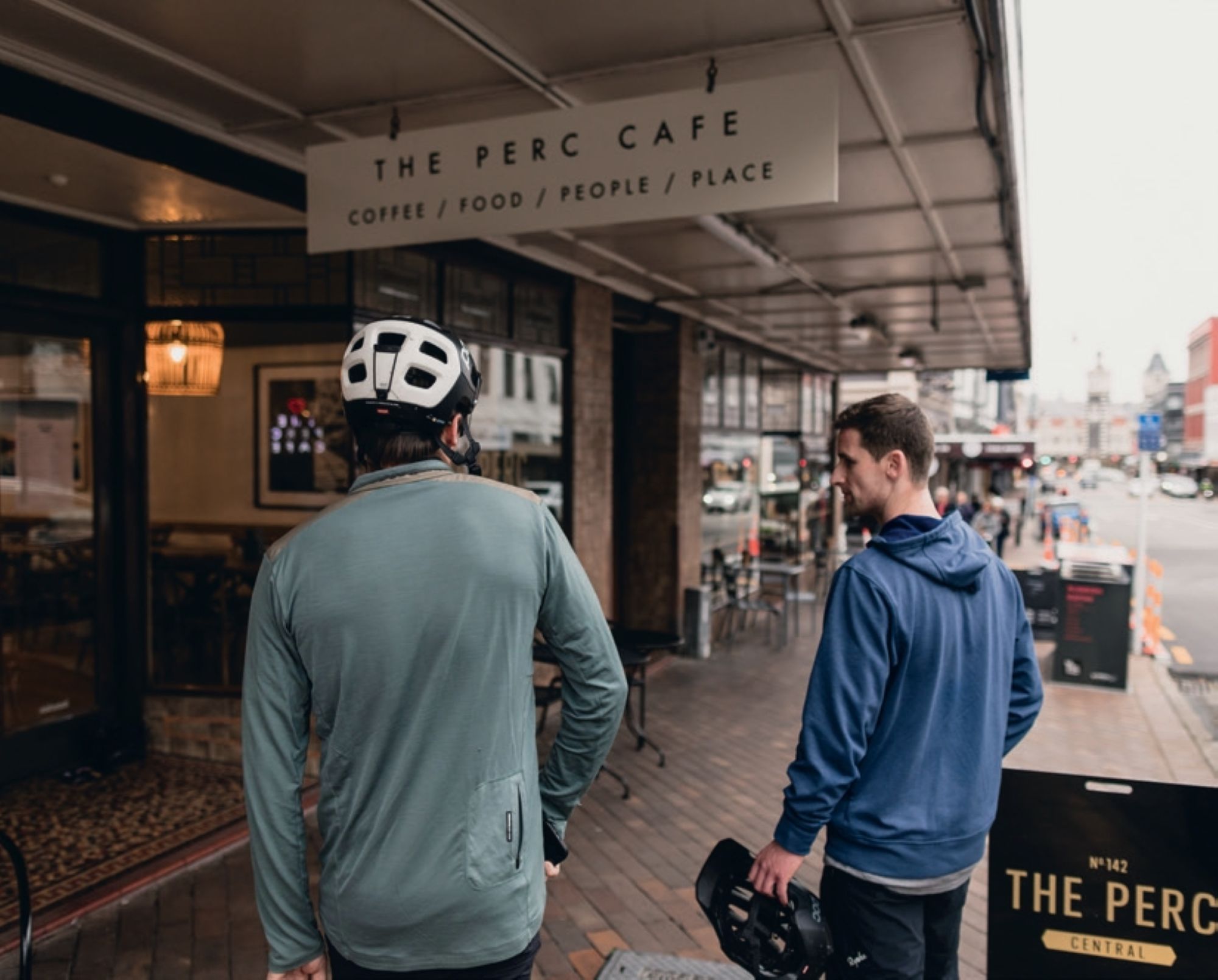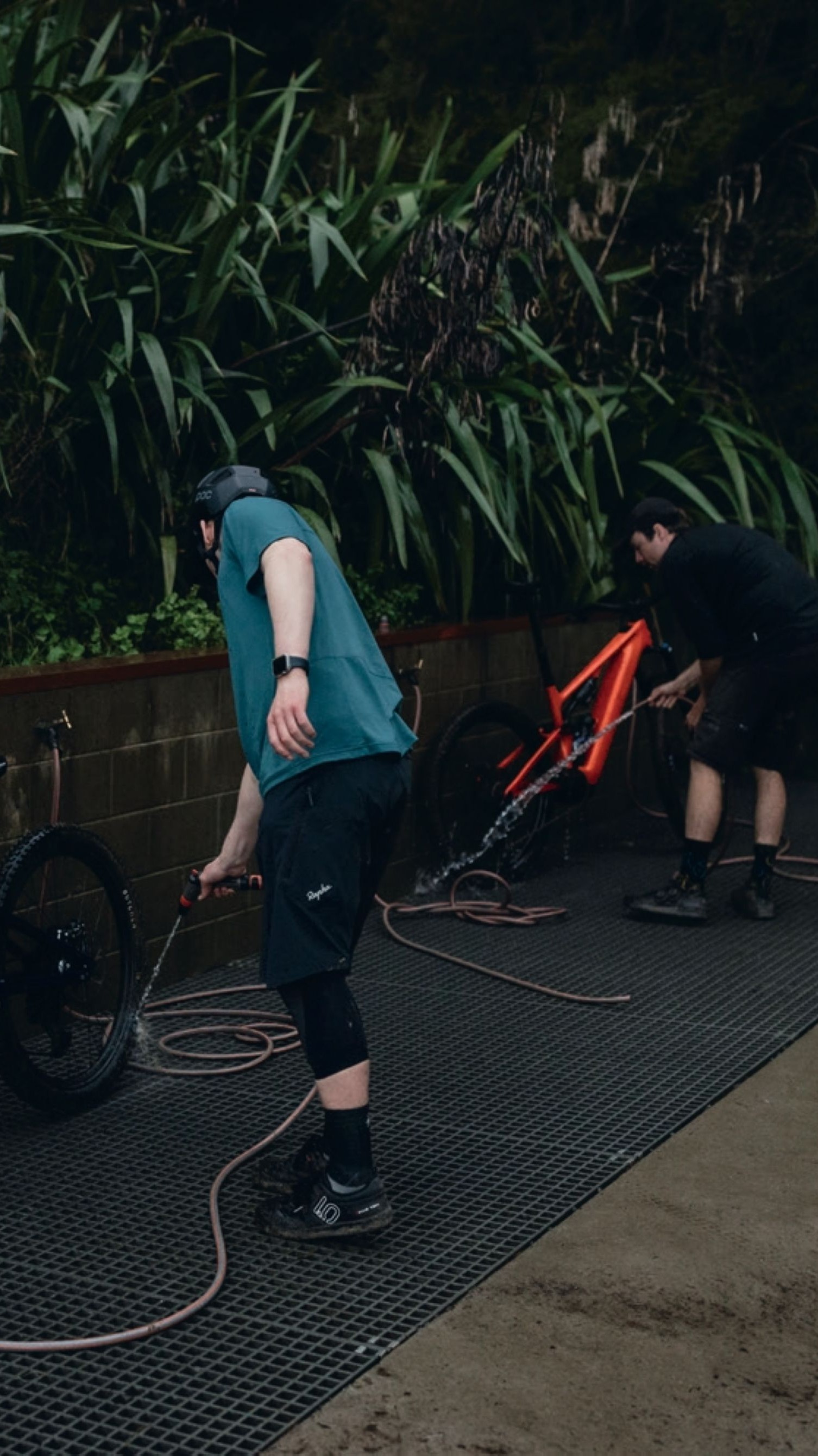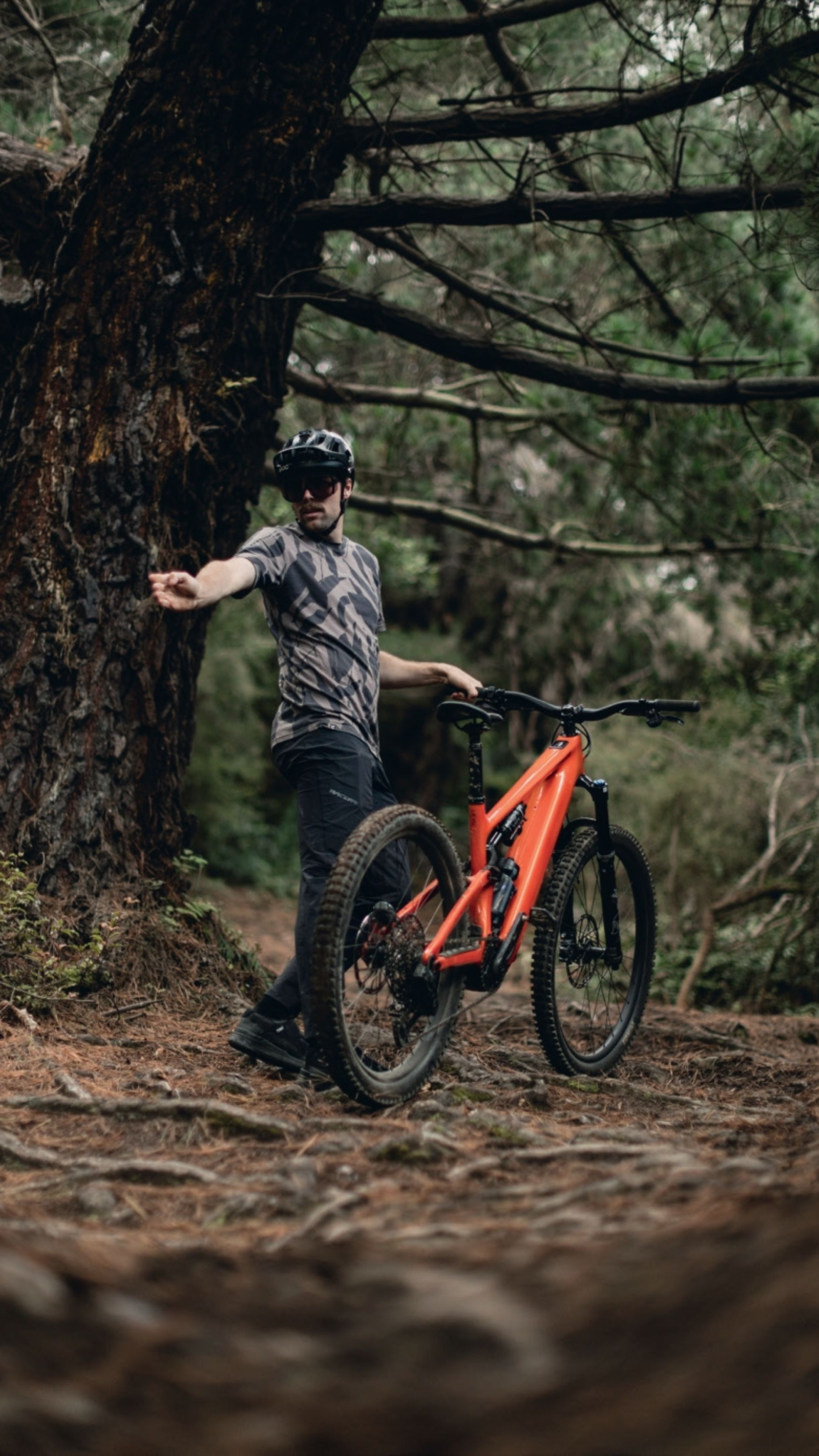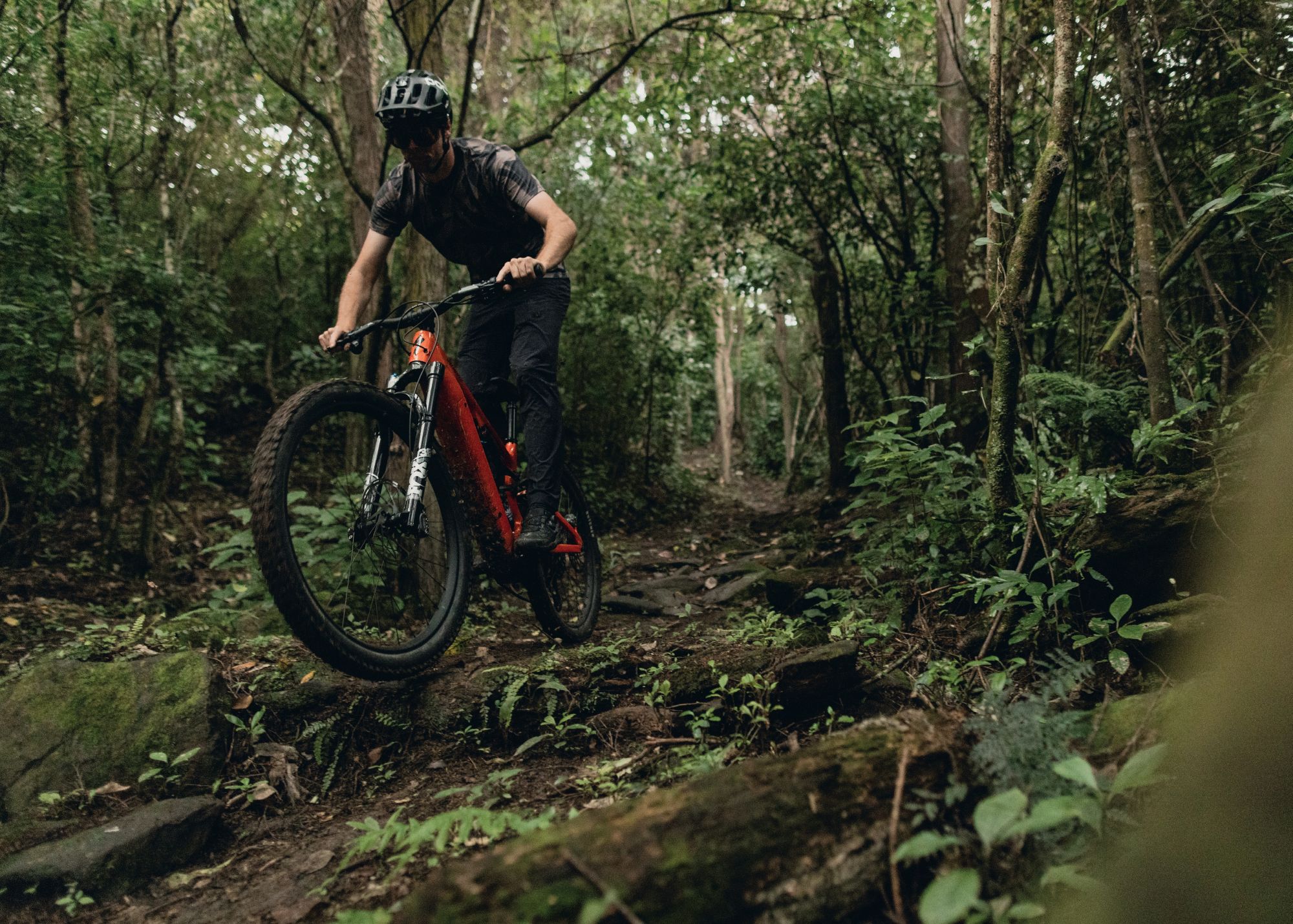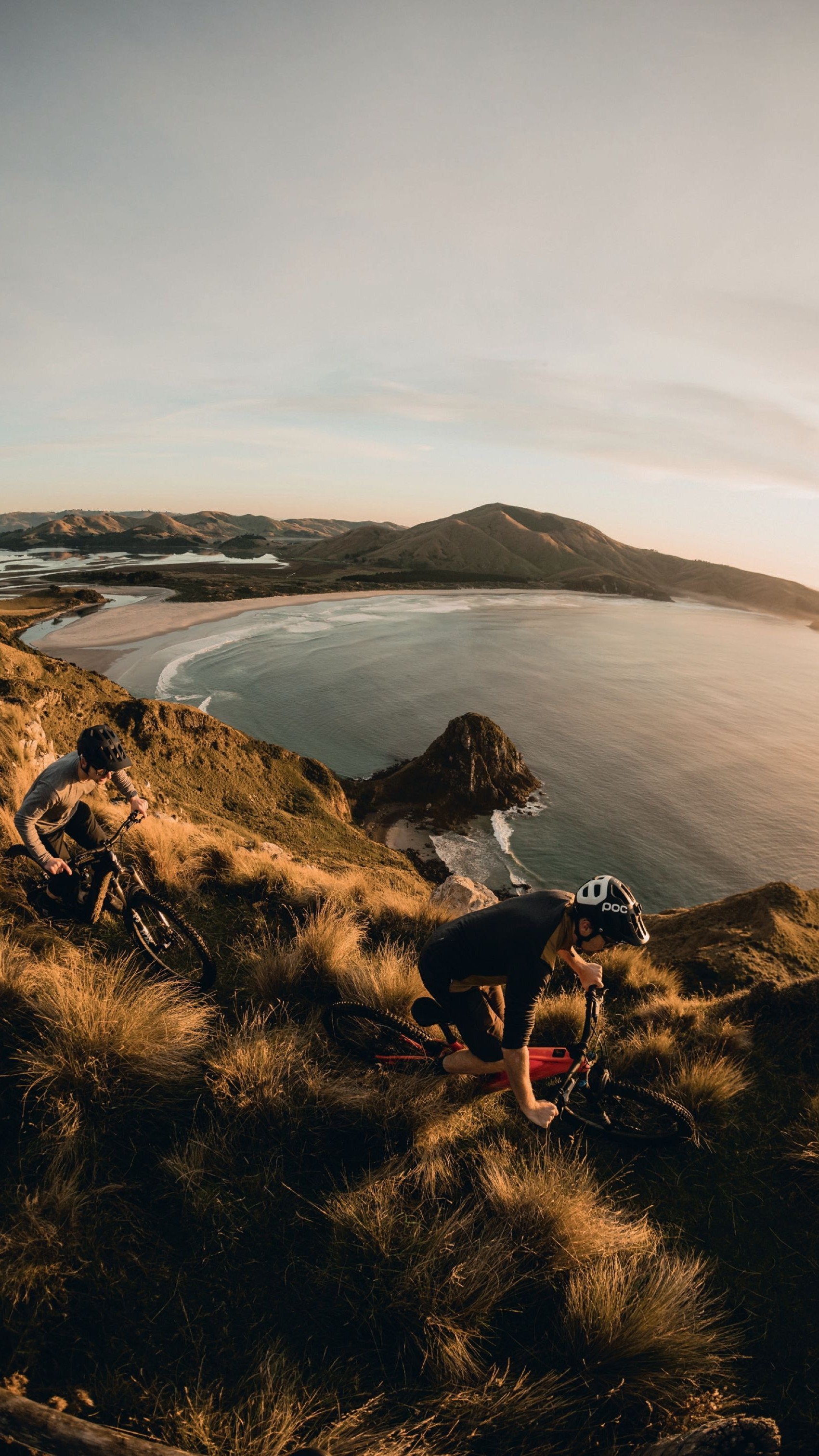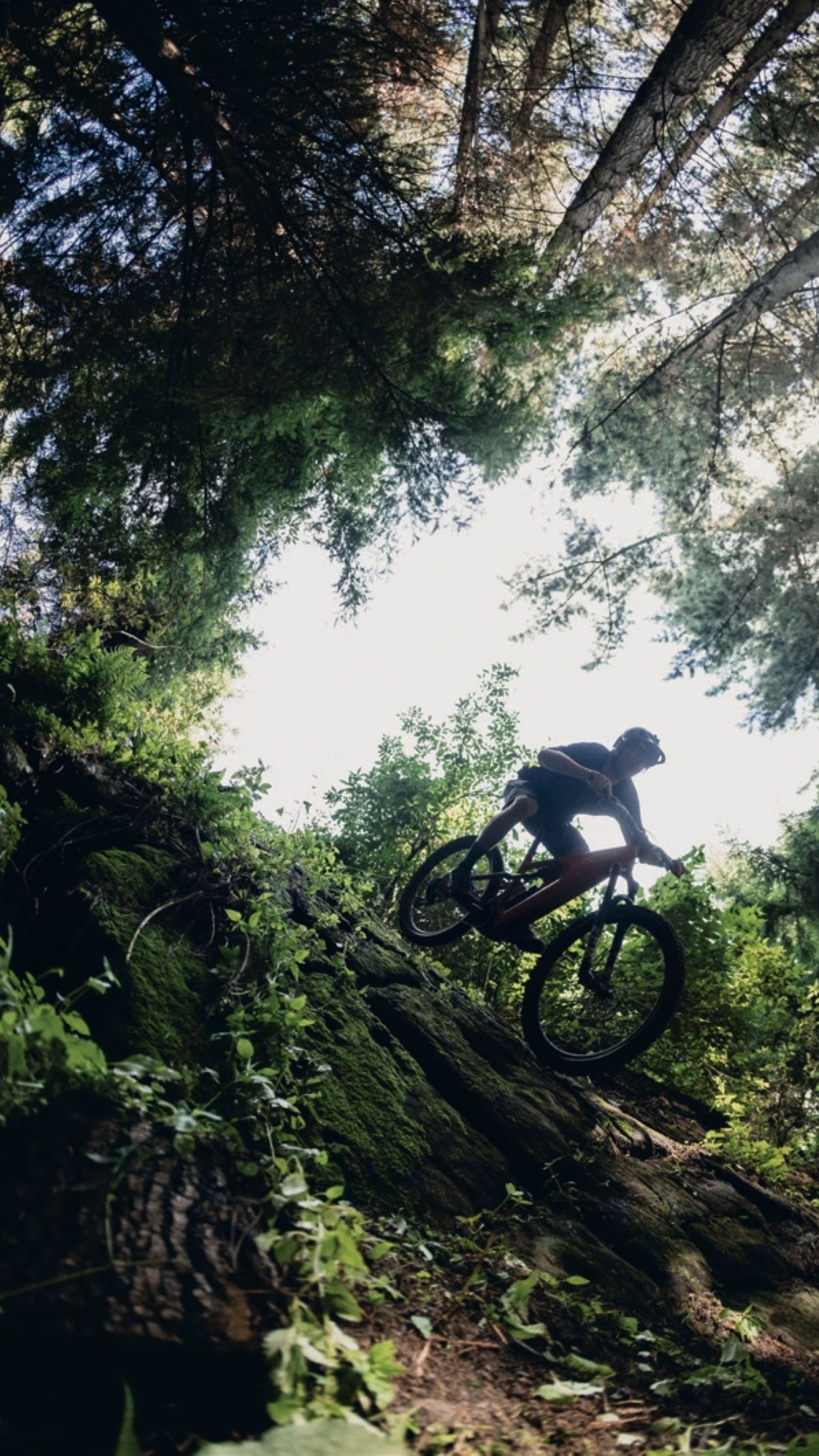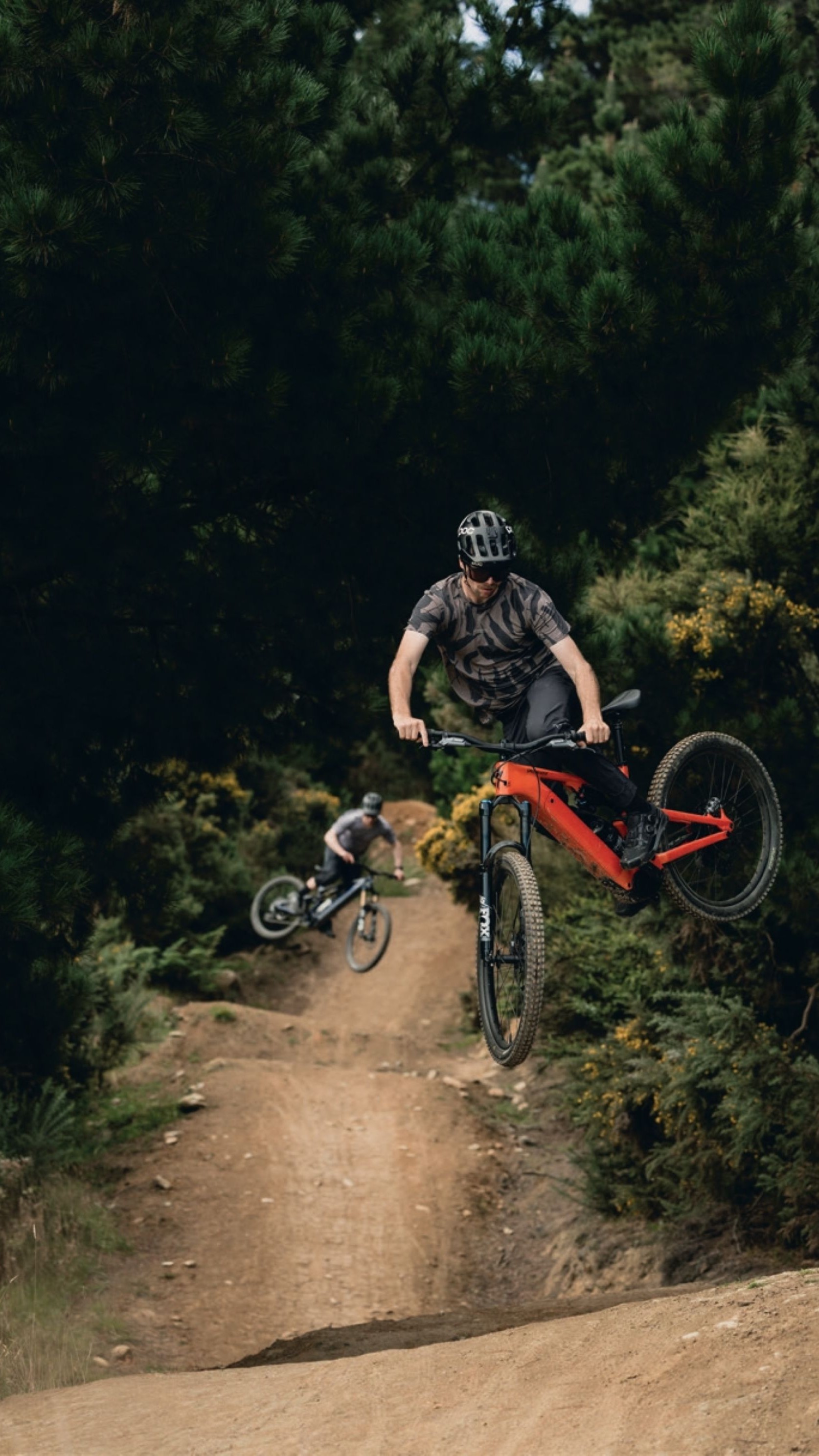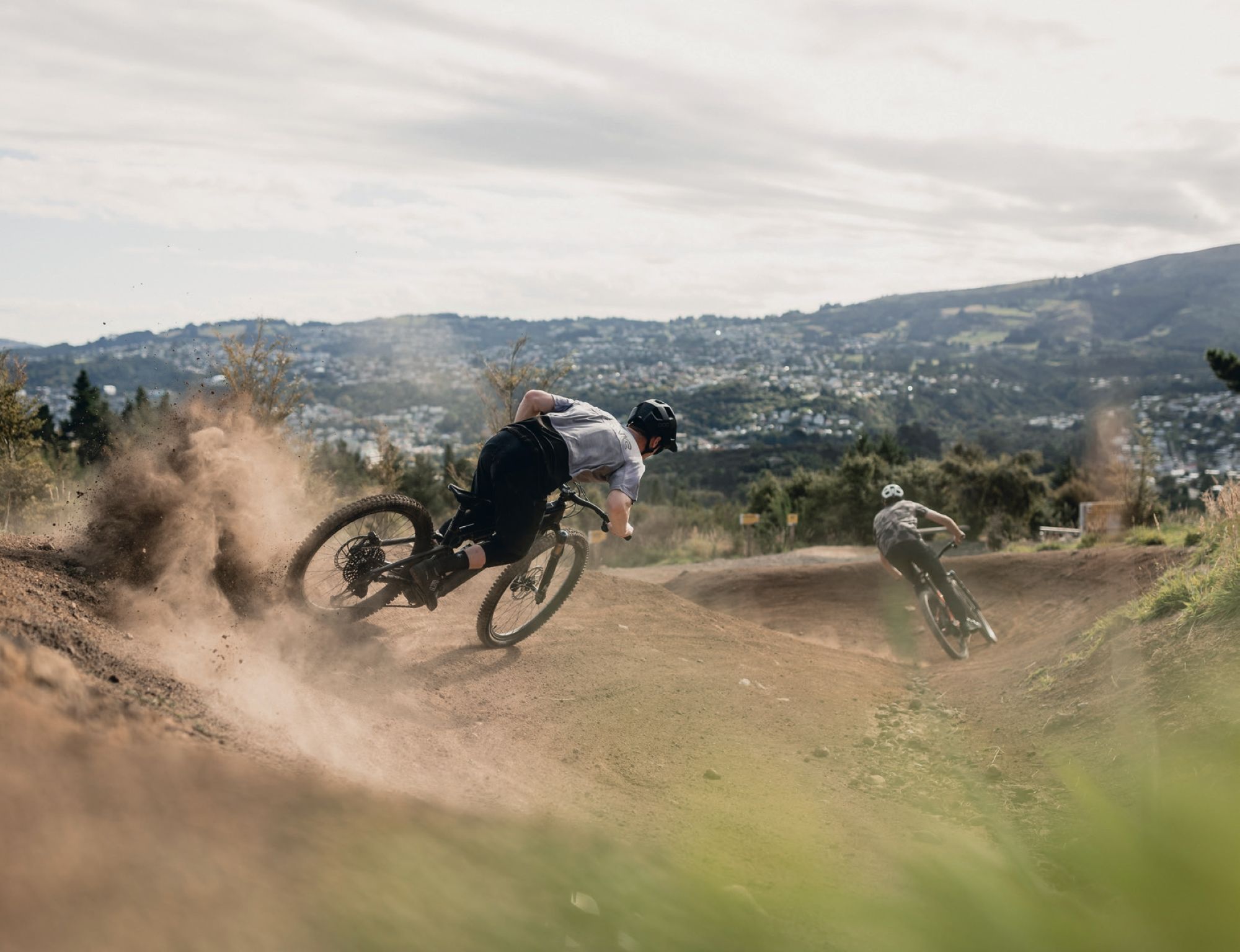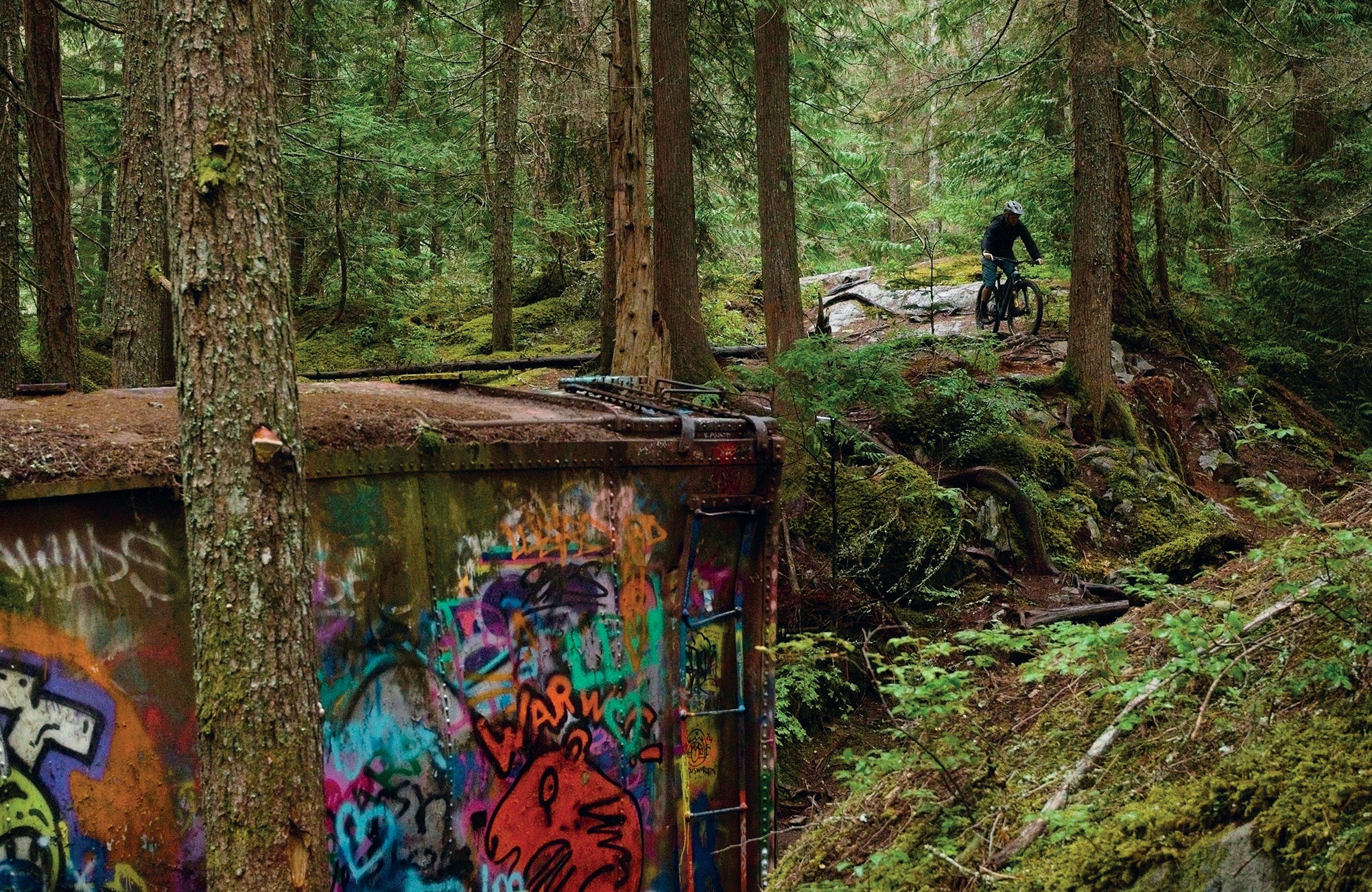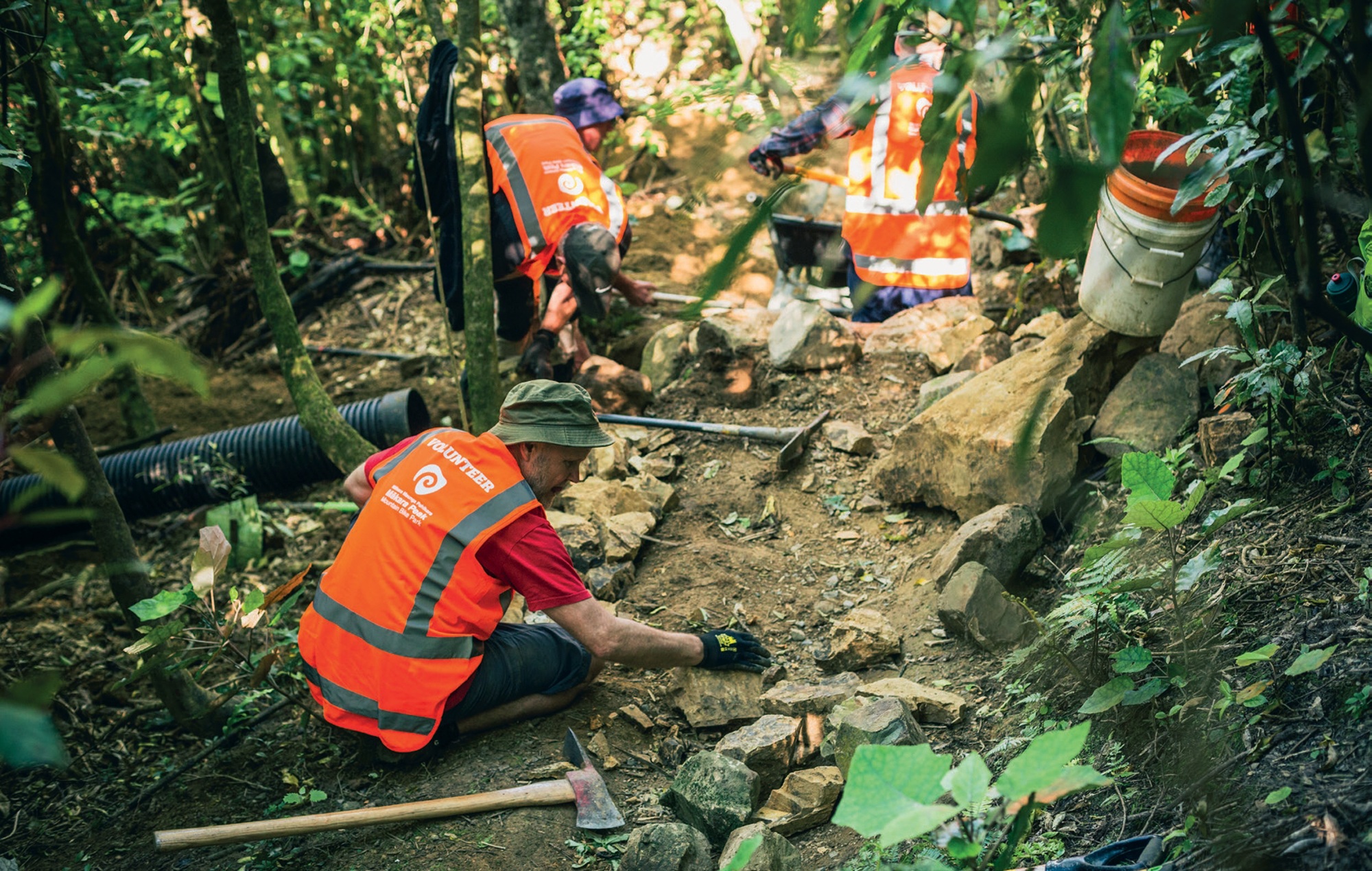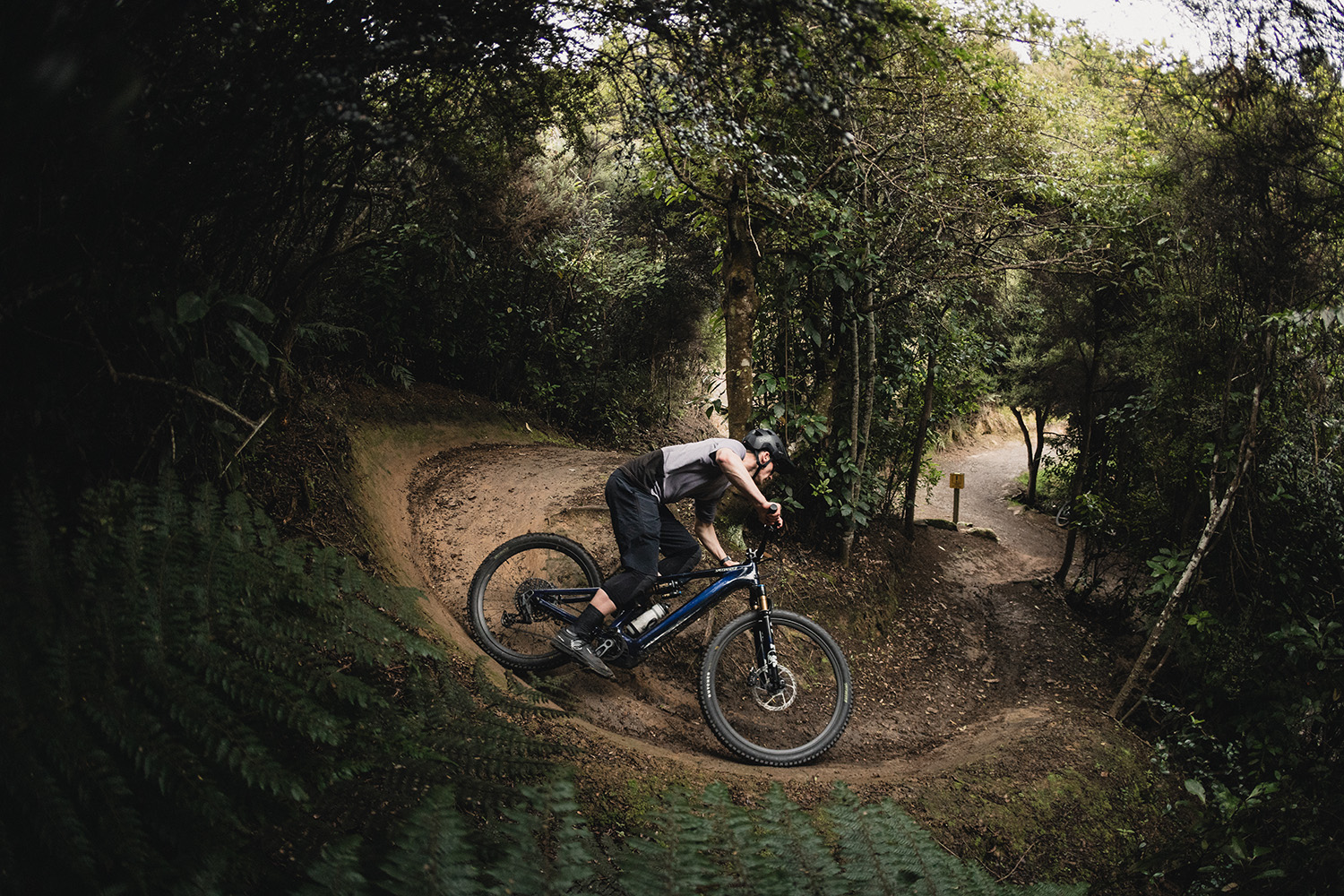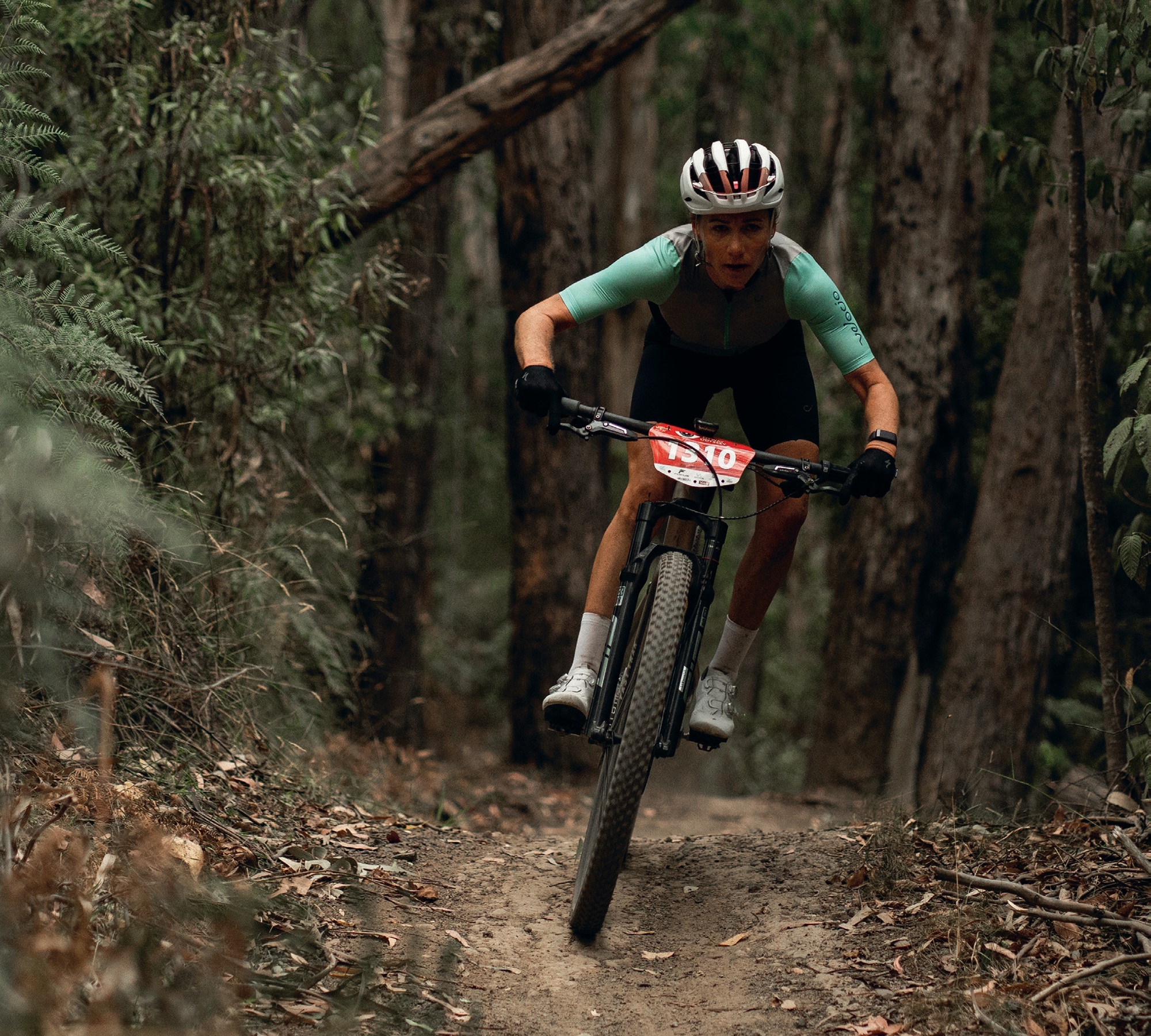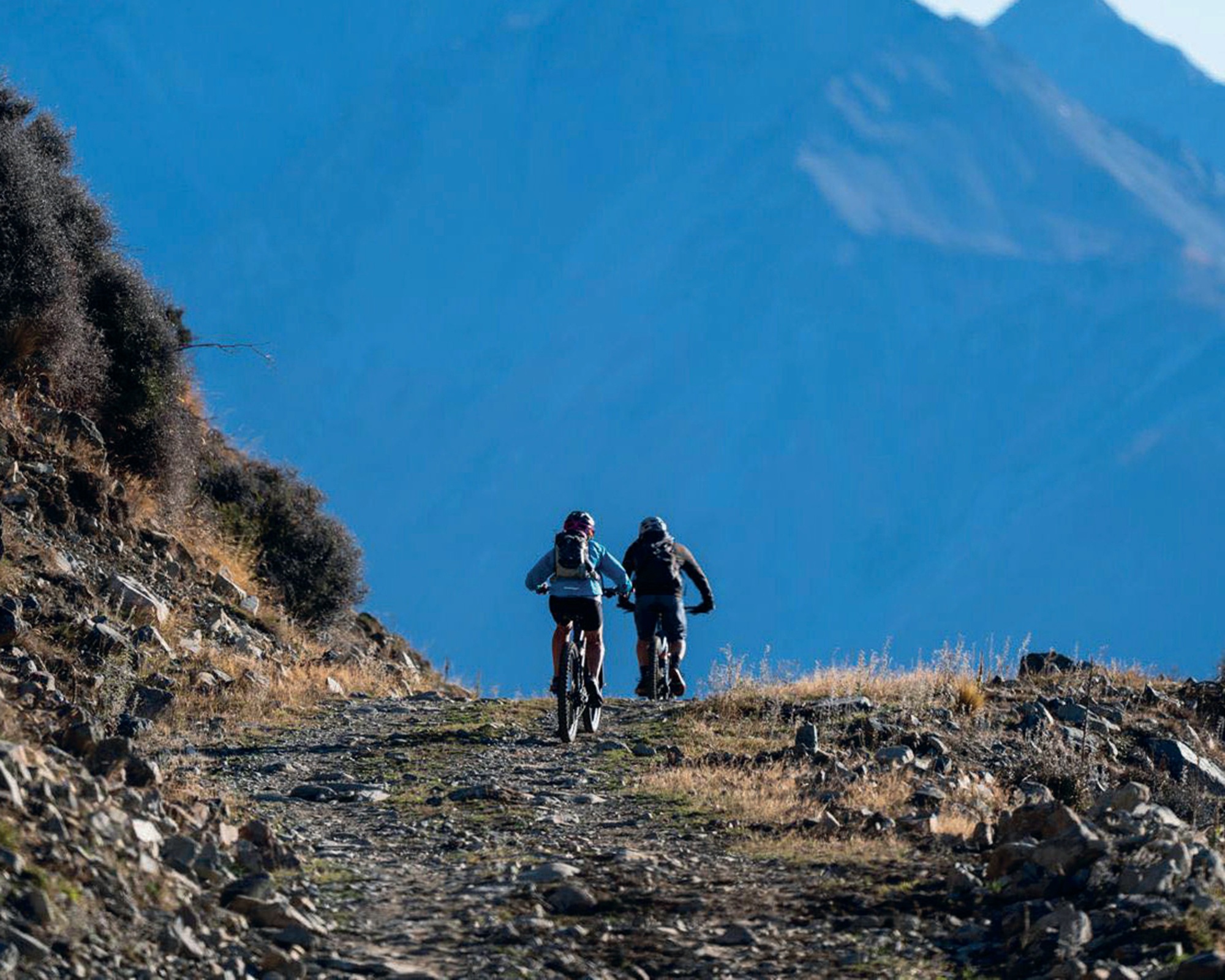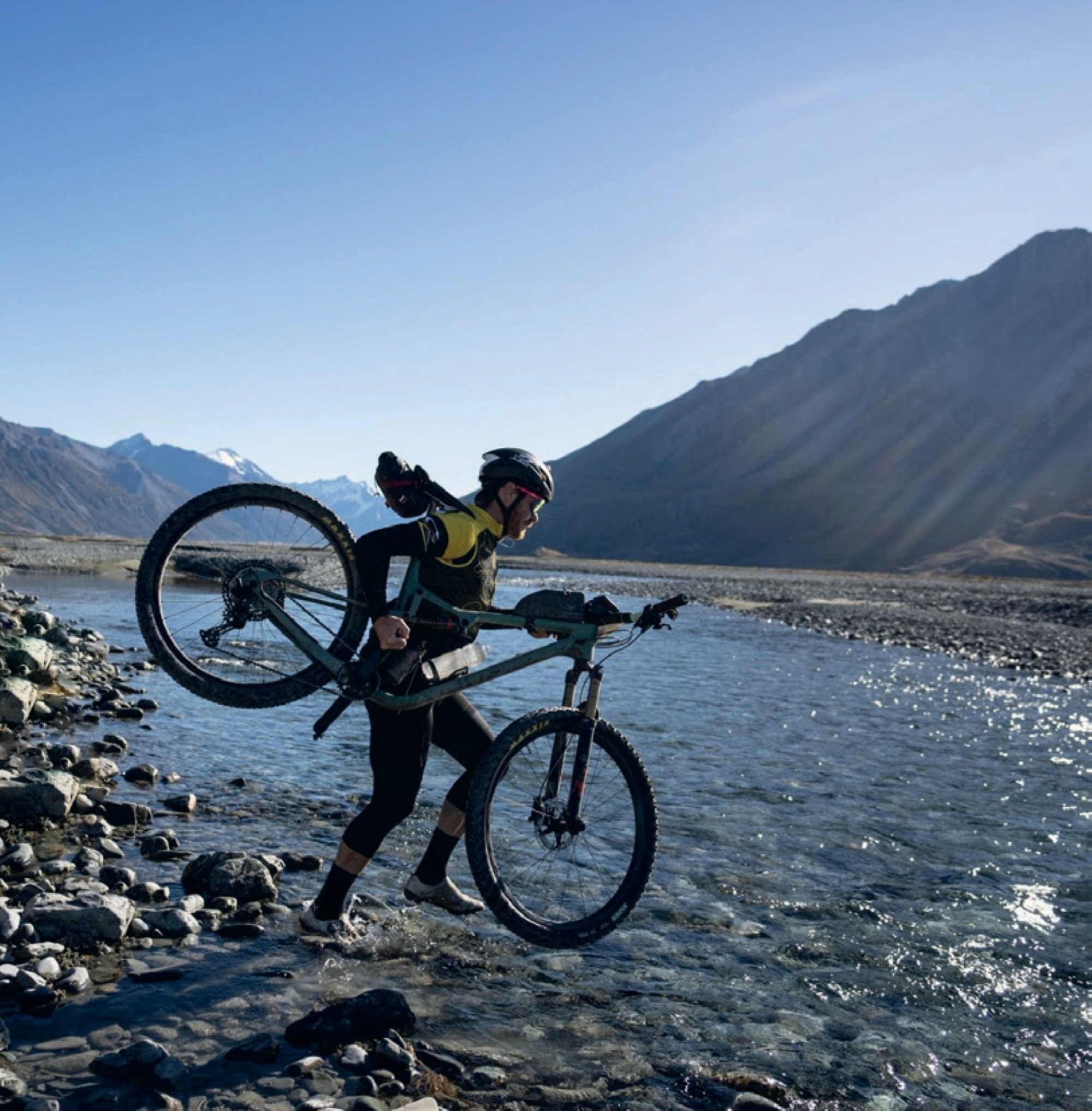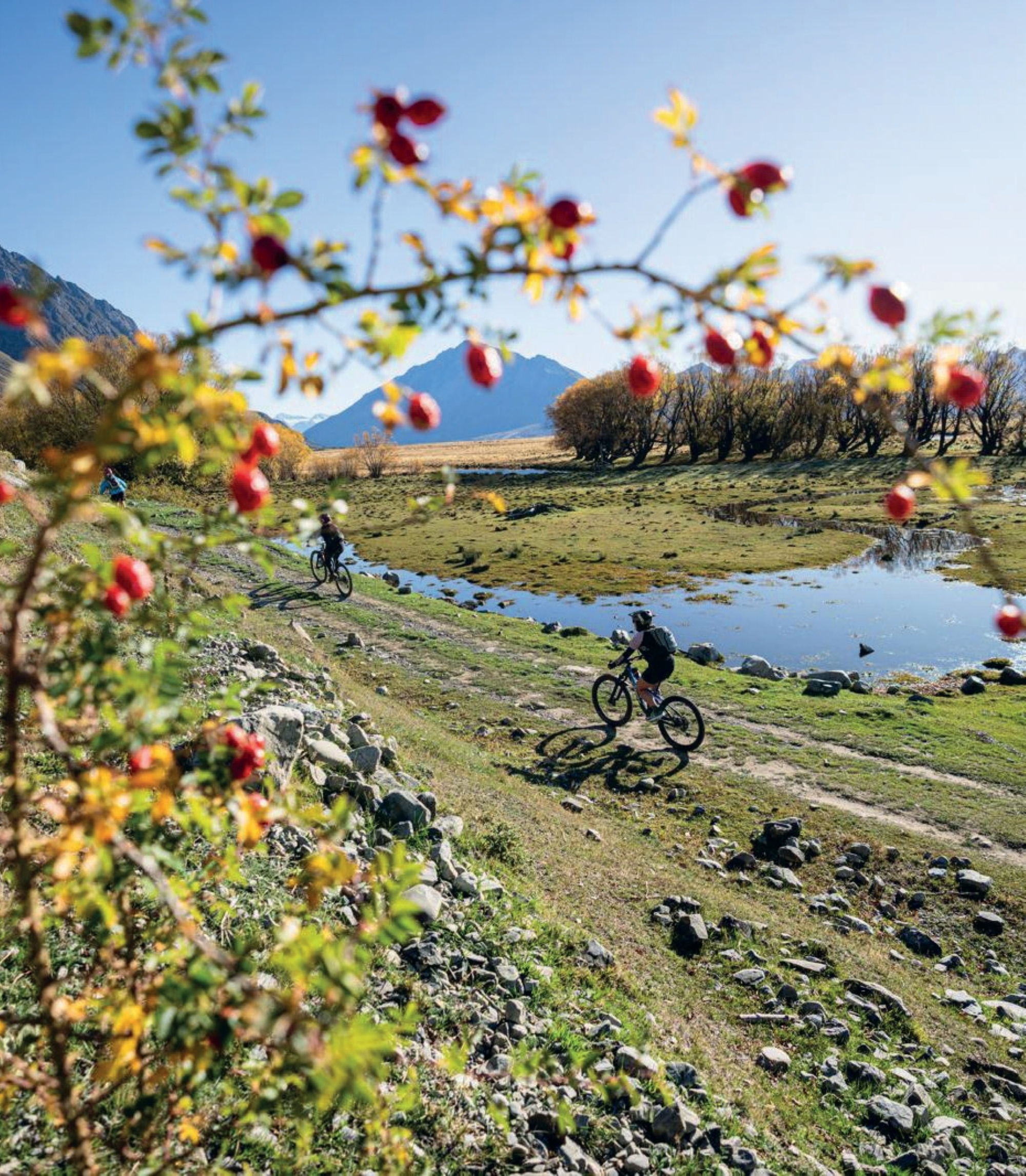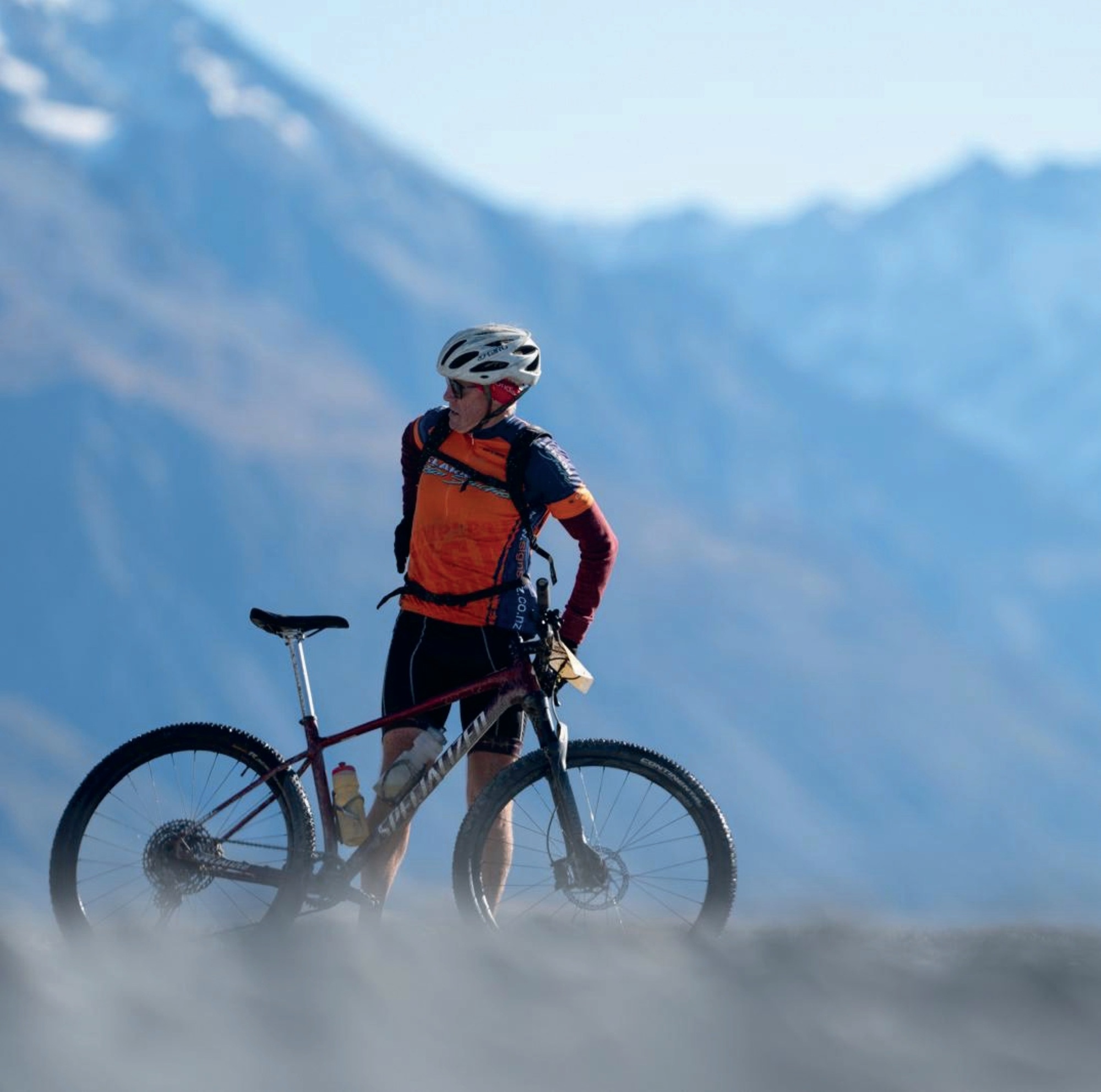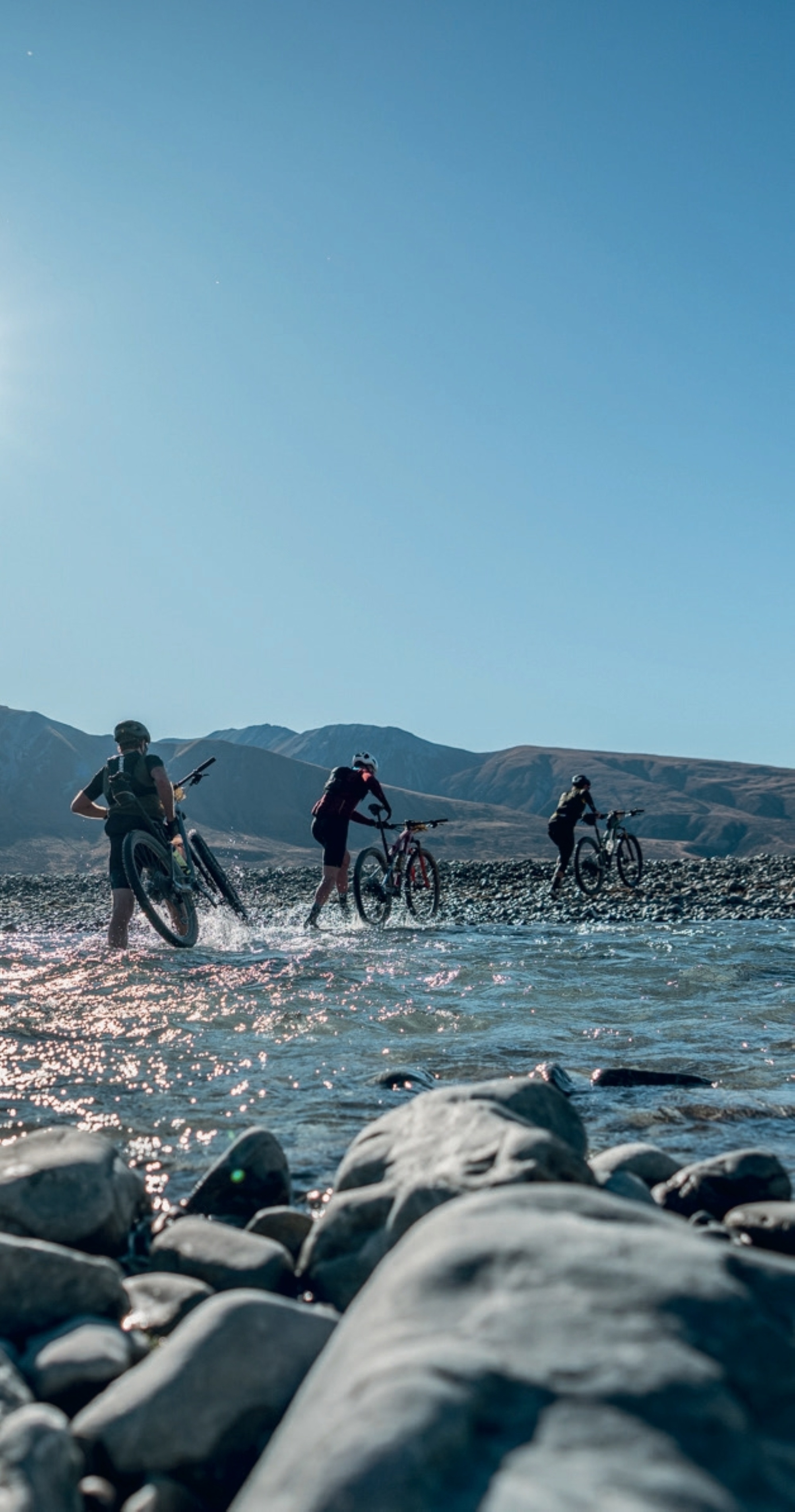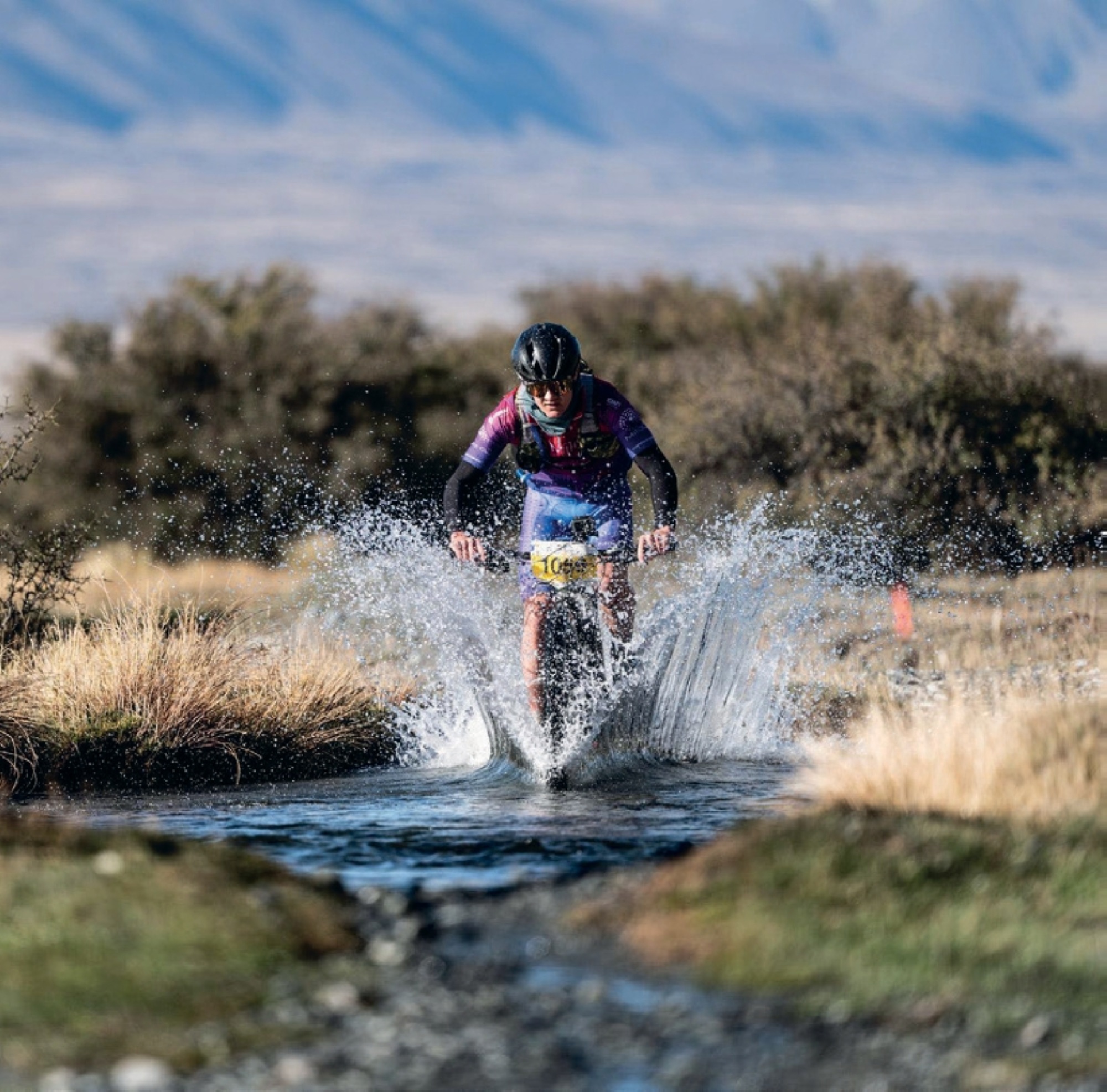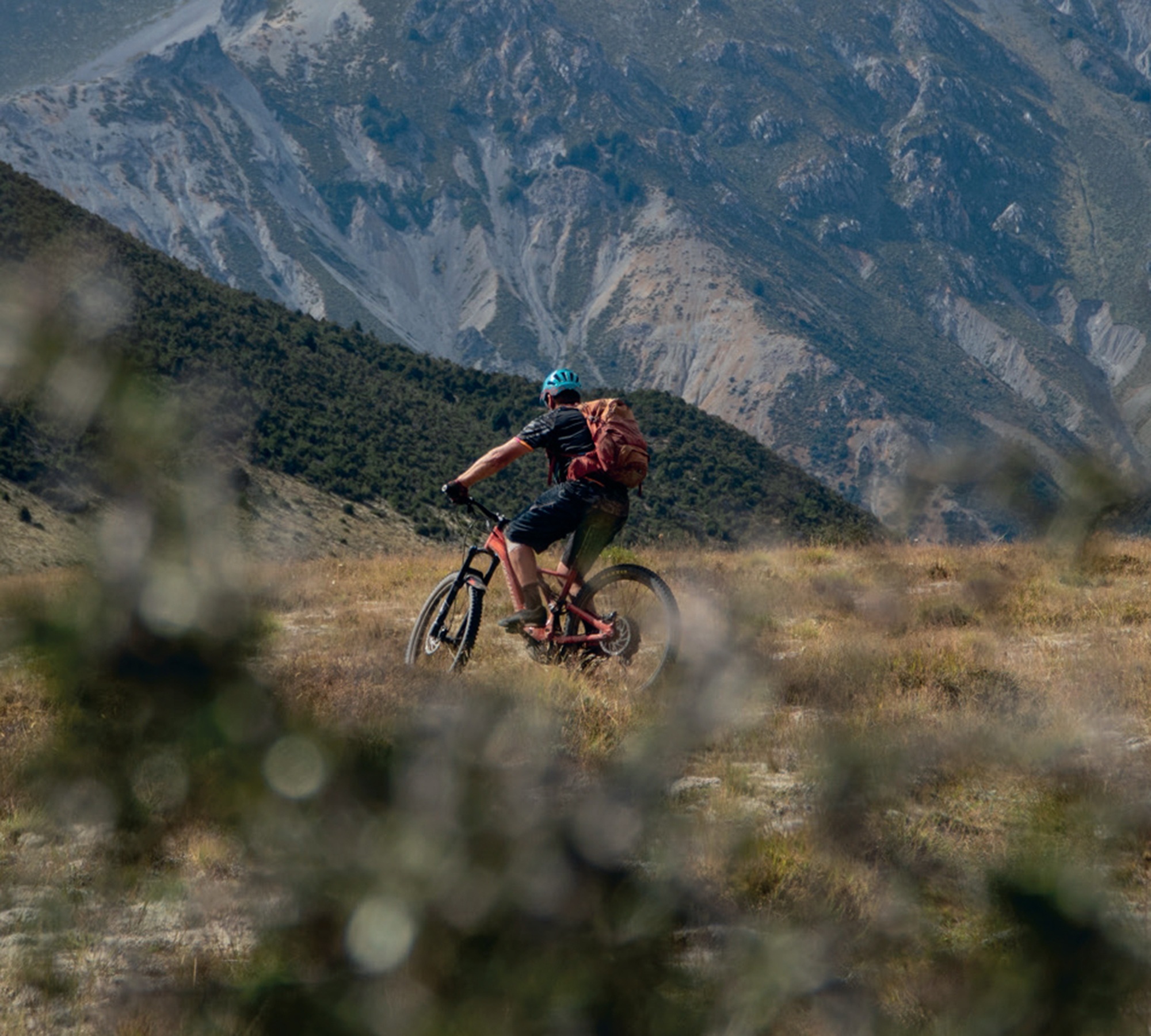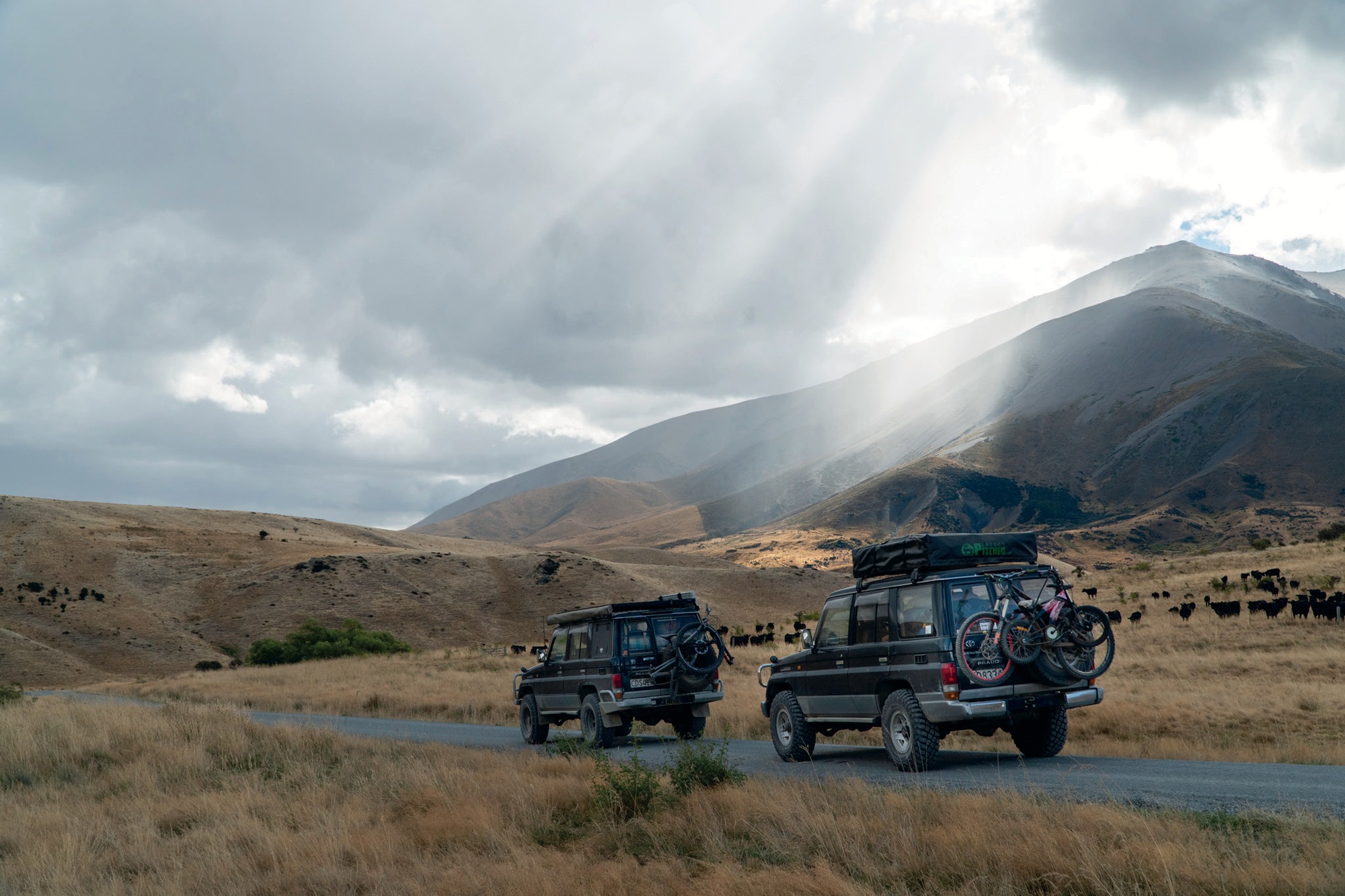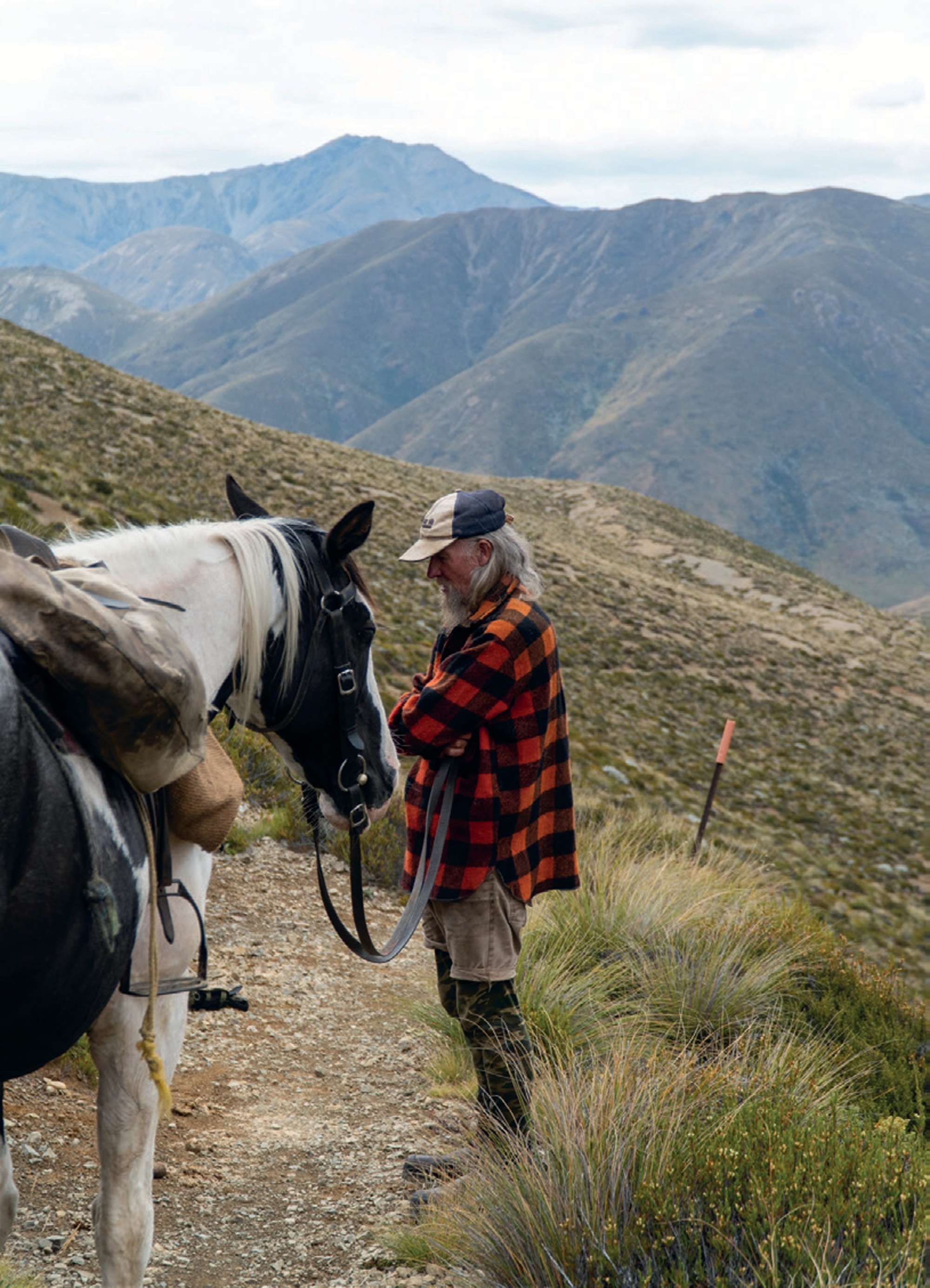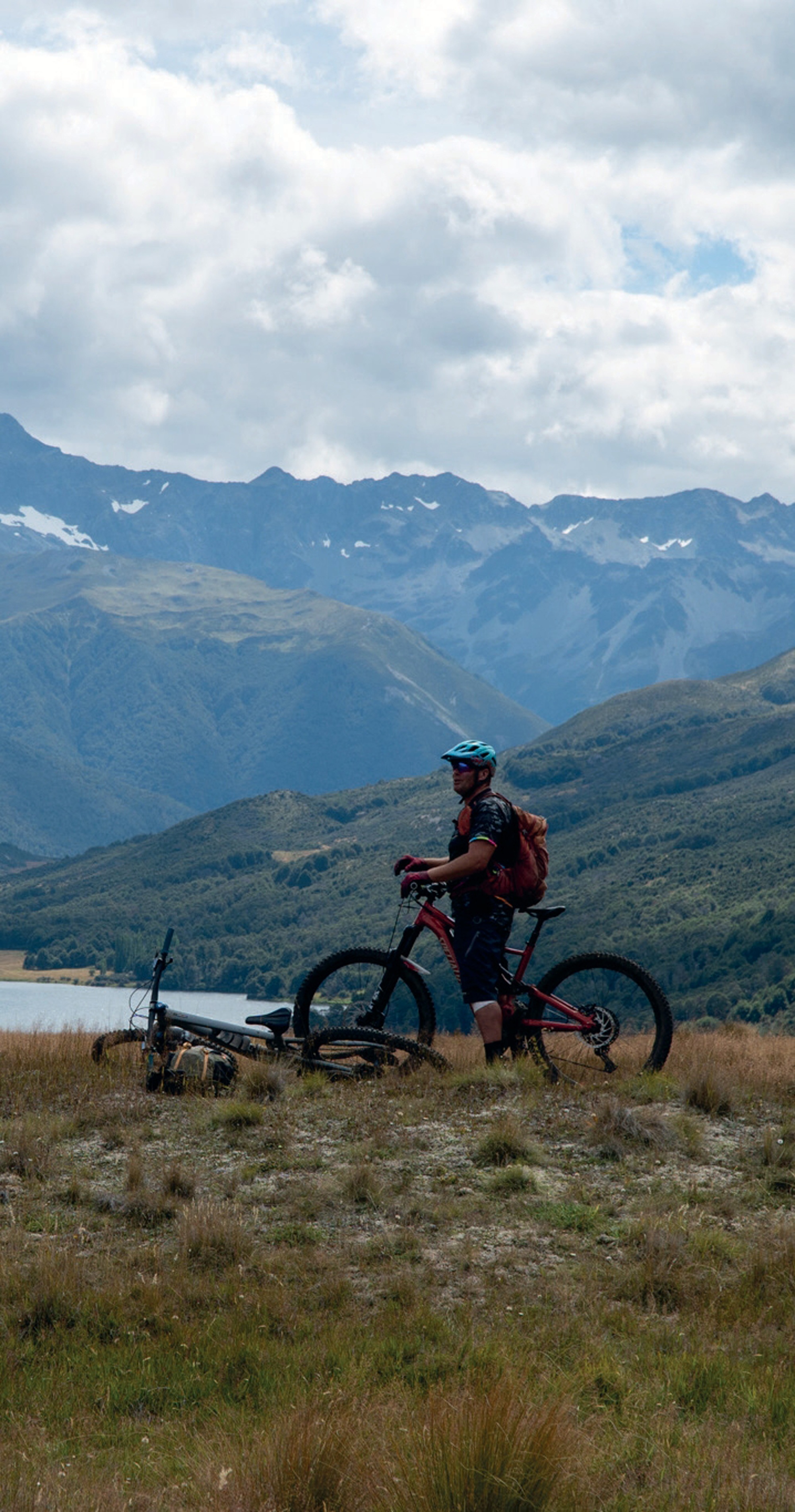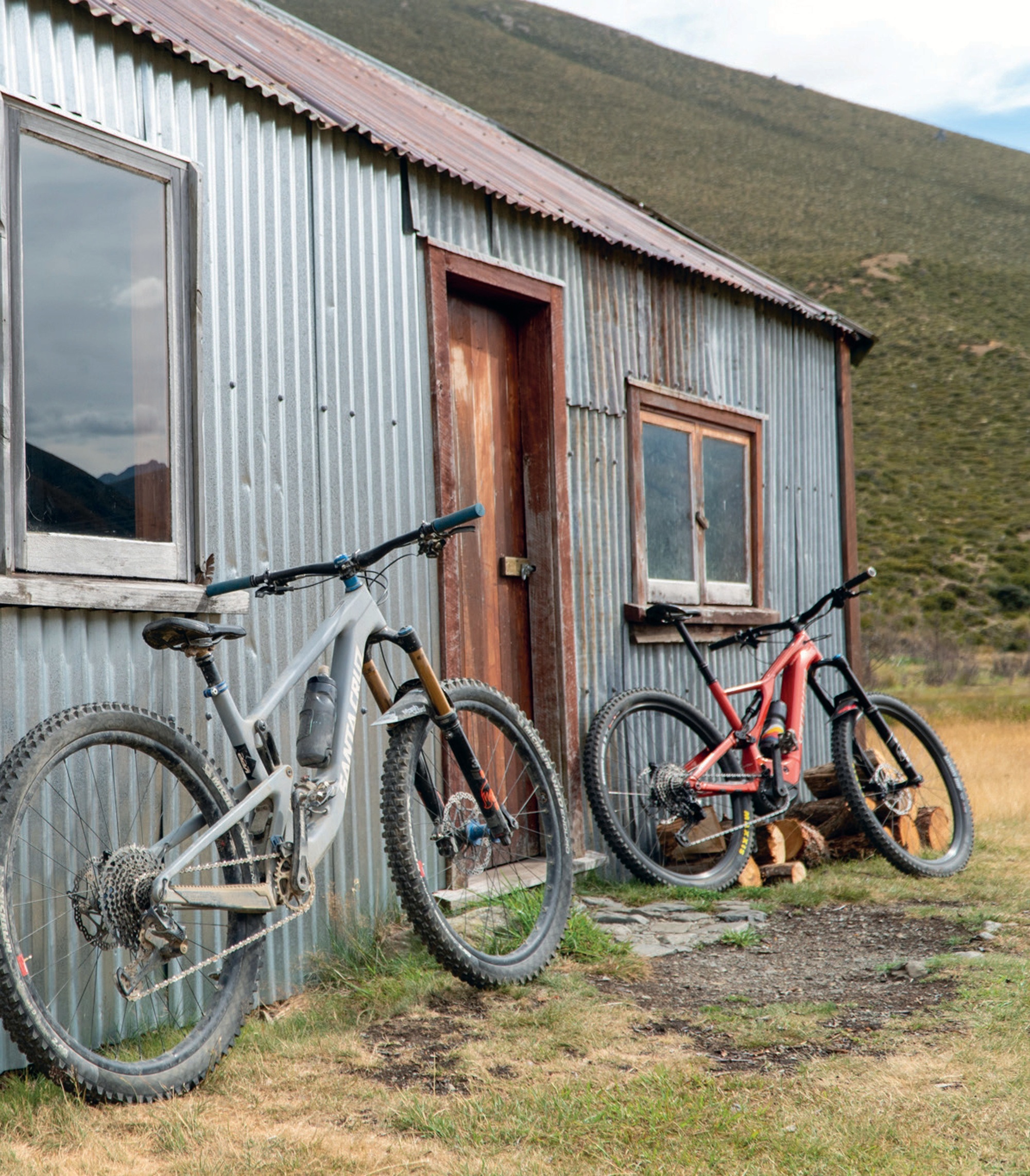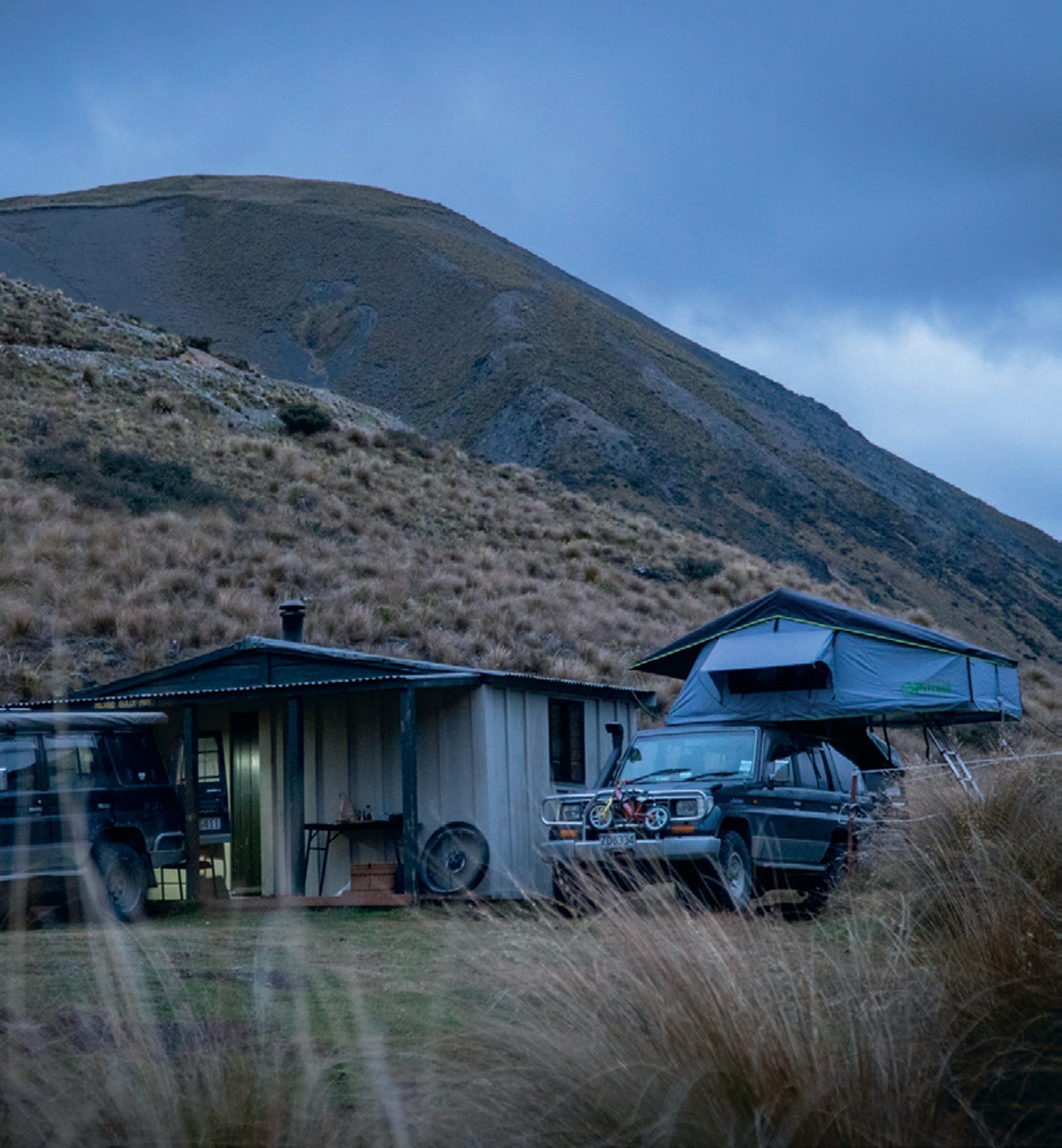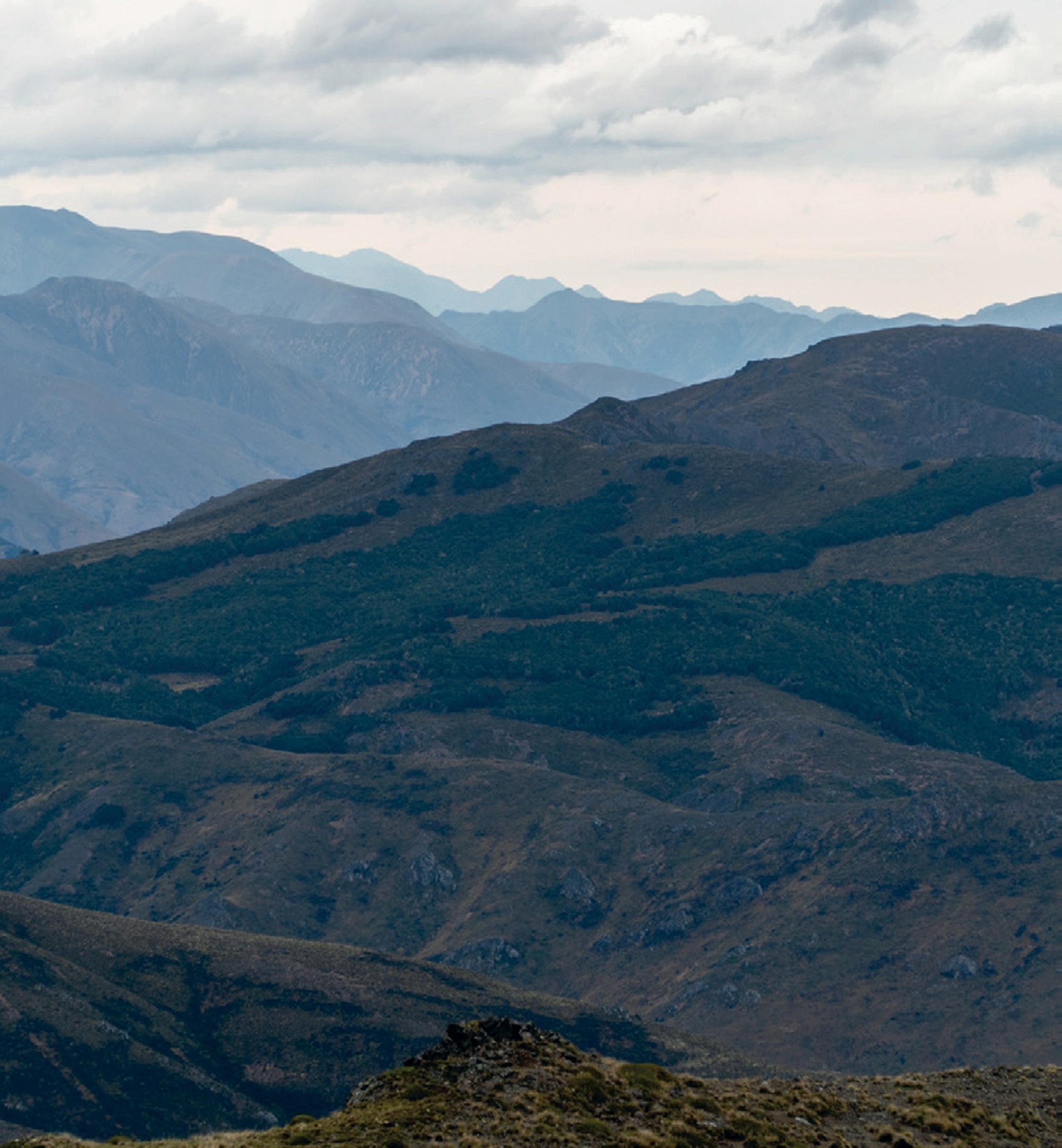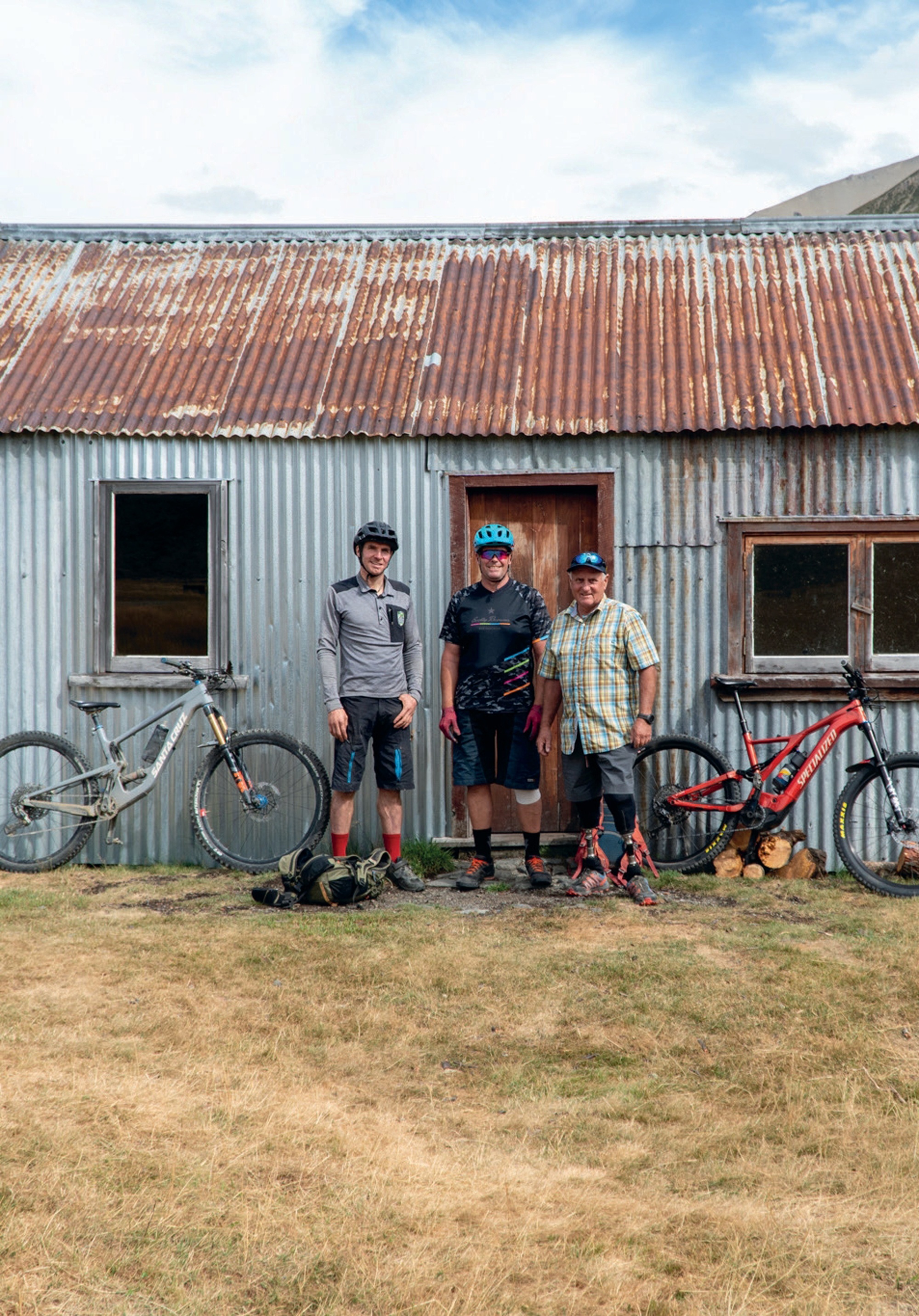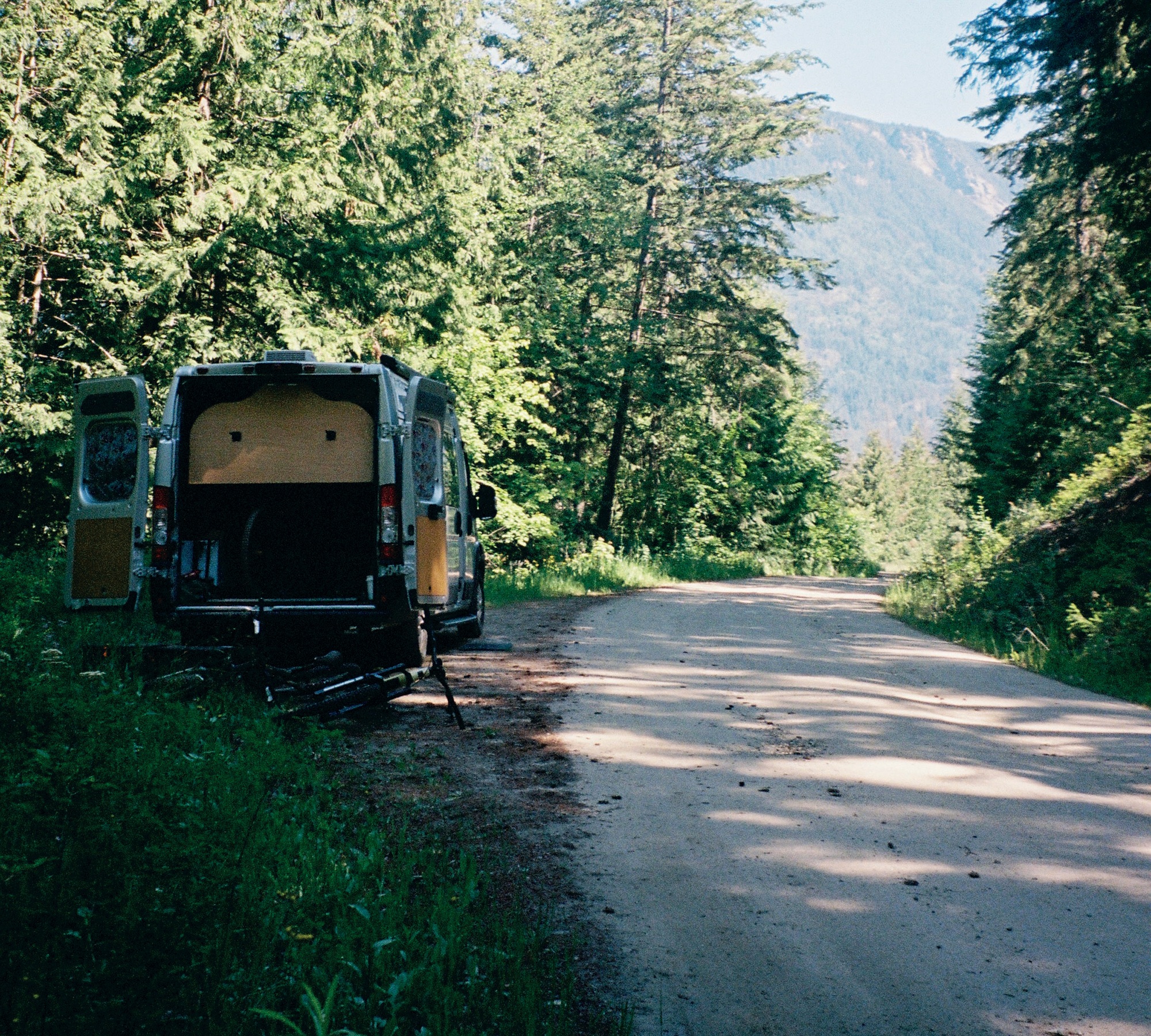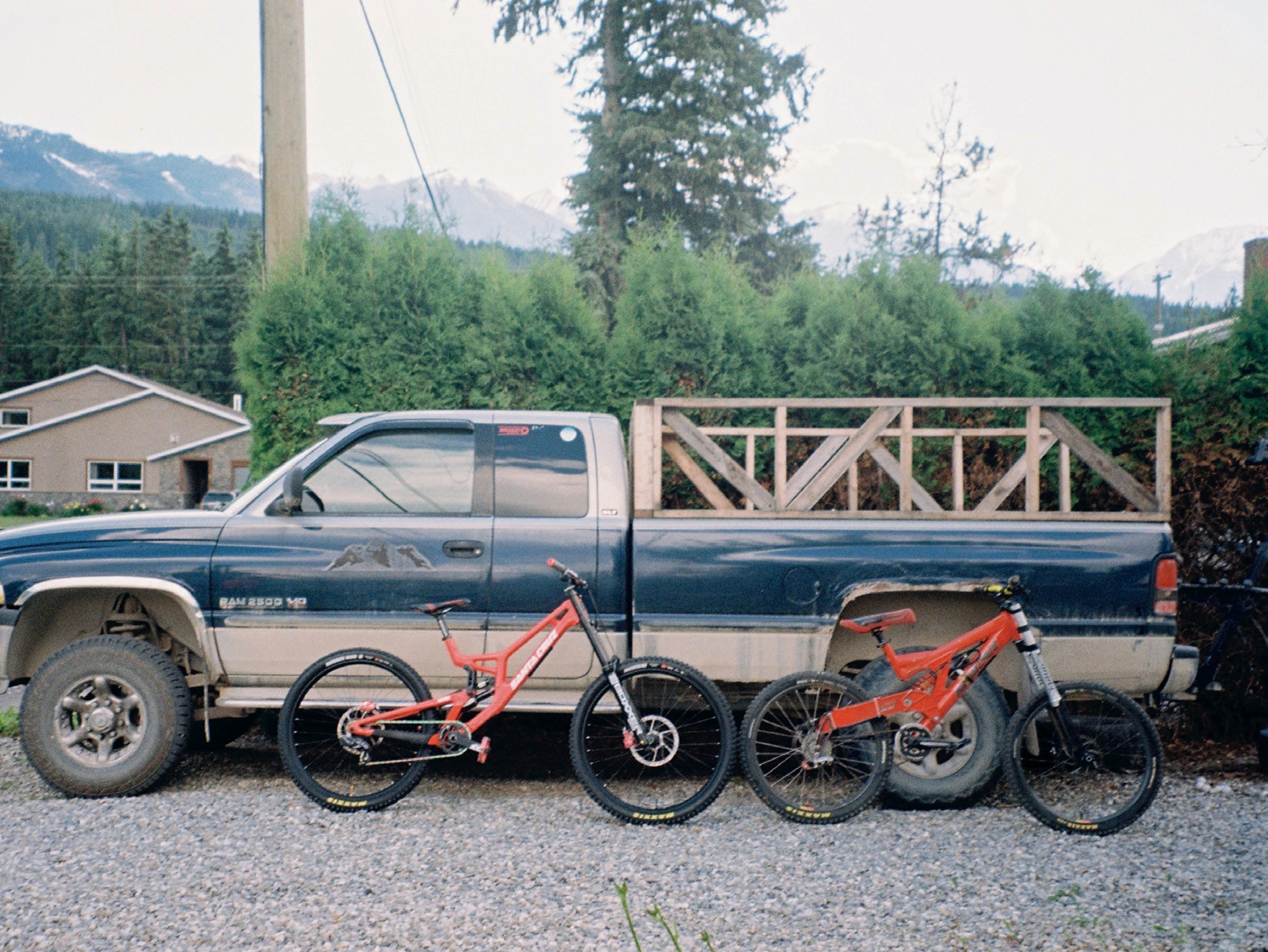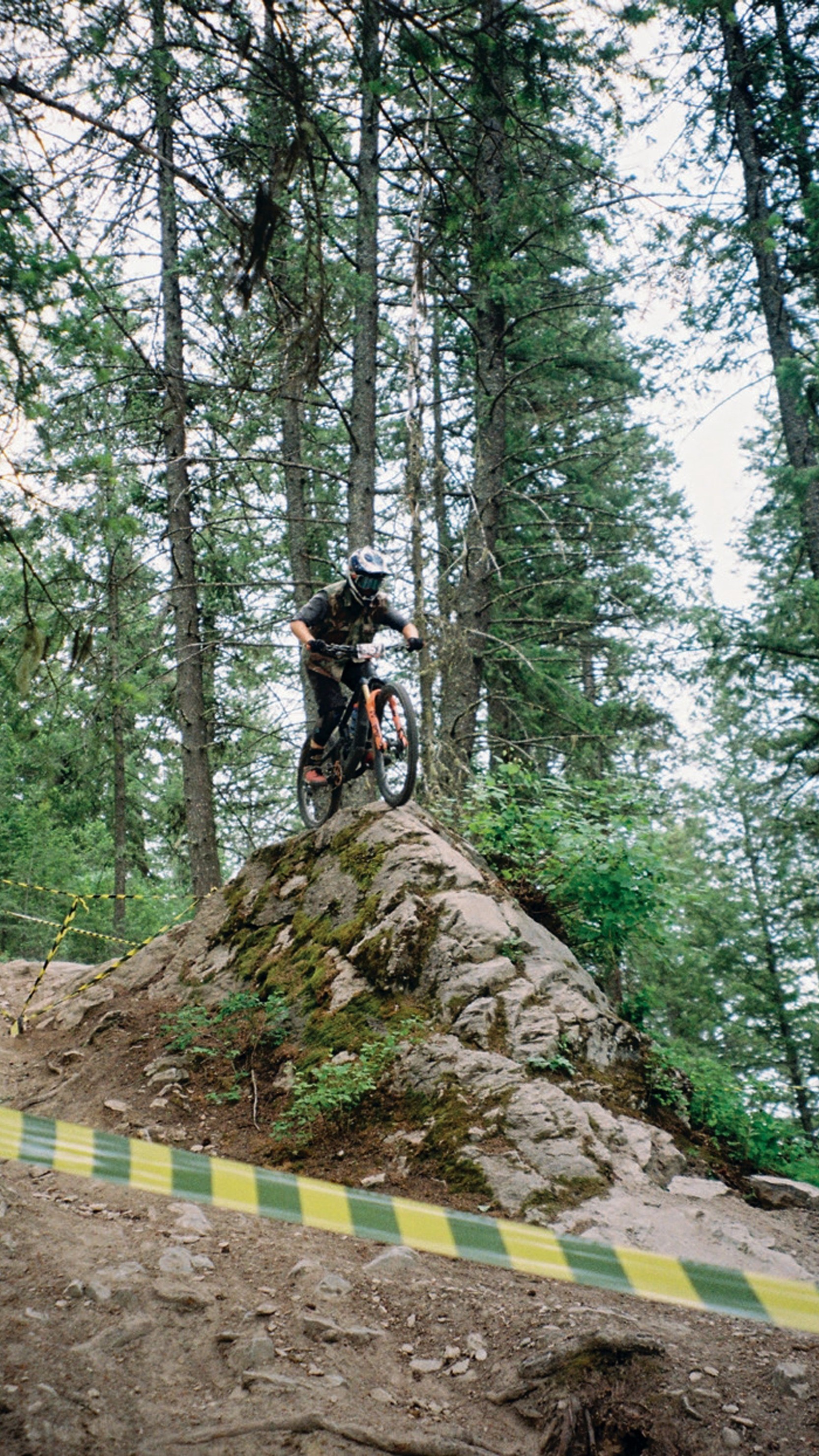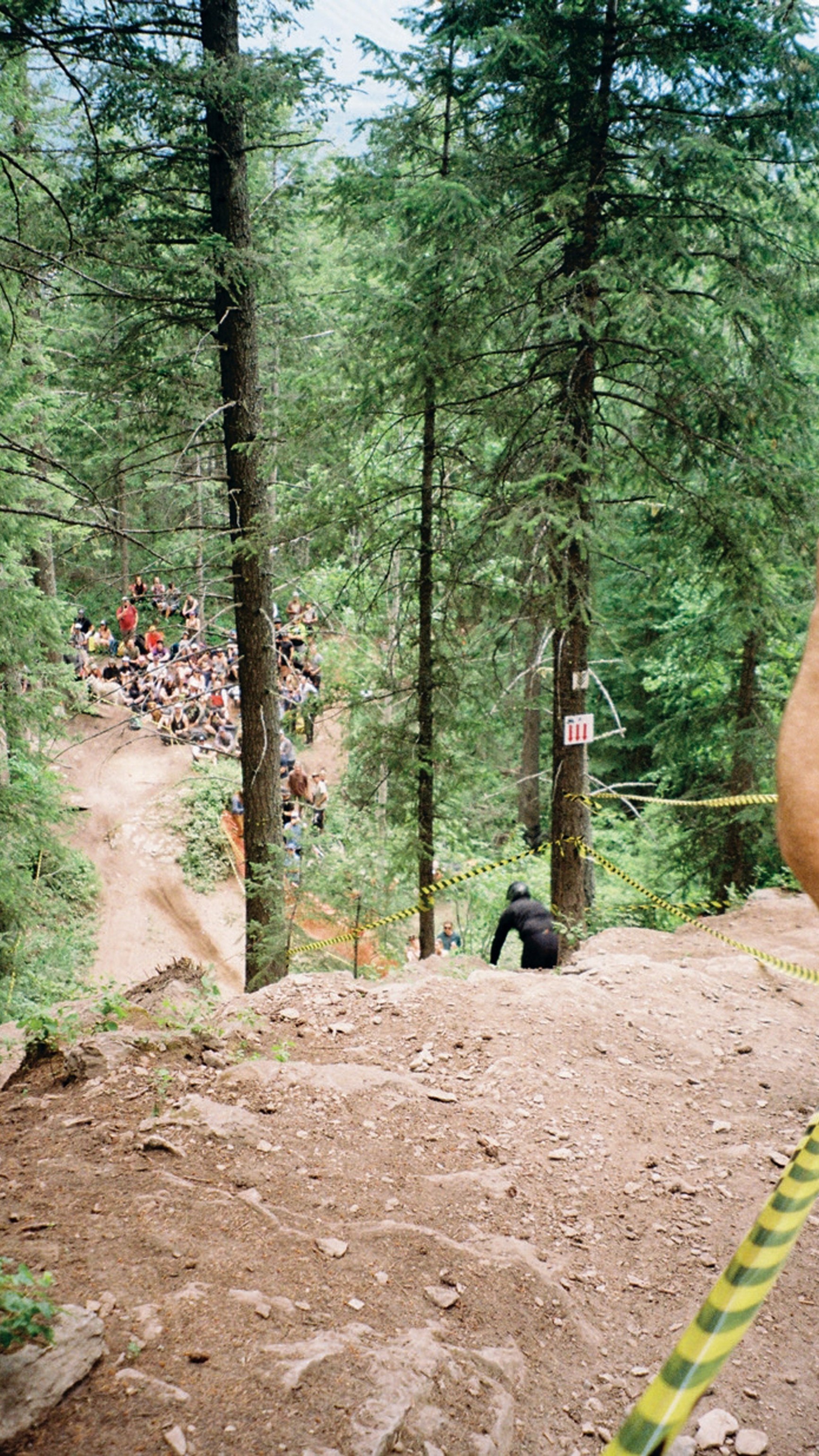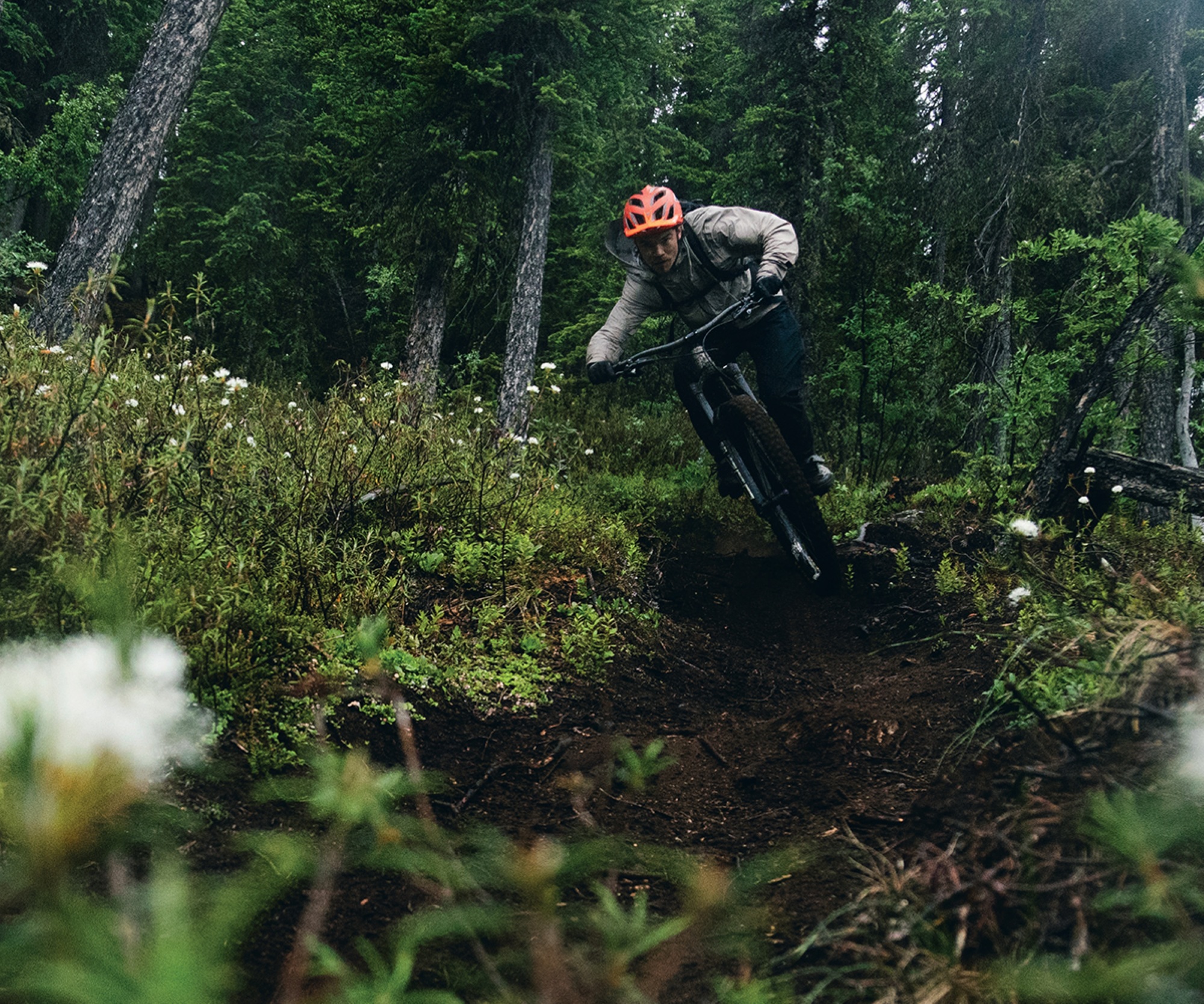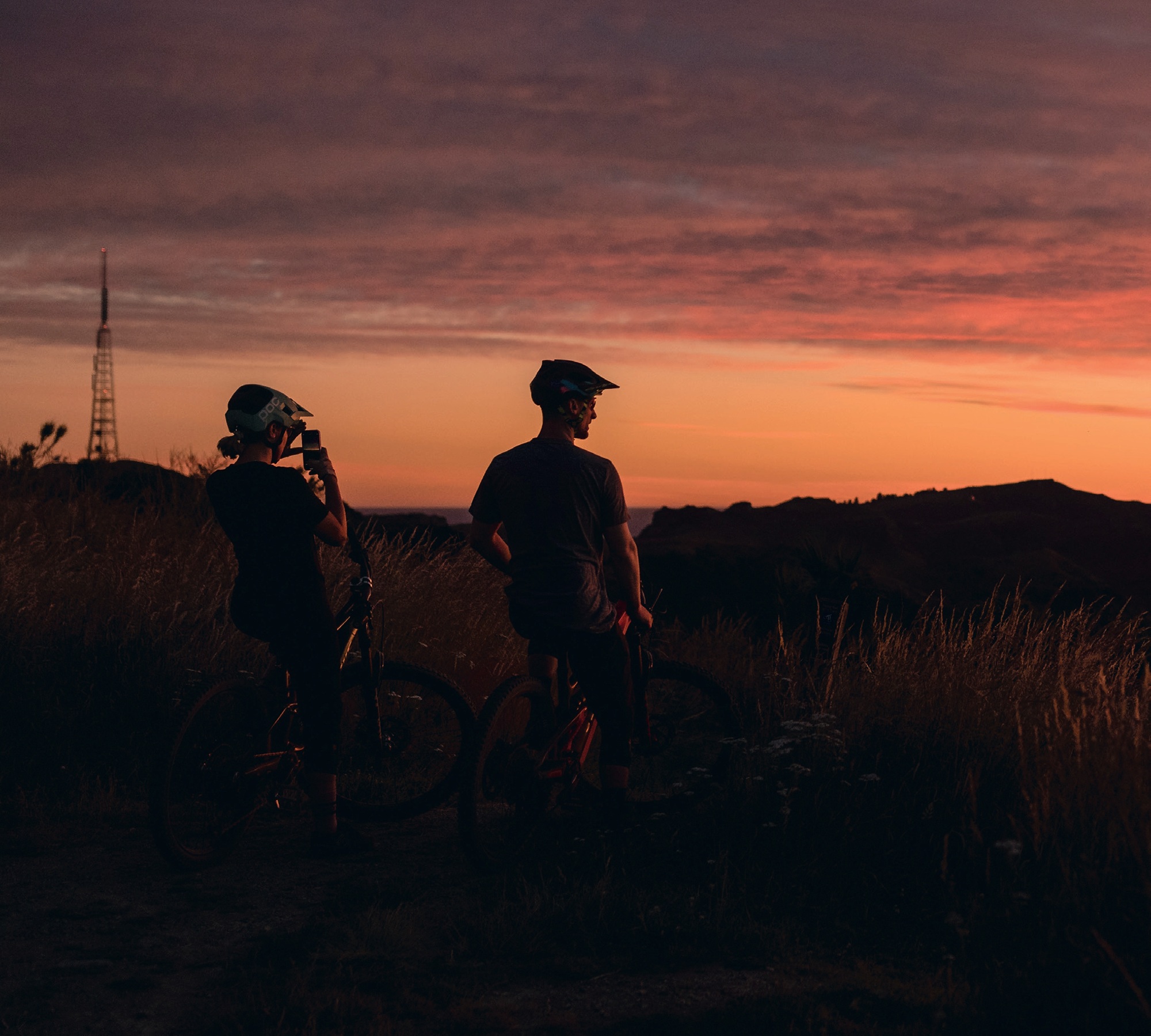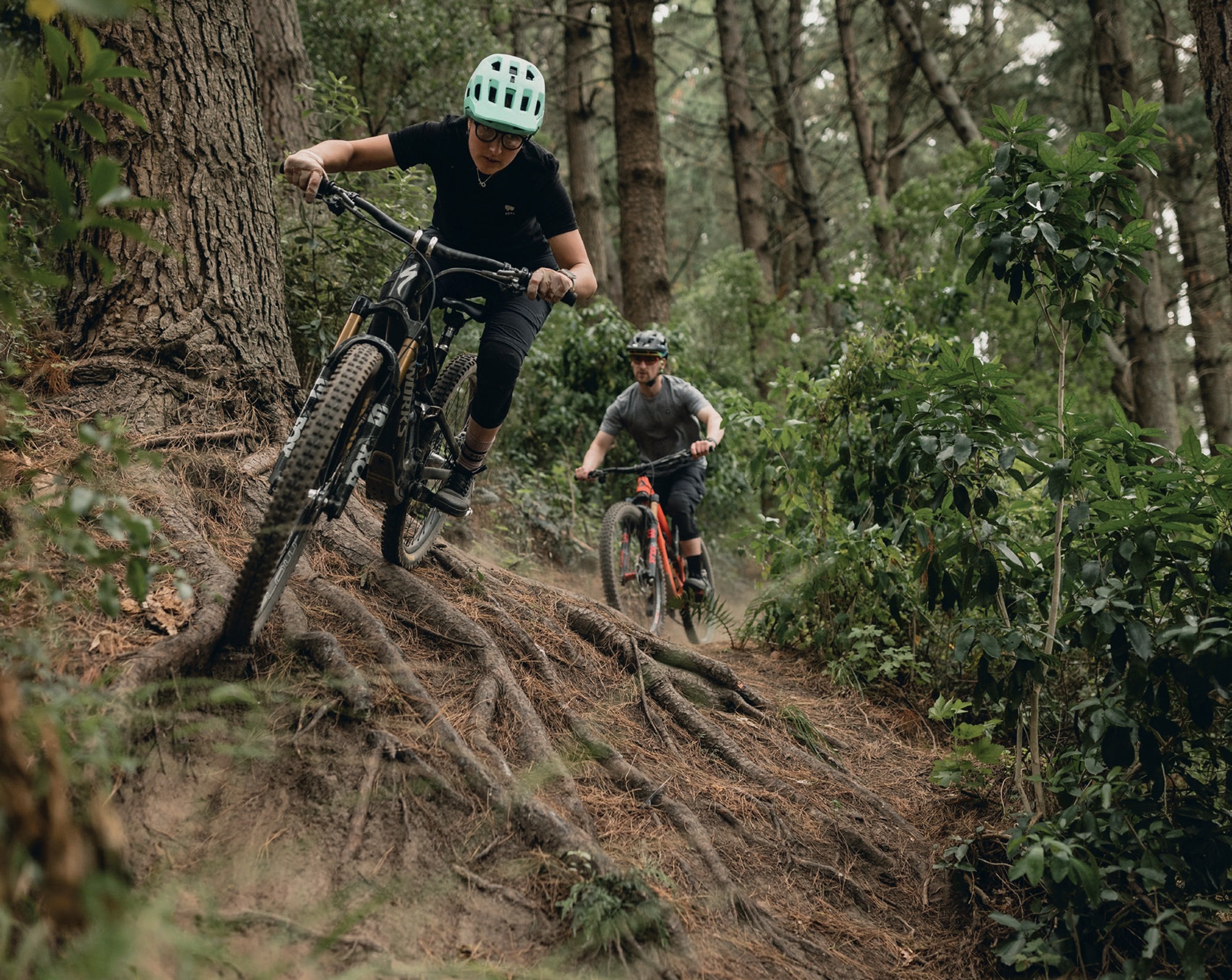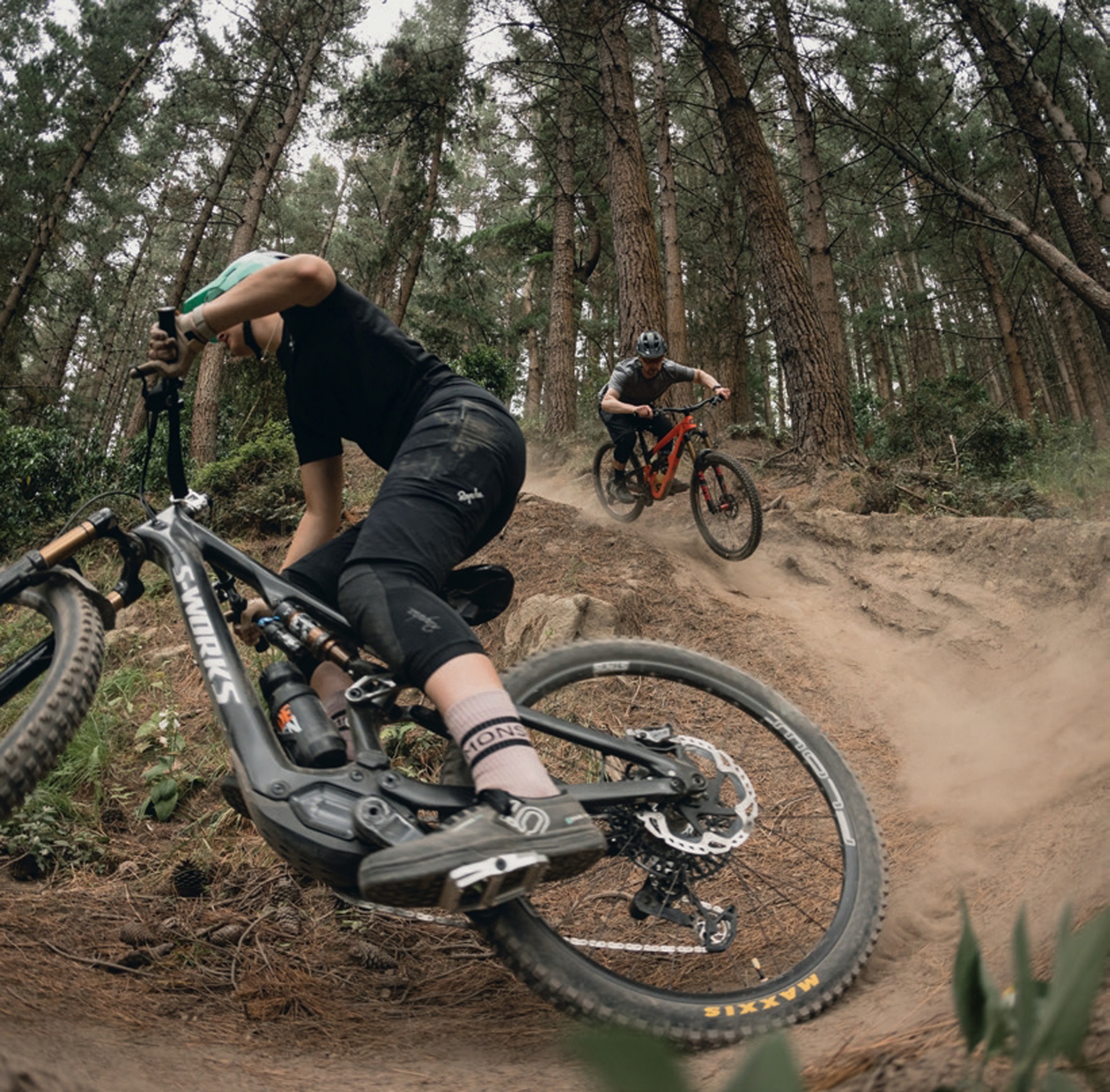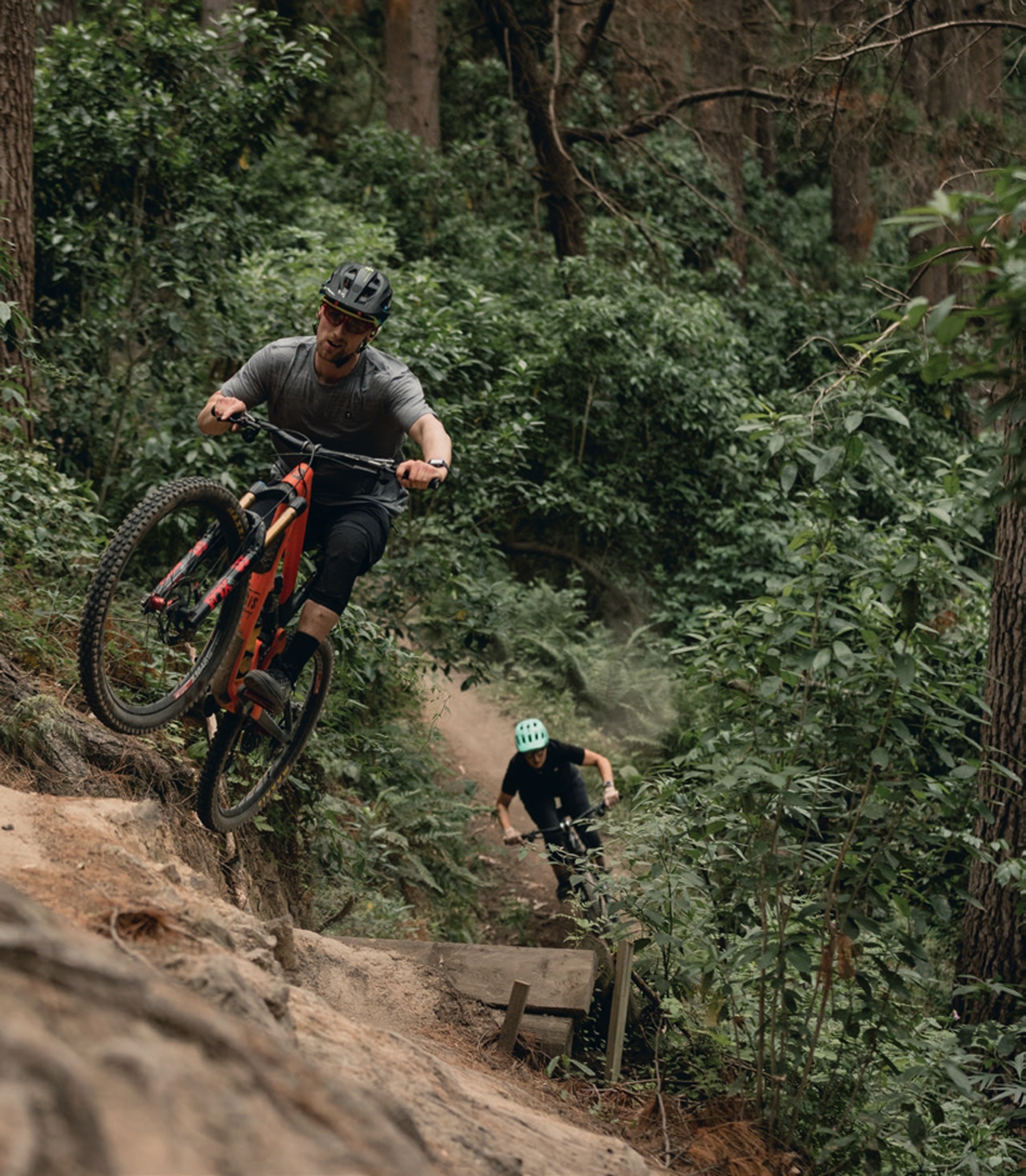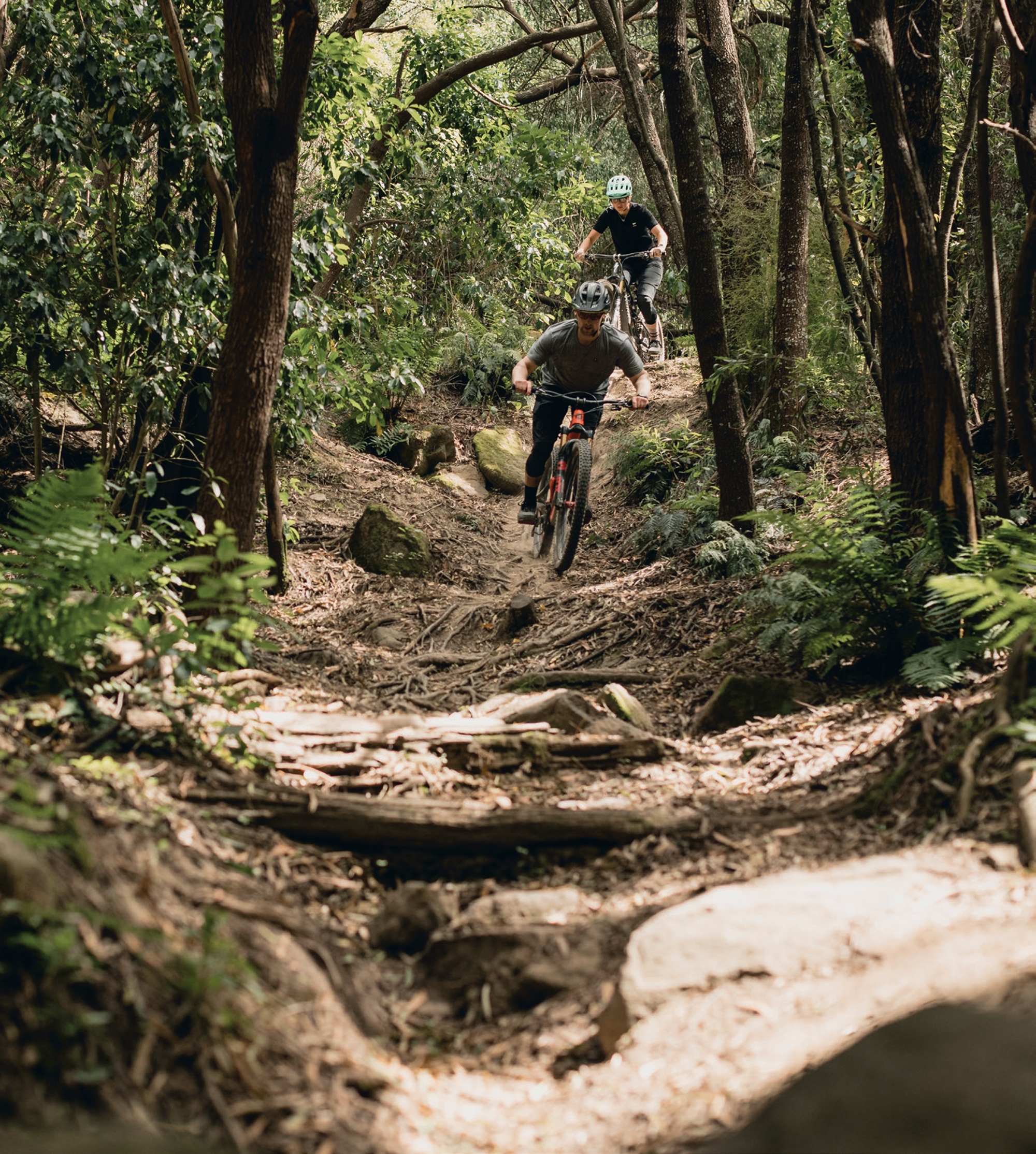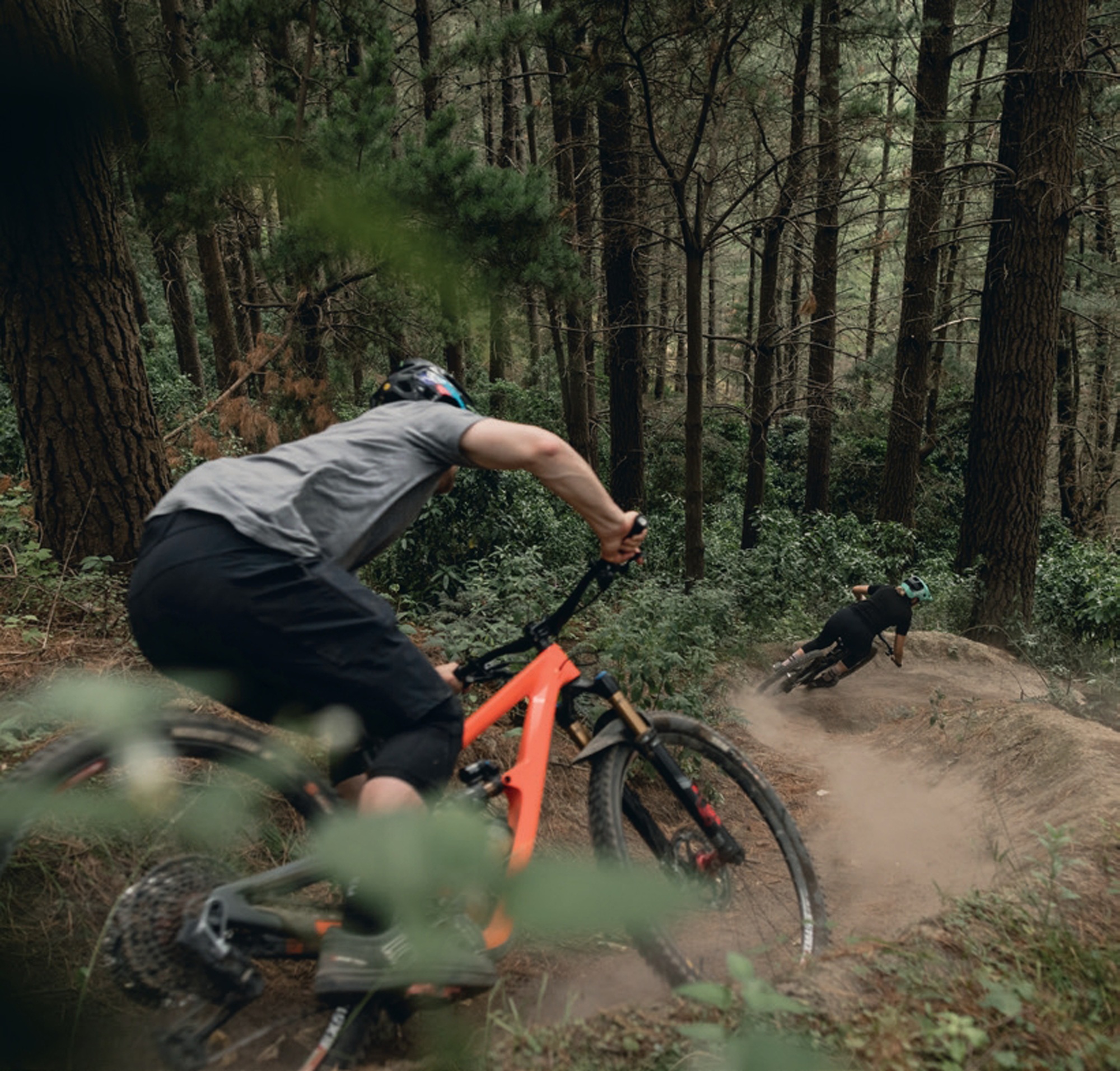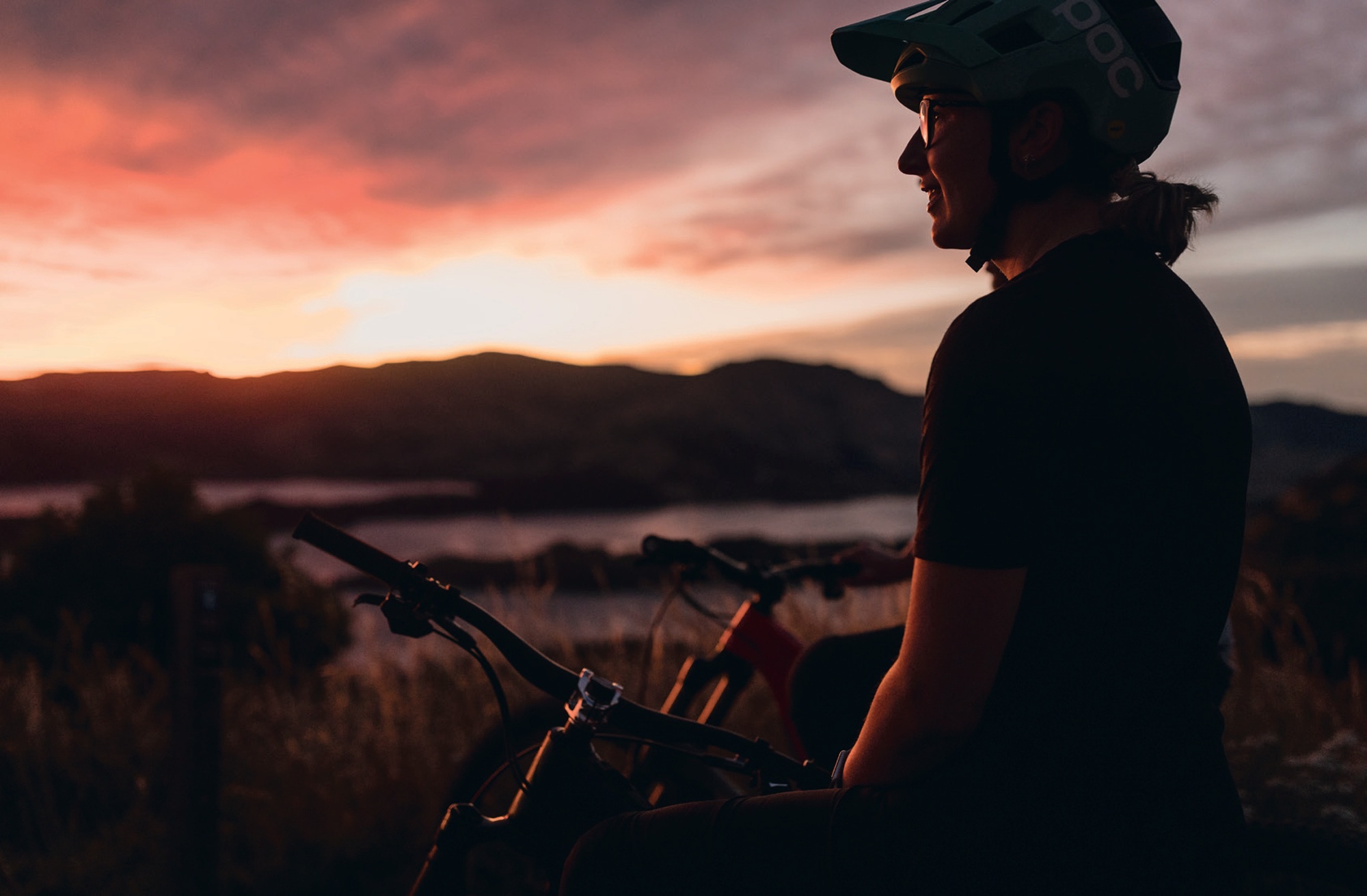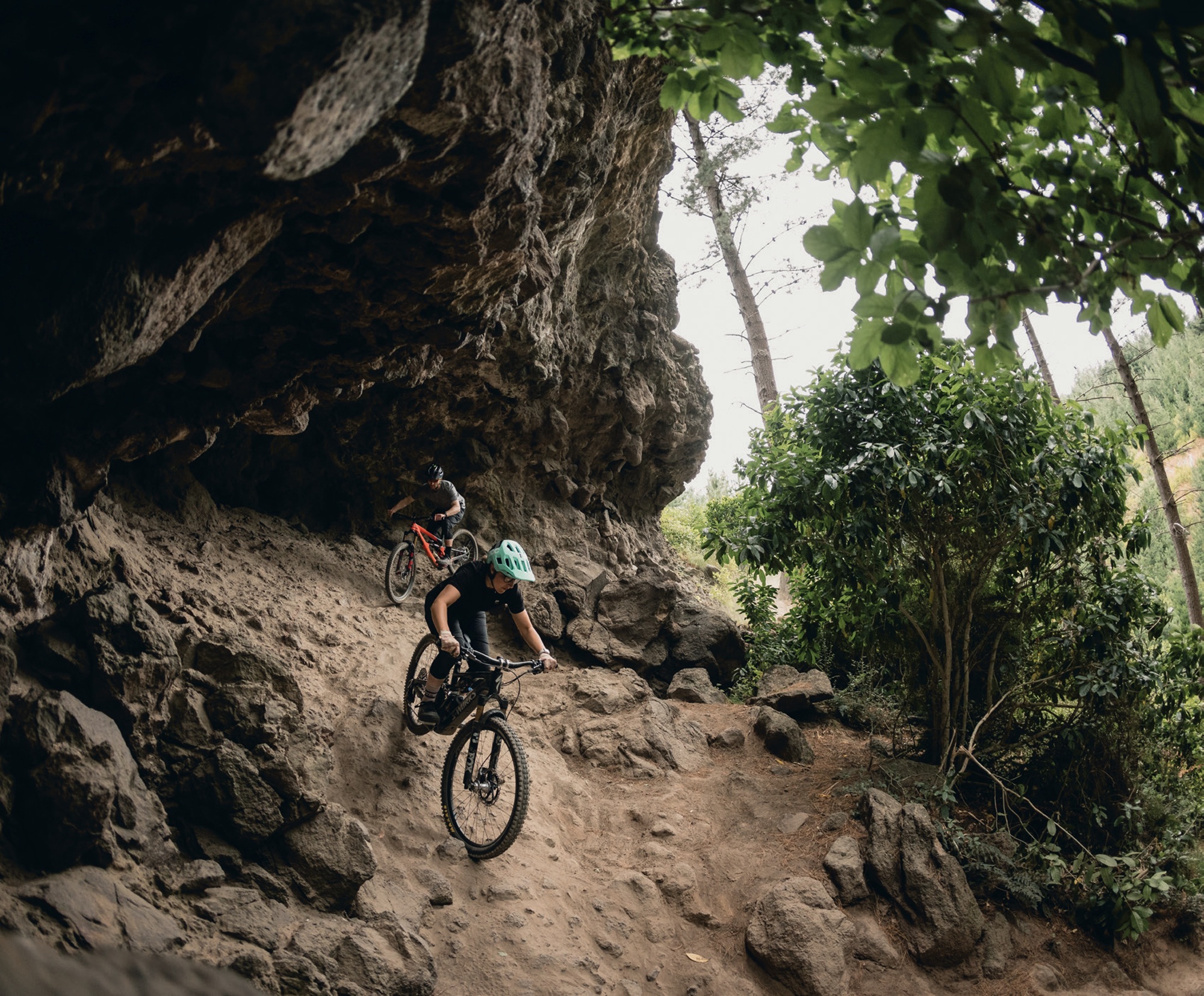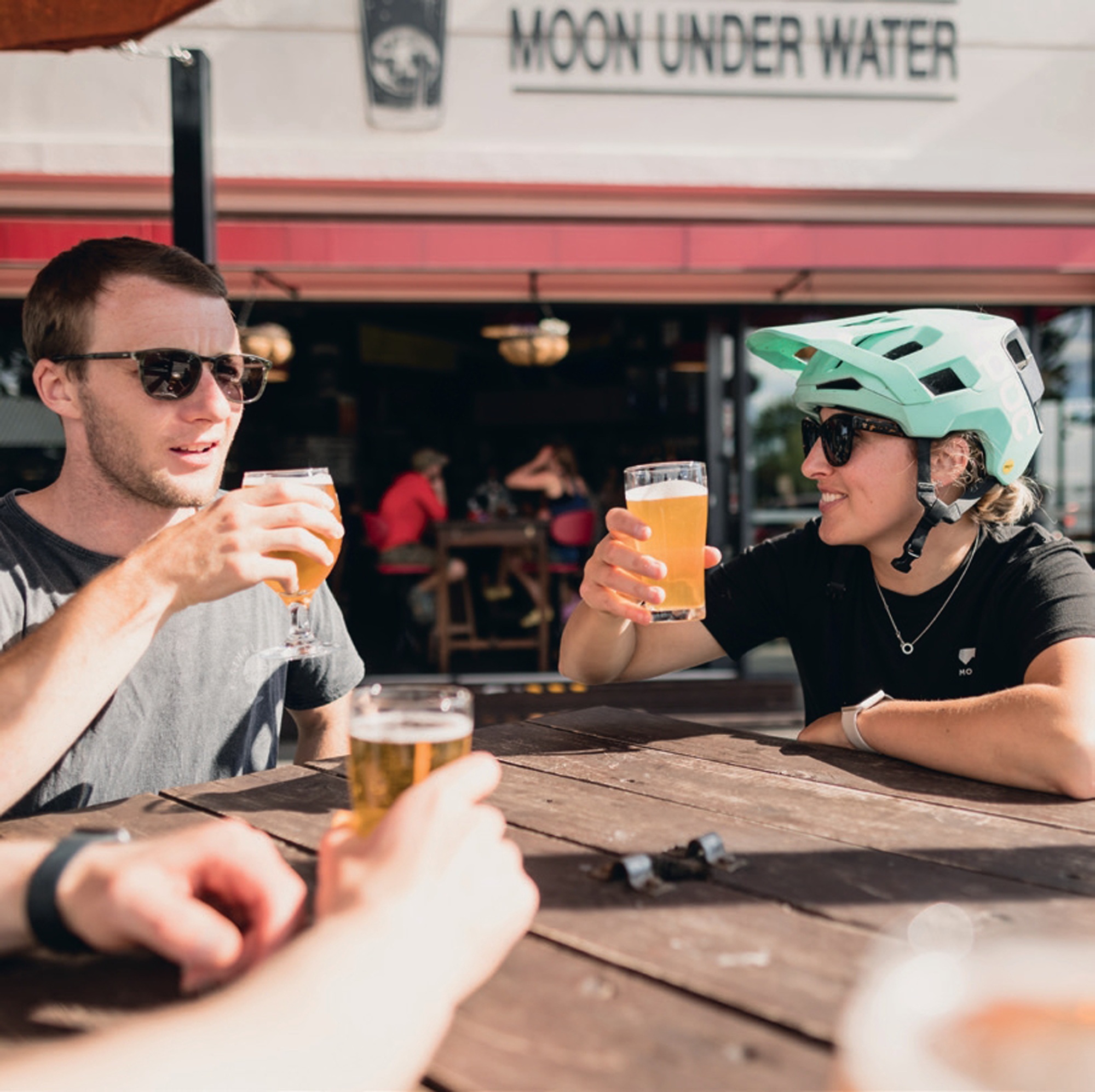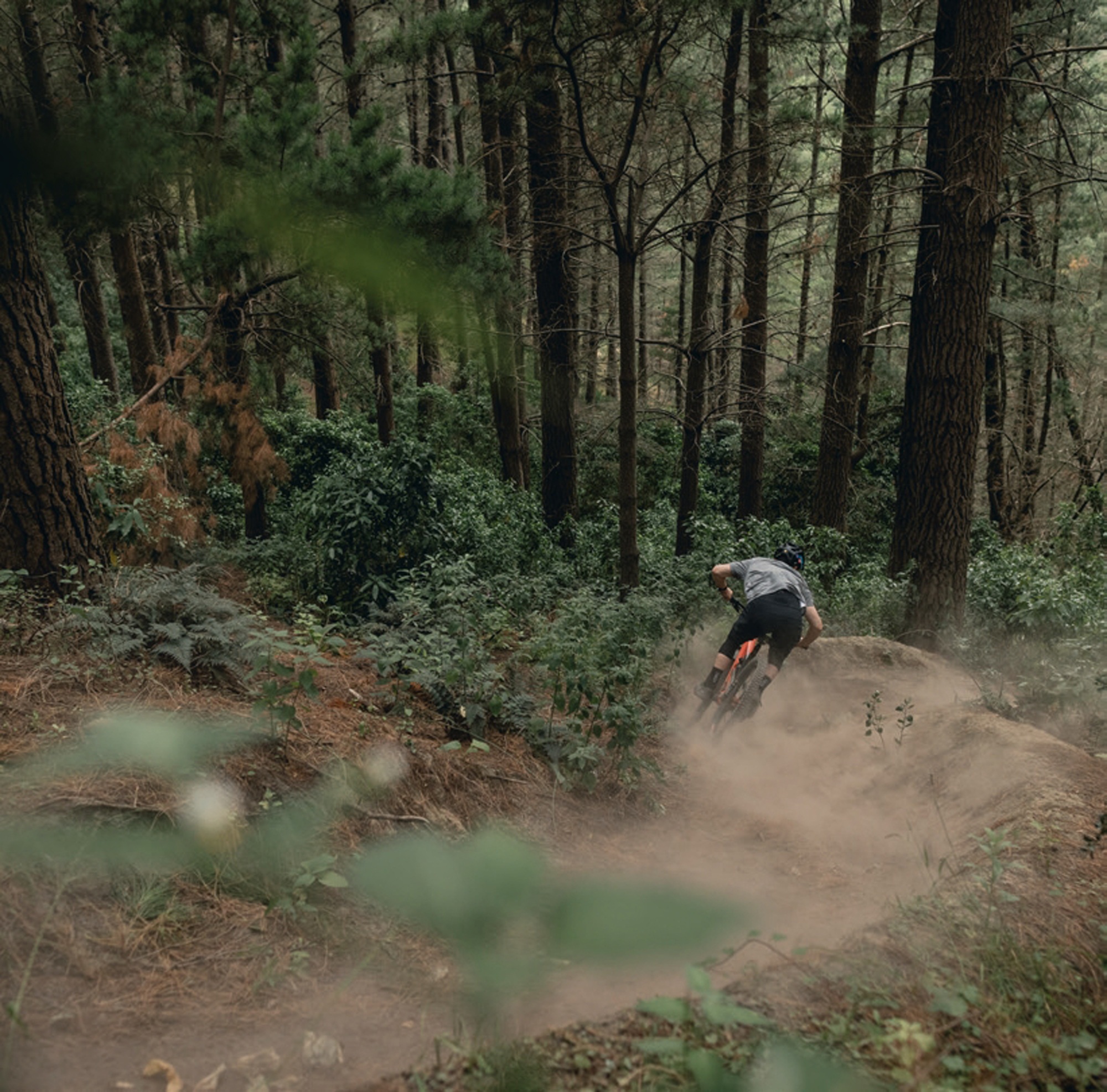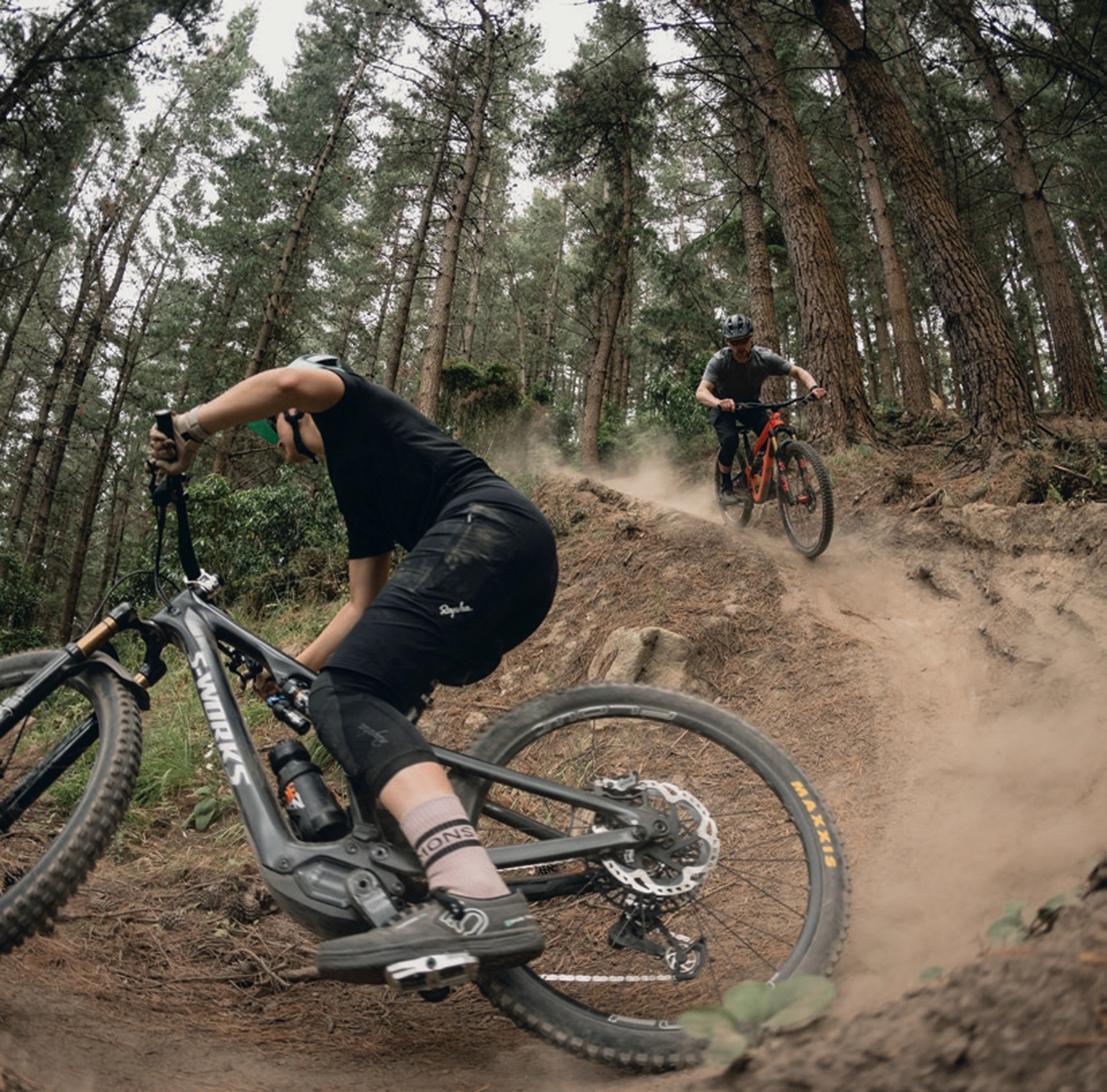Southern Comfort: Ōtepoti Dunedin
Words by Nathan Petrie
Images by Cameron MacKenzie
Despite being spoilt for choice when it comes to riding trip destinations in New Zealand, it can be hard to resist the pull of the Big Three: Queenstown, Nelson and Rotorua.
But, giving in to temptation can sometimes lead you to miss out on the great riding and memorable moments that come with seeing what else is out there. Oftentimes, it’s the trips to somewhere a bit different that deliver some of the best riding trip memories.
So, the question for us was; could we sneak in one last riding trip before summer was out? And, if we could, should we venture outside the norm and explore something different? With the sun rapidly setting on another summer of riding, it was time to tap into the unconventional and head south in search of something unique.
The destination of choice would be the South Island’s second largest city, Dunedin. It’s a place we’d all visited beforehand, to partake in something Dunedin has a rich history of: racing. However, just like going to the same old riding destination, racing only lets you catch a glimpse of what can be found when it comes to local trails. So, this time, we’d be off the clock and free to explore what Dunedin has to offer – both on and off the bike.
As a starting point for exploration of the riding on offer in Dunedin, it’s hard to go past the OG location of Signal Hill. Steeped in as much history as the streets you’ll traverse to get there from the city centre, Signal Hill’s a place that can’t really be missed.
Despite the history, the days of rolling past the back of the high school to a waiting shuttle vehicle for another lap down the famed downhill track are long gone. Now the extensive network of trails that have been carved into the hill are easily accessible via the purpose- built uphill trail; the Emerson’s Big Easy.
The climb lets riders access trails from the midpoint at The Plateau, the iconic Signal Hill summit, and a range of places in between. This easy climbing access, combined with the number of trails packed into the area, gives riders plenty of options when it comes to linking a run together.
A bit like the different access points on the way up, there’s a good range of trails on offer on the way down. While the original rocky Dunedin tech is never too far away, there’s also plenty of root laden goodness snaking through the natives, as well as some fast and flowy jumps.
With so much on offer, it’s easy to see why Signal Hill has been such a mainstay of Dunedin mountain biking and played a key role in national level races. The Otago Mountain Bike Club, with the help of supporters and sponsors such as Emerson’s, have put a lot into making Signal Hill a riding destination in itself—right on the doorstep of the central city.
This ongoing support for the local mountain bike community makes it an easy choice to head down to the Emerson’s brewery for a post ride refuel. Conveniently located between Signal Hill and the city centre, the brewery provides great beer and mountains of delicious food in an atmospheric setting. With plenty of seating both inside and out, as well as some brewery exclusives on tap, it’s an ideal place to unwind post-ride. Swapping stories from a day out on the trails and enjoying the relaxed and inviting atmosphere is a great way to round out the day.
While it’s always good to get some laps in at an expanded classic like Signal Hill, there’s plenty more on offer when it comes to Dunedin’s riding spots. A great example of this is the ever-expanding network at Whare Flat, located on the northwestern side of town. While it currently features less trails than Signal Hill, spread out over a larger area, they’re well connected by the series of gravel logging roads throughout the forest.
Once again, there’s a mix of trails to check out, from lower gradient rocky trails to steeper, root-filled trails with some fun corners and chutes. There are also a number of trails that make great use of some of the more unique features and terrain on offer in Whare Flat. From the gully, traversing turns and grade reversals on Instant Classic, to the stomach-drop-inducing rock roll on Karearea, you’re guaranteed to come away with some memories from a ride out here.
While stopping by local bike store, Off the Chain Cycles, for some supplies and a chat, we heard how this ever-growing network of trails came to be. Despite trails of some form always being present at Whare Flat, the level of development has been on the rise in recent years. A share of this comes from the location’s more recent inclusion in the Otepoti Enduro (formerly the 3 Peaks Enduro), and Signal Hill nearing capacity with trails. With some great terrain and features on offer, and a good network of roads to link things together, it’ll be interesting to see what the future holds for Whare Flat.
Going back to the Otepoti Enduro, another location that offers something a bit different is Nicols Creek. Located up in the Leith Valley and surrounded by lush native bush, Nicols Creek gives you the feeling of being immersed in nature while still being only a stone’s throw away from the city. The trails here have featured heavily in the Otepoti/3 Peaks enduros over the years and it’s easy to see why. A well graded climbing trail leads you up through the bush to an open viewpoint at the top of the descent. From here, you can either head back down or carry on up the remaining two-way track to the tussock and flax-covered tops – and an even more outstanding view of the city below.
After taking in the view and rolling back down the two-way track to the lower viewpoint, things start to get interesting as you drop into the main Nicols Enduro descent. Aside from a couple of brief stretches in the open, and a pocket of pine forest, you’re treated to an eventful descent through the dense native bush. The trail provides a long run down to the valley below and, being nestled underneath the dense canopy with plenty of leaf cover means it holds a decent amount of moisture. When you add in the serpentine roots snaking their way across the trail, you can be in for a bit of a challenge as you make your way down. Despite this, runs like these can be the highlight of a riding trip – provided everyone makes it down in passable shape!
Despite having a bit of distance between them, the lower number of trails at Whare Flat and Nicols Creek means it is possible to ride both in the same day. This ability to ride varied trails in completely different settings is something that’s not easily found in a lot of riding destinations.
After a day of sampling that much of the riding, it only makes sense to make your way back into town to sample some more of the eateries on offer in Dunedin. This time it was Moons, located on the south side of Dunedin’s famed Octagon, in the city centre. Moons taps into a bit of a common theme in Dunedin: amazingly restored historic buildings with stone and orange brick interior. Like many eateries in Dunedin, Moons does a great job sourcing a lot of their ingredients and products from smaller local suppliers. On top of this, they also brew their own beer in-house under the Dog Star label and use house-made dough in their ‘pizzettas’. Drawing on that quest for something different, you’ll be able to try out some of the more unique offerings on the menu – like the crumbed gherkins and charred tandoori octopus. With its diverse menu and great service, Moons is well worth a visit after a day’s riding.
The kind of quality, diversity and local influence isn’t just confined to Moons when it comes to eateries in Dunedin. That’s one thing you’ll notice if you do venture south for a riding trip; the hospitality options are a bit like the trails—diverse and easy to access. Whether it’s a pre-ride breakfast at The Perc, a between-ride fuel up at Beam Me Up Bagels or a post-ride unwind at Moons or Emerson’s, Dunedin’s got you pretty well covered.
After fitting in three of Dunedin’s main riding spots in our short trip, the biggest thing that stood out to us about this great southern location was probably the diversity and convenient access. With Nicols Creek, Whare Flat and Signal Hill all within a 5-15 minute drive from Dunedin’s iconic Octagon, you’re never really faced with a huge commute to access a diverse range of riding. Signal Hill is especially convenient and would be considered within riding distance from most accommodation spots in the CBD. While Whare Flat—and to a lesser degree, Nicols Creek—are easier to access by car, they’re still pretty convenient and you can easily ride both in the same day, as we did.
All three spots offer riders something different, both within and between all three of them. While there is still a bit of a common thread with more technical trails having a big presence in each location, there are also options for a good range of riders. Each spot has pretty good climbing access too, so whether you’re cutting around like us on our Specialized Levo’s (more on that later), or spinning the legs on a regular bike, it won’t be a one-and-done affair.
When it comes to thinking about your next riding trip, consider whether it might be time to switch things up a bit from the usual locations of choice. Try venturing somewhere a bit outside the norm and seeing what else is on offer out there. With its mix of trail styles, locations, features and foliage, Dunedin’s got a good range of options to pick from. Couple that with all of the trail locations lying pretty close to the city centre and you can access a lot of variety at multiple spots in a days’ riding. Add in the great food, culture, and some stunningly renovated accommodation options, and you’ve got the makings of an ideal riding destination.
Stay The Thomas Gregg Apartments
Eat Bakery on Bond, Big Lizard, Beam Me Up Bagels, Emmersons, Maggie’s, Moons
Ride Nicols Creek, Signal Hill, Whare Flat
Shop Off the Chain Cycles (local intel)
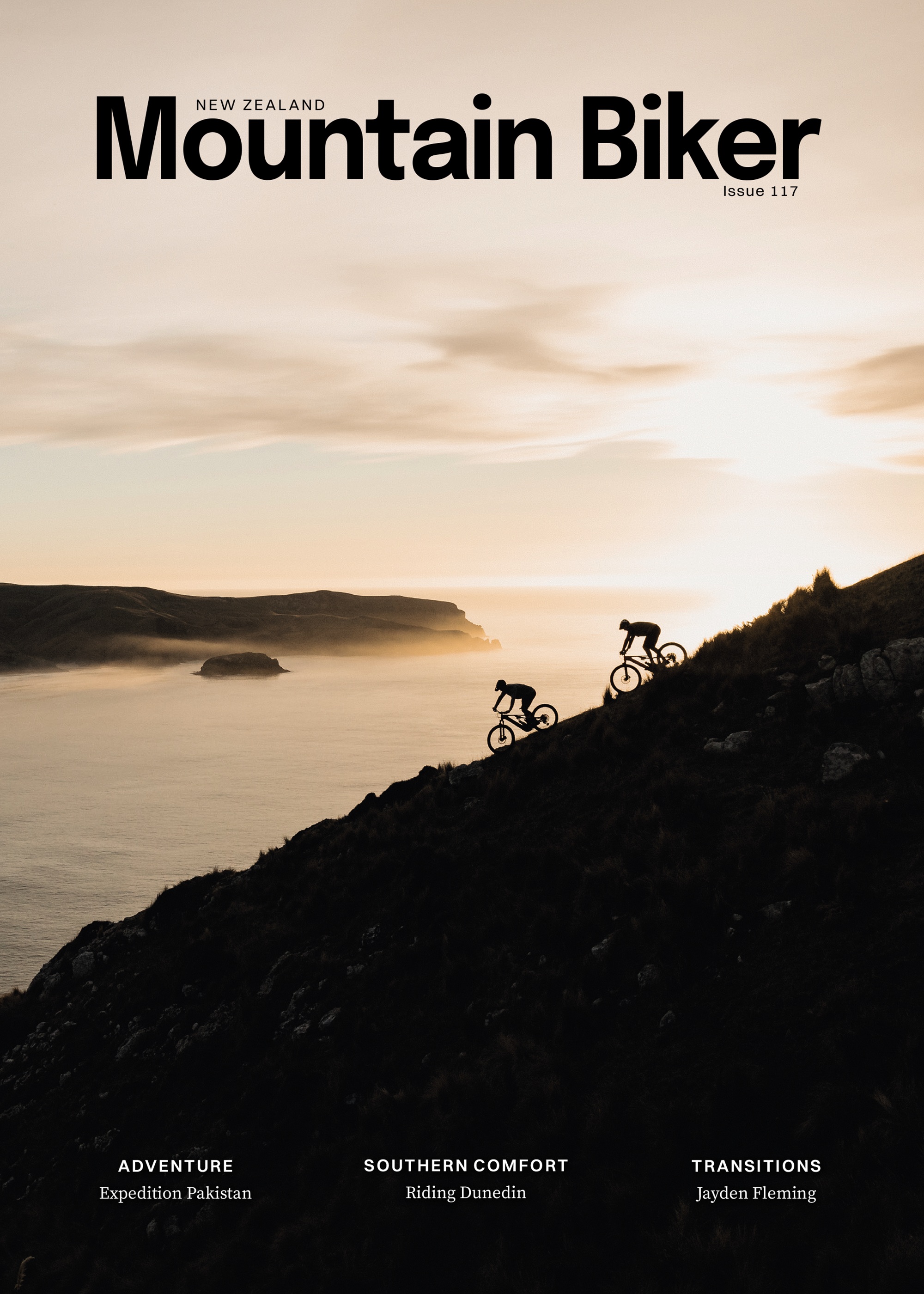
A grown man’s Disneyland
Words & Images Lester Perry
When I was a kid, I saw Disneyland, in California, as a mythical place that only a privileged few kids from my school ever visited. The tales they returned with further increased the mystique of the place. Interestingly, it wasn’t ever a place I thought I would visit myself and, to this day, I still haven’t.
As I grew up, the appeal of Disneyland waned, as you’d expect, and my “Disneylands” soon became famed spots around the globe where I’d dream of riding my bike. By the early 2000’s, Whistler Bike Park had secured its spot near the top of my list of places I dreamed of visiting.
For so many reasons, none very good really, it would take another 22 years before I was finally in a plane, jetting my way to explore British Columbia for the first time; two weeks in an almost-clapped-out van, just me and a mate. A whirlwind trip through western BC started with a quick bump into Bellingham, a trip back through too many riding spots, and finished with a scant 24 hours in Whistler. This gave me a taste of what the place was about, with a few laps on the chair and an early morning Dark Crystal lap. I knew I’d need to return in the future to delve deeper into its trail network.
By early 2024, the itch to travel to ride was back—and this time, I had a larger crew. Three middle-aged dudes—Kai, Byron, and myself— and 12-year-old Myles, Byron’s son. We knew we wanted to ride abroad; a trip that would be not- too-punishing (on bodies and budget). So, a direct flight from Auckland to Vancouver was chosen. From Vancouver to Whistler, there are a few transport options, but a shuttle did the trick for us, dropping us off at the door of our accommodation. If you were keen, you could leave Auckland, take a nap on the plane, wake up in Vancouver, shuttle to Whistler, and be on the chairlift for afternoon laps.
A ten-day lift pass, the cheapest apartment we could find just a five minute ride from the main lift, and a red hot credit card: game on. Our plan was simple; ride pedal-accessed trails in the morning, then lap the park and trails accessed by the lift in the afternoon and into the evening for ten consecutive days. No days off.
Whistler has around 14,000 permanent residents, with an additional 2,000 odd seasonal residents, however, it gets a whooping three million visitors a year, 55% of whom visit in summer. That’s a lot of mountain bikers, you may think, but only around 100,000 of them visit to ride, and I’d wager a pretty hefty bet that the majority of them never make it out of the bike park.
The bike park in Whistler is awesome, with trails of all types and for all styles. There’s no need for me to go on, as you’ll have seen many of them on the internet. What’s less well-publicised (but still popular with a large number of riders) is the pedal-accessed trails. We only managed to scratch the surface of what’s in the valley outside of the bike park, but the taste we got only re-confirmed Whistler as a 1-stop shop for everything mountain biking. Every morning, we pedalled to a new trail and not once struck a dud.
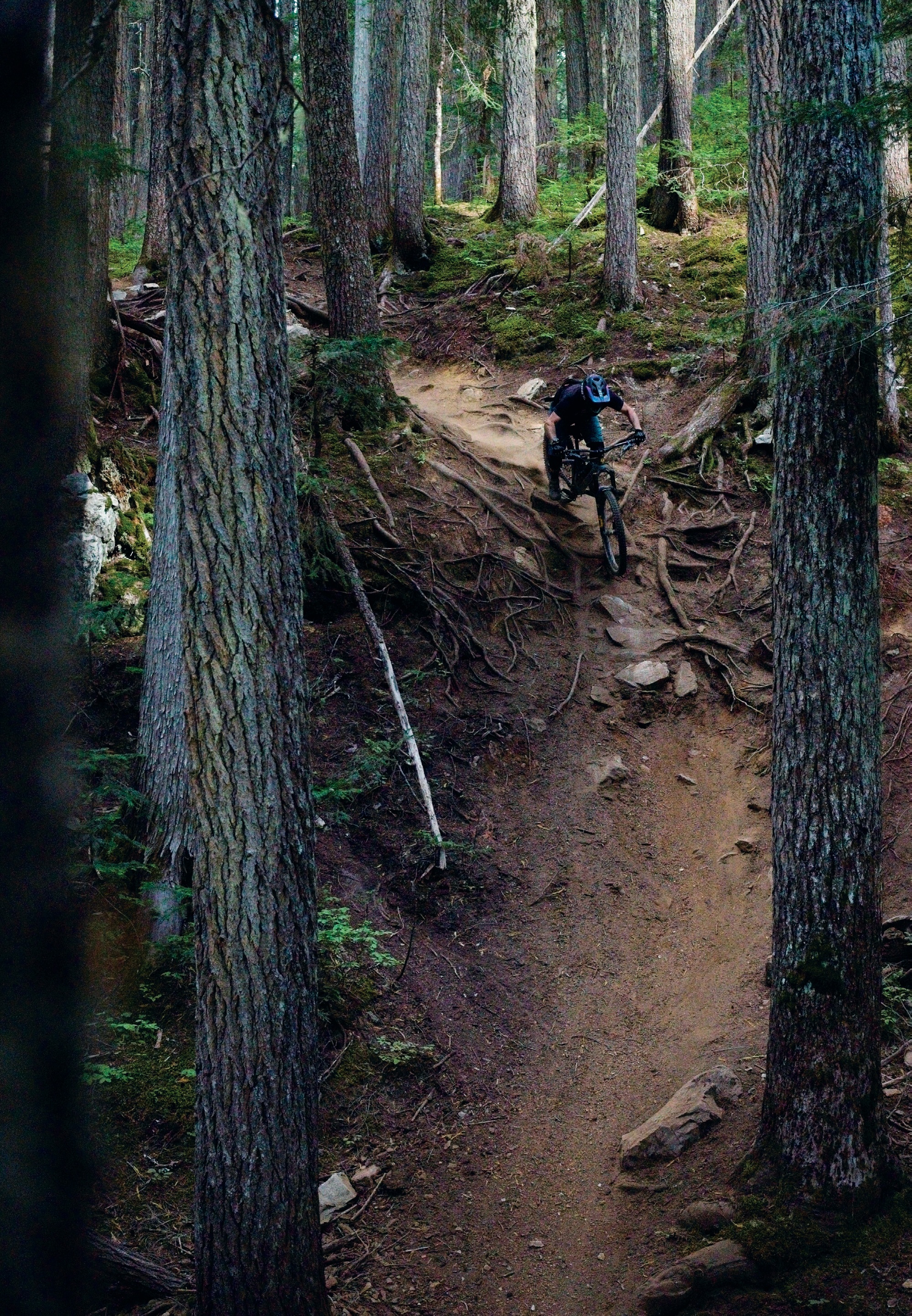
Jump onto Trailforks, and you’ll see a good web of trails down both sides of the valley. View a heat map of the area, and you’ll find a few more but, ride with a local and there’s a whole other underground network of must-do trails. The kicker is you’re pedalling to get to them, and they’re purposely made difficult to get to.
With some unseasonably wet and grim weather at play for much of our trip, the high alpine pedal-accessed trails we wanted to target were off-limits. Although the trails in the area handle the rain exceptionally well, low clouds and cold temps up high put us off some of the marathon climbs. The lower valley and bike park trails were key in these scenarios.
Although we missed a few missions due to weather, we managed just enough clear weather to make the most of a Top Of The World uplift. We rode the upper section before dropping into Million Dollar, Four Eyes, Kashmir and Kush, eventually dropping our pumped arms down into Creekside for refreshments. This is living, Barry.
If you’re into a bit of racing, Phat Wednesday is a must-do. A weekly social gravity race that is the price of a beer to enter, and you get a free beer at the finish—I guess that’s basically a net gain?
Kai and I hit the race in heinous conditions and still had a great time; the Whistler dirt, although muddy, wasn’t that slippery, and we had a blast regardless. The riding community there is next level.
Getting around Whistler is simple—just jump on the extensive bike paths and meander your way to your destination. It’s a simple way to get around and a great way to access the valley trails or tie in some touristing while you’re cruising around and hit the lake for some bombs off the jetty.
Having a bit of time, a trip to the Whistler Train Wreck was in order. One wet morning, we rolled out to it for a look. Riding from the village, we explored flatter trails off the sides of the bike path, riding some fun old-school hand-built trails that would easily be overlooked had we not gone full tourist mode. The Train Wreck spot has been featured in quite a few MTB movies over the years, so it was cool to see it in the flesh. Our ride home featured more exploring, and we stumbled upon a zone full of ‘skinnies’. Scary and exciting at the same time, I relived my youth for a bit, but after almost getting out of my depth a couple of times, I wised up and moved on.
Whistler trails can be humbling. The level of some trails is so high we really wondered if anyone would ride them—the consequences are so high. But, as much as there are some super gnarly trails and features, it’s not a rule; there are plenty of fun intermediate and advanced trails that were enough to test our limits without putting ourselves at too much risk. I guess a key thing when travelling abroad to ride is knowing your limits and being happy to swallow your pride, dismount and walk a section if there’s any doubt you’ll make it through. We saw plenty of people wandering the village with arms in slings or legs in casts. There’d be nothing worse than being on the opposite side of the globe, injured and unable to ride.
During a day in the bike park, you come across all facets of the MTB world. From first-timers protected beneath layers of rented body armour to new-school, roll-cuff-Dickies-pants and tee wearing, full-time park rats. It really is a melting pot for the world’s mountain bikers. While the ANZAC contingent is strong, there are accents from all over the world, and groups flock there to ride from all corners of the globe. It’s pretty cool to see one sport pulling so many people to one place.
Common bonds run deep in the riding community, and it was great to reconnect with people I’ve met through riding over the years who now call Whistler home (permanent or temporary); to be shown some of their adopted backyards and get a local lens on where to find not only the best riding, but the best coffee, or best value meals in town, or even a loan vehicle. If it weren’t for the connection the bike brings, chances are a trip to the area would be nowhere near as rich; it’s more than just a place to visit and ride to me.
I could wax on for pages about why Whistler is worth a visit, but I think you get the idea. With a direct flight (ex Auckland) to Vancouver cheaper than to anywhere else worth riding (aside from Tasmania), although it is overall not a cheap exercise, a 10-day trip offers insane value for money: the sheer number of riding experiences on offer once in Whistler is unparalleled. Assemble a crew, watch for cheap air tickets and go! YOLO.
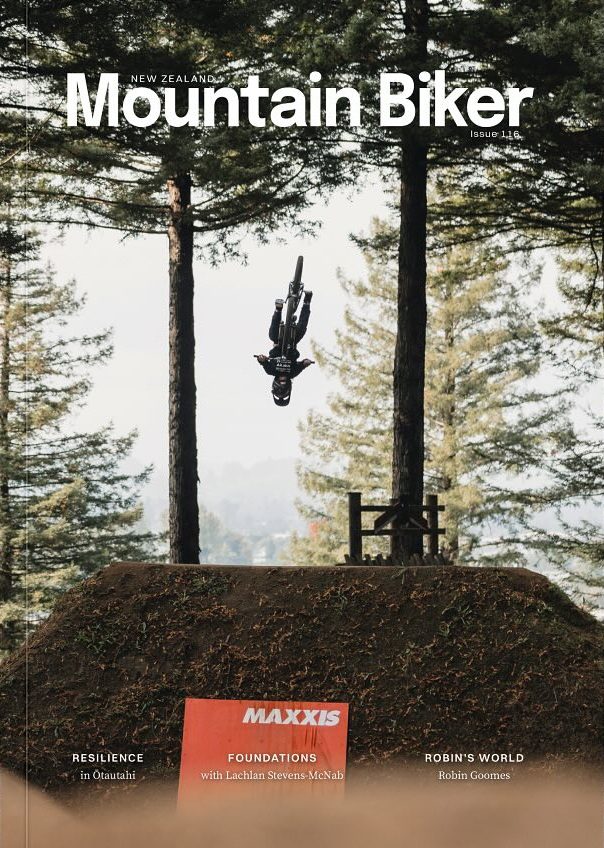
Trail Fund(s) tools for trails
Words Meagan Robertson
Images Lisa Ng
Talk about the gift that keeps giving! Thanks to Trail Fund’s recent Tools for Trails funding round, 30 Weapons of Mass Creation will help ten clubs continue their hard work creating and maintaining their local masterpieces. Read more on a few clubs and their plans below!
Since it was founded in 2013, Trail Fund NZ has been helping volunteer trail building groups around the country establish themselves and their trail networks by gifting grants, ebarrows and other tools. This Christmas, ten trail building teams up and down the country will have more tools in their sheds to further develop the amazing network of mountain bike trails around New Zealand.
“Tools are truly the gift that keep on giving, so we’re super stoked to support these clubs—large and small—with trail building and maintenance support,” says Trail Fund NZ co-president, John Humphrey. “It’s really about supporting the volunteers out there choosing to spend their time trail building – they are the ones behind the incredible trail network that has been developed in New Zealand, and that so many of us enjoy.”
The Swiss army knife of trail tools To make the application process simple, Trail Fund decided the tool of choice would be the New Zealand-made ‘Weapon of Mass Creation’—touted as the Swiss army knife of hand built trail tools, made by product designer and trail builder, Gareth Hargreaves.
“I’m a big supporter of Trail Fund and was more than happy to offer the tools at a discounted rate to get them into the hands of trail builders around the country,” says Gareth, who is a longtime member of the advisory board.
It turns out the clubs were pretty excited about the idea too, with Trail Fund receiving ten applications for the Weapon of Mass Creation (WMC) tools on offer from a wide variety of groups. Keen to see all the deserving recipients get some tools, Trail Fund decided to go big and grant each trail building group between two and four tools!
Read more about the recipients below….
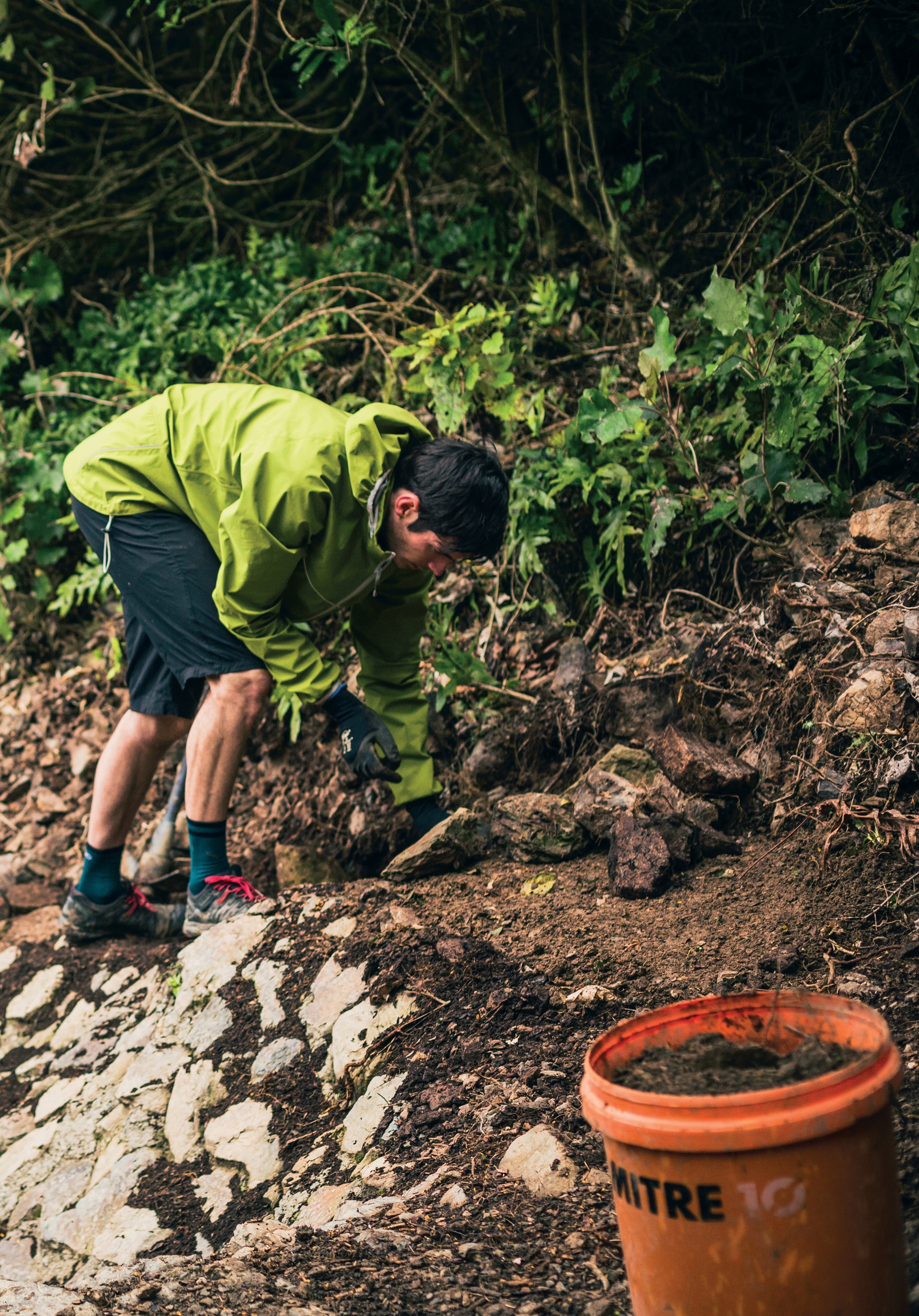
Mākara Peak Supporters—Wellington
Established by Wellington City Council in 1998, Mākara Peak Mountain Bike Park boasts the largest trail network in the lower North Island and has had an exciting year celebrating the 25th anniversary of the park.
“The Mākara Peak Supporters are super stoked to receive three WMC tools from Trail Fund in their latest tool round,” says Mākara Peak Supporters member, Andrew Cooper. “It caps a great year for the Mākara Peak MTB Park—with 2024 being our 25th anniversary and being announced as the best park in the country for 2024 by Recreation Aotearoa – a fantastic acknowledgement of our collaboration with Wellington City Council.
“The WMC tools have been a mainstay of our trail building and maintenance mahi over many years and some of them are starting to feel their age. With a pipeline of refurbishments and new trail builds coming up at Mākara Peak, it will be fantastic to restock the armoury with these new tools.”
Bike Methven—Canterbury
Based in Methven, and only a 10-minute drive from Mt Hutt, Bike Methven has a mixture of cross-country, enduro and downhill mountain bikers, as well as road cyclists, who are passionate about their riding.
The club’s home base, Mt Hutt Bike Park has more than 40km of XC, downhill and singletrack trails and is looking forward to hosting the 2025 and 2026 South Island Secondary MTB Champs.
“All the tracks we are racing will need some love this season,” says club chair, Stu Marr. “We have a number of young pinners keen to get involved and get their hands dirty doing some of this work, so it’s awesome to be a recipient of four of these tools!”
In addition to prepping all the trails for the champs, Bike Methven’s latest projects are extending the intermediate level tracks around the lower part of the Bike Park and a UCI spec BMX track in Central Methven.
Mountainbike Tauranga—Tauranga
A first time Trail Fund recipient and the host of the 2025 North Island Secondary MTB Champs, Mountainbike Tauranga is thrilled to receive three Weapons of Mass Creation to help make its current major projects at Oropi Grove a reality.
A mountain biker’s playground, Oropi Grove is Tauranga’s longest serving mountain bike park. Located on Tauranga City Council land, it includes cross-country, downhill and freeride terrain featuring a variety of purpose-built jumps and drops and ranging from Grade 2 to Grade 6. The projects currently underway include a skills development park and a Grade 4 downhill track.
“The skills area will be a focal point of the park—an area where riders of all abilities can practice their skills, and organised mountain bike lessons can take place,” says Mountainbike Tauranga committee member, Shannon Fisken.
“The new Grade 4 downhill track is a requirement for hosting all three disciplines (XC, Enduro and DH) at the 2025 North Island Secondary MTB Champs. It’s already been professionally designed and our team of volunteers will assist our professional trail builder to ensure the project is completed in a timely and cost-effective way.
“These awesome new tools will be useful on a weekly basis for our committed Thursday night crew, and at our regular working bees prior to events. Thanks Trail fund!”
Other recipients include:
Richmond Hill Trail Carvers – Nelson region
Raglan Mountainbiking Cub – Waikato
Queenstown Mountain Bike Club – Otago
Mountain Bikers of Alexandra – Otago
Nelson Mountain Bike Club – Nelson region
Silvan Forest – Nelson region
Kerikeri Mountain Bike Club – Northland

First Impressions: Specialized Turbo Levo
Words: Nathan Petrie
Images: Cameron Mackenzie
As an unashamed fan of eBikes, I’m always pumped when I get the chance to throw my leg over a new offering from a brand in the space. So, when the opportunity presented itself to try out the highly anticipated new Specialized Levo, I knew it was something I couldn’t turn down. The Levo’s a bike that holds a bit of a special place in my heart, seeing as the first generation one was the first eBike I had the chance to ride. Times have changed a lot since then though, and in the rapidly evolving world of e-bikes I was interested to see how this redesigned Levo stacked up! Pulling the bike off the rack, the first things that are noticeable about the new Levo – aside from its Stumpjumper-inspired styling – are the large Geni shock and the stout downtube. But don’t let either of these things fool you into thinking that the new Levo’s just a two wheeled couch like some full-power eBikes can be. A quick bit of carpark tuning later and it was apparent that the Levo had a lively and responsive feel. At a time where riders are facing the choice between a full-power or lightweight eBike, this kind of responsiveness with the power and range the Levo offers may provide some riders with a bit of food for thought.
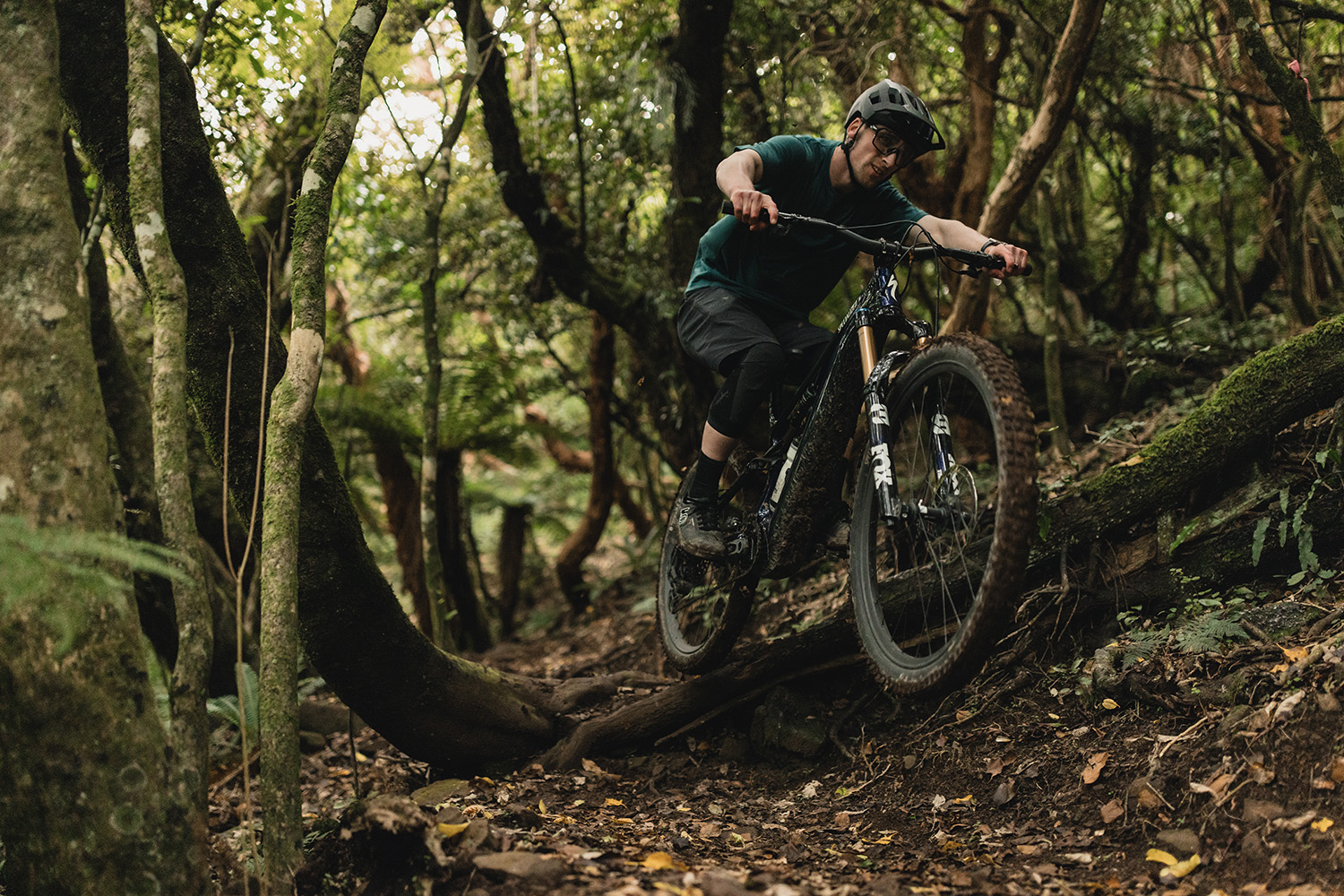
A glance over the Levo’s geometry chart and travel numbers reveals where this responsive demeanour might come from. The key figures like head-tube and seat-tube angle, chain-stay length, reach and wheelbase were all pretty standard across the board for our S4/Large size test bike. As with many of Specialized’s gravity-oriented bikes, the head angle, chain-stay length and bottom bracket height can also be adjusted to offer a more customised riding experience. On top of this, the travel – at 160mm front and 150mm rear – is a pretty ideal amount for all-round riding. The weight also feels fairly respectable too; impressive given the large 840Wh battery spec’d on our Pro level build. As has been the case for a while with Specialized eBikes, the overall package is fairly well thought out. The remote – while still wired – is fairly slim and very responsive, and the enlarged touch screen is well integrated into the top tube so you can easily keep tabs on your battery level and power setting. Specialized have added to the versatility of the system by giving riders the choice between either the 840Wh battery we had, or a smaller 600Wh aftermarket option.
On top of this, riders can use the 280Wh aftermarket extender for even more range with either battery. This gives a fairly impressive 1120Wh of capacity at its maximum which should offer plenty of scope for the kind of back country exploring eBikes are good for. The Levo also features an eBike-first in-frame storage option, with a SWAT bag that fits neatly above the battery in the head tube area. The build kit on our Pro level model was also largely what you’d expect from a bike at this price point. From the nicely finished carbon frame to the Factory Fox 38 fork, SRAM XO transmission drivetrain and carbon Roval wheels, the build kit didn’t leave you feeling short changed. The frame and motor were nice and quiet on the descents as well, with no annoying motor or cable rattle to speak of. The only possible area for improvement would be consistently speccing a 200mm dropper post as standard on S4 bikes. While many companies seem to be keen on allowing riders to size up, anything less than 200mm on what would be a large bike is just too short for the average buyer of that size.
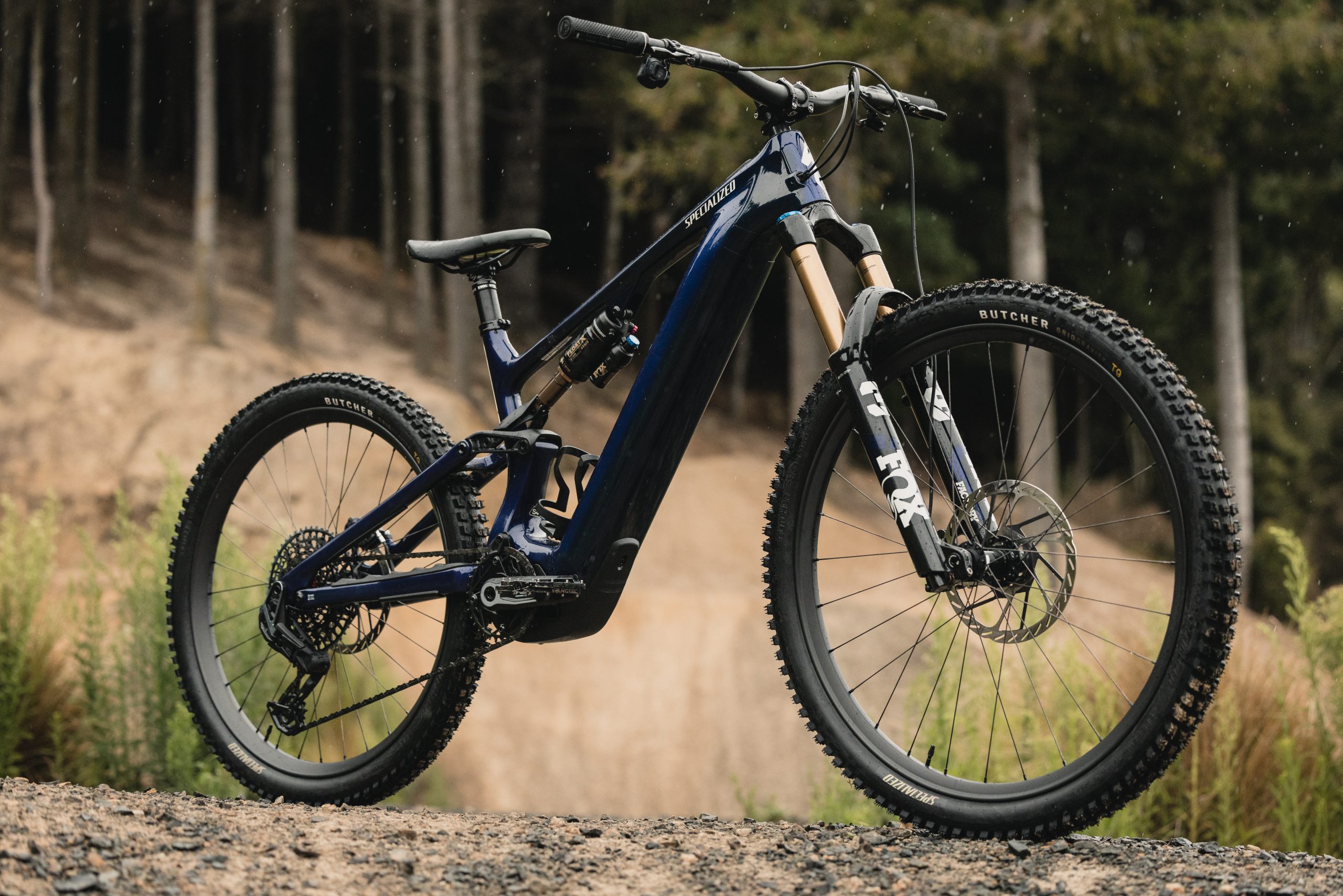
While the first ride on a new bike will always be a bit of an unfamiliar experience, having that first ride in an unfamiliar location can really highlight how easy it is to get on with a new bike. For me the first lot of riding on the Levo came in the form of a trip to Dunedin to highlight what the city had to offer as a riding destination. The first outing on the bike at Signal Hill confirmed that the bike is pretty easy to just get on and ride. The predictable handling and suspension performance means that, aside from the usual cockpit adjustments, there’s not much of a bedding in period – or any quirks to get used to. The first thing that strikes you on the climbs, is how smoothly and quietly the bike delivers its ample power and torque. Some eBike motors aren’t exactly stealthy when it comes to putting the power down with a noticeable whine from the motor. This was something Specialized put a lot of effort into when developing the new 3.1 motor. The new Levo also has a decent bump in power and torque over the outgoing model, with that power being maintained over a much wider cadence range. While my first ride didn’t feature much in the way of technical climbs, we did head up a couple of fairly steep sections of single (and double) track. Aside from some unrideable clay patches, these climbs didn’t seem to faze the Levo, even in Trail mode.
The responsiveness that was noticeable in the car park was also put to the test early on at Signal Hill, by rolling through a few sets of jumps. Some full power eBikes can be a bit of a chore to get off the ground, especially with flatter take-offs, and can still feel slightly weighty in the air. Not so with the new Levo. On both the high-speed DH style jumps on the Nationals track, and the more sculpted lips on the Jumps track, the bike was more than willing to get airborne. When in the air it was also easy to move the bike around and get some decent shape – once again, not something that is readily done with all full power eBikes. The bike also performed well on the slippery rocks and roots that we were treated to throughout our time in Dunedin. The bike struck a nice balance when it came to frame stiffness, holding its line well in rough sections but not causing the bike to feel harsh or deflect off a wet root or rock. This stiffness, coupled with the suspension and wheels, made for a comfortable and compliant ride in rough and unfamiliar terrain where you’re not always on the ideal ride line. The revamped Specialized tyres also offered plenty of traction in most places and, when combined with the SRAM Mavens, provided a nice sense of control over the slick terrain.
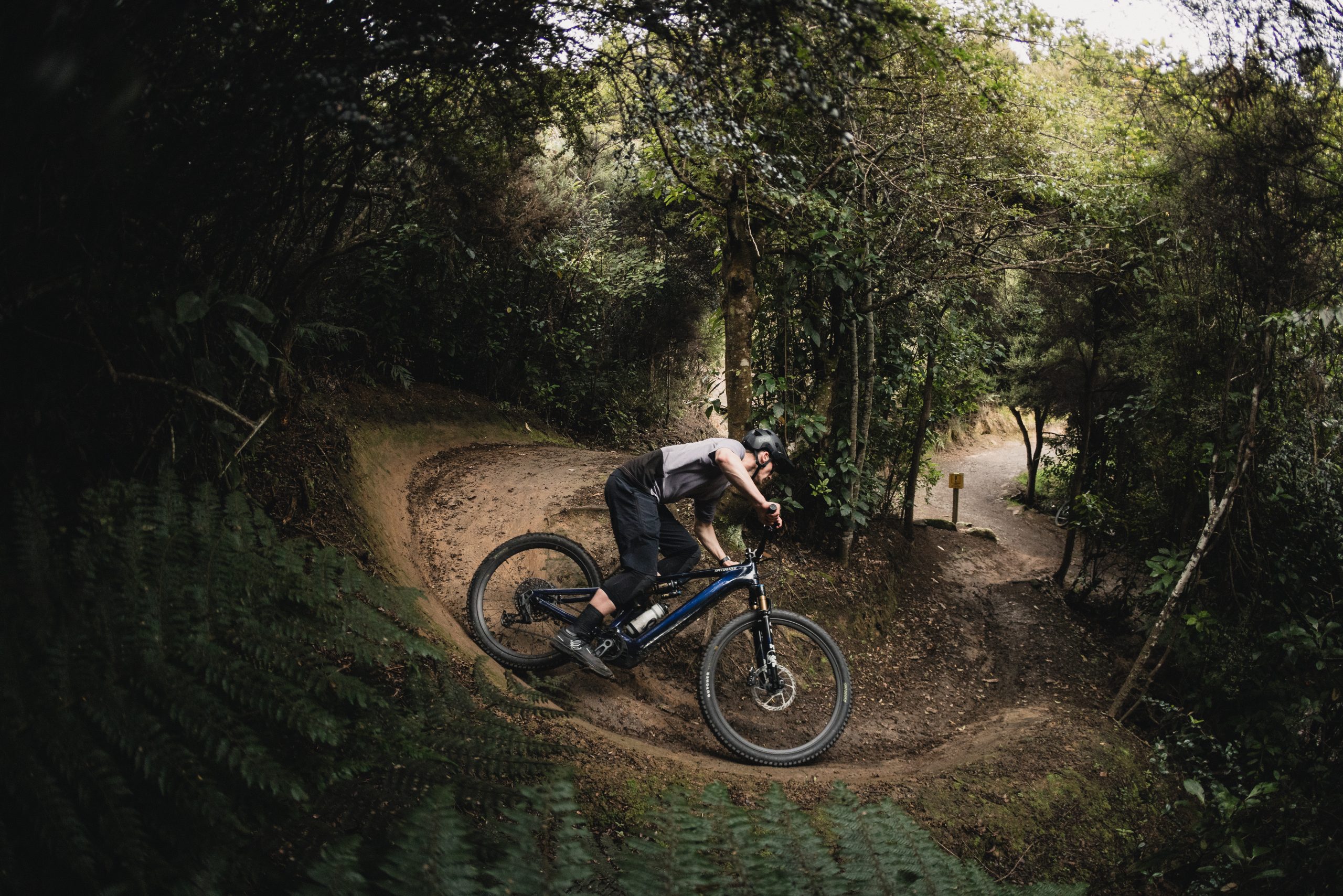
The outing in Dunedin also provided a good opportunity to put the range of the new Levo to the test, with two decent length rides in one day. While these rides didn’t cover a huge number of kilometres, we did get in near on 1200m of climbing across two locations. This left us with around 27 percent of the battery remaining by the end of the day. I also had the opportunity to try the Levo a bit closer to home, in two different situations that eBikes are good for. The first was more of a power hour-and-a-half on the trails of the Christchurch Adventure Park and Victoria Park. The adventure park in particular can be very harsh on bikes, between the stretches of exposed volcanic rock and the hard pack singletrack littered with roots and rocks. Once again, the Levo provided a smooth and controlled ride on a lot of the rough sections and handled the steeps in both locations without any issue. Another run through some jumps on the adventure park’s O-Zone trail confirmed that feeling of predictability and liveliness that came through in Dunedin.
The second outing was more about tapping into the spirit of exploration eBikes in general are great for. This outing in the Canterbury high country largely featured some lower grade grassland, riverbed traversing and hiking trail. While none of this really challenged the Levo from a motor, battery or suspension travel perspective, it highlighted the general-purpose nature of the bike. Even on less demanding terrain at a more leisurely pace, the Levo never felt like too much bike. The same responsiveness was still there, and the motor still offered decent assistance when cruising along in Eco mode. So, after a bit of time in a good range of settings, I think it’s fair to say that the Levo carries on the lineage pretty well. It’s still that same great all-rounder bike that it’s always been, but with some useful improvements to the power, range, frame and suspension performance. It’s a bike that’s easy to just get on and ride in a wide range of terrain and for a variety of ability levels. Like its lower-powered (Levo SL) and unpowered (Stumpjumper) stablemates, it gives riders user friendly geometry, travel numbers and ride feel that makes it an easy bike to feel comfortable on right away. The combination of reasonable weight, good integration, generous range and quiet, responsive motor certainly maintain its place in the top tier of full-power eBikes.
Samara Sheppard: Ups and downs
Words Lester Perry
Images Phillip Sage
For over ten years, Samara Sheppard has been quietly going about her business, making moves and climbing the global off-road racing ranks.
From Wellington PNP races and NZ National Series events, to U23 XCO World Cups and Marathon World Championships, her career up until 2024 had been primarily based around mountain biking. The new year brought a change in focus and renewed motivation, prompted by a maiden voyage at the ABSA Cape Epic and a run at the US-based Lifetime Grand Prix series.
Born in Clyde, Central Otago, Samara’s family moved to Wellington in her fourth year. Raised in an active family, she was destined to become an athlete of some sort. “My dad was into adventure racing and endurance events like the Coast to Coast and Ironman. My brother also took to cycling but steered more towards downhill racing, as well as rugby. We mostly all ran cross- country. Mum would taxi us around. My sister, a brilliant swimmer and very intelligent—she often found smarter ways to spend her time.”
Not one to be pigeonholed into a single sport, Samara “played every sport under the sun and particularly enjoyed gymnastics from a young age, then onto netball, soccer and cross-country running”. In years to come, this excitement for running would ultimately open the door to mountain biking for her.
“I had a lot of energy as a kid and was able to channel this into gymnastics. But, as I was getting older and other sports like netball and soccer became available, gymnastics was becoming a full-time sport. I quit gymnastics to try out new things. I remember some Saturdays when I was around 12 years old; I would have soccer first thing, then a game of netball, then a running race, and then dance practice. Hardly surprising that I developed a taste for endurance sports!”
After being sidelined by a running injury, Samara’s father steered her toward mountain biking as a way to stay sane. “Once I discovered how awesome it was to adventure through Wellington’s hills and around NZ, I was hooked. I started racing straight away in the local PNP club events and loved the buzz.”
School life provided two critical things for Samara: socialisation—she wanted to hang out with her friends all day—and the schoolwork satisfied her competitive spirit.
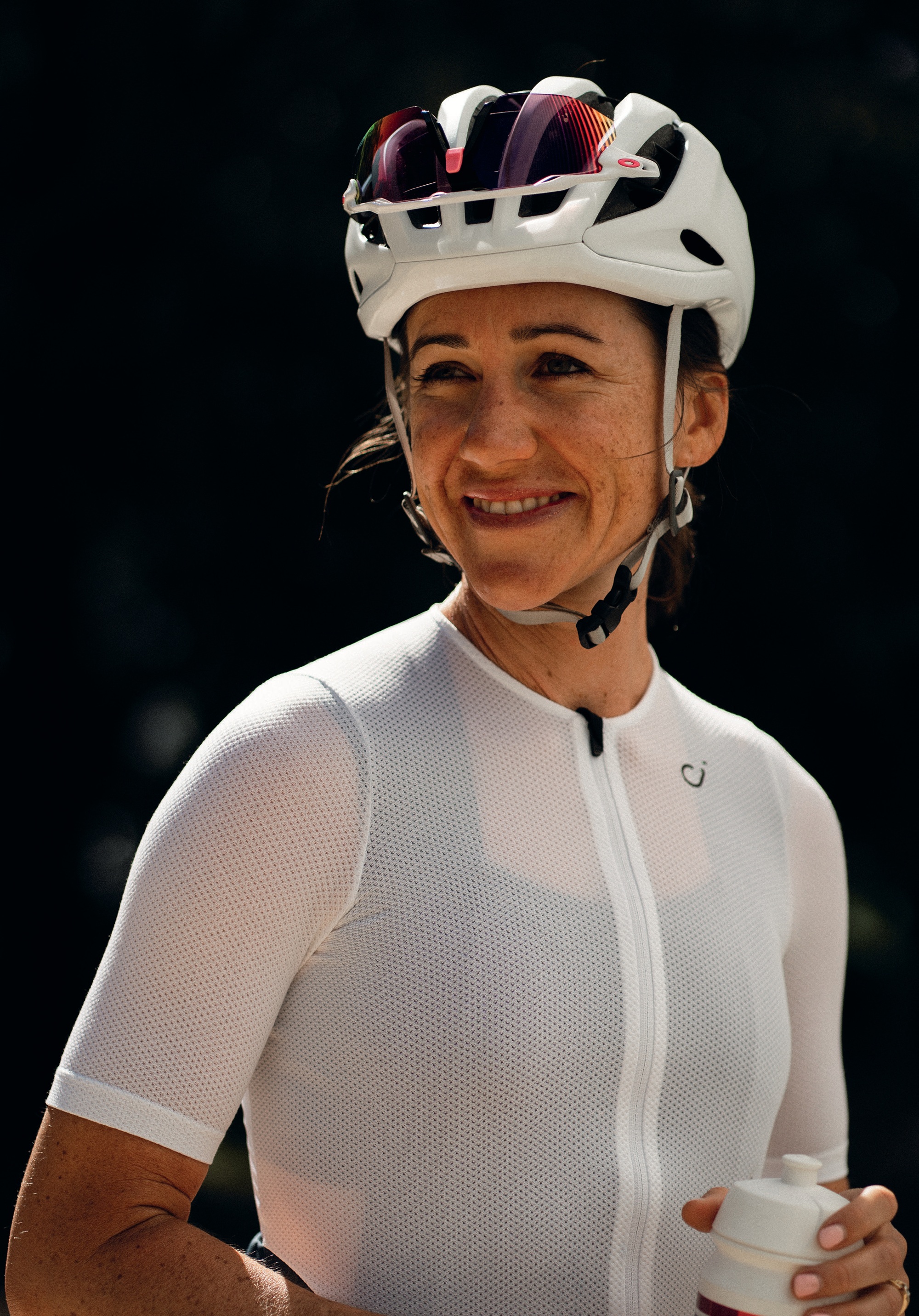
“I always found maths easy, and I treated the work like a race, always trying to be the first to complete the work with accuracy. I think I still have the record at Churton Park School for quickest to complete the basic facts sheets.”
By high school, when she could choose her own subjects, MTB had started to rule her existence: “I chose to do the minimum subjects needed to pass NCEA so I could spend more time riding my bike.”
“My first seasons racing XCO in Europe as U23 were pretty exciting—getting to explore the world and racing against the best there is. The people you get to spend time with, new experiences, and the racing buzz is always rewarding. This year is exciting because it’s a whole new scene (to me) racing in the US, but it’s an easy one to navigate as it’s an English-speaking country and where the industry gets behind privateer riders. It’s really exciting to work with some of the best brands in the business and challenge myself in various off-road race formats.”
Although Samara continues to compete globally, the inspiration to keep pushing herself comes from those closest to her: “I’m inspired by my dad, the ‘old boys’ in Wellington, and the riders I’ve had the pleasure of competing against and riding with over the years. Today, my biggest influence comes from my husband, Kyle. He always keeps cycling fun and designs the best routes to ride. I’ve always raced well when I’m having fun. And Kyle has been a major influence for that over the past eight years.”
Many athletes appear one-dimensional, all- consumed by their pursuit of physical excellence, but Samara’s not one of them. Over the COVID lockdowns, with borders closed and racing paused, many cyclists took the opportunity to get a solid training block, emerging from the period fit and raring to go. Samara chose to further herself over the period and emerged with a master’s in public health. “I couldn’t leave our local government area, and there were no races. I was working part-time at a health clinic but was out of work with all the restrictions. I decided I needed a challenge and was motivated to get a reliable job through times like those. I was also aware of how lifestyles were becoming more sedentary and could see in the healthcare clinic the impacts that has. After the pandemic, I ended up taking on a role with Wollongong Tourism as a UCI Bike City Coordinator to help make cycling an easy option for people in the city.”
When US-based Argentinian racer Sofia Gómez Villafane was on the hunt for a 2024 teammate to try and reclaim the overall title she and Haley Batten (USA) won in 2022, Sofia’s 2023 teammate, Katerina Nash, suggested Samara could be a good fit. Both have similar backgrounds, transitioning from the short XCO discipline to the more endurance-focused marathon XC and gravel-style races. Sharing Specialized as a sponsor ticked the first box, and Samara’s palmares spoke for themselves: 6th at the 2023 MTB Marathon Worlds Champs, Oceania Marathon Champ, and NZ Champion, amongst other strong results; Sofia knew they were in for a strong performance. The southern hemisphere pair would take the start as an unknown quantity. Although this was to be Sofia’s fourth Cape Epic, it would be Samara’s first, and the pair hadn’t raced as partners before. South Africa wasn’t completely uncharted territory for Sheppard, however, as she’d raced the World Cup in Stellenbosch back in 2018. The pair ultimately finished 3rd at the Absa Cape Epic, Samara becoming the first Oceania rider to finish on the podium at this prestigious event.
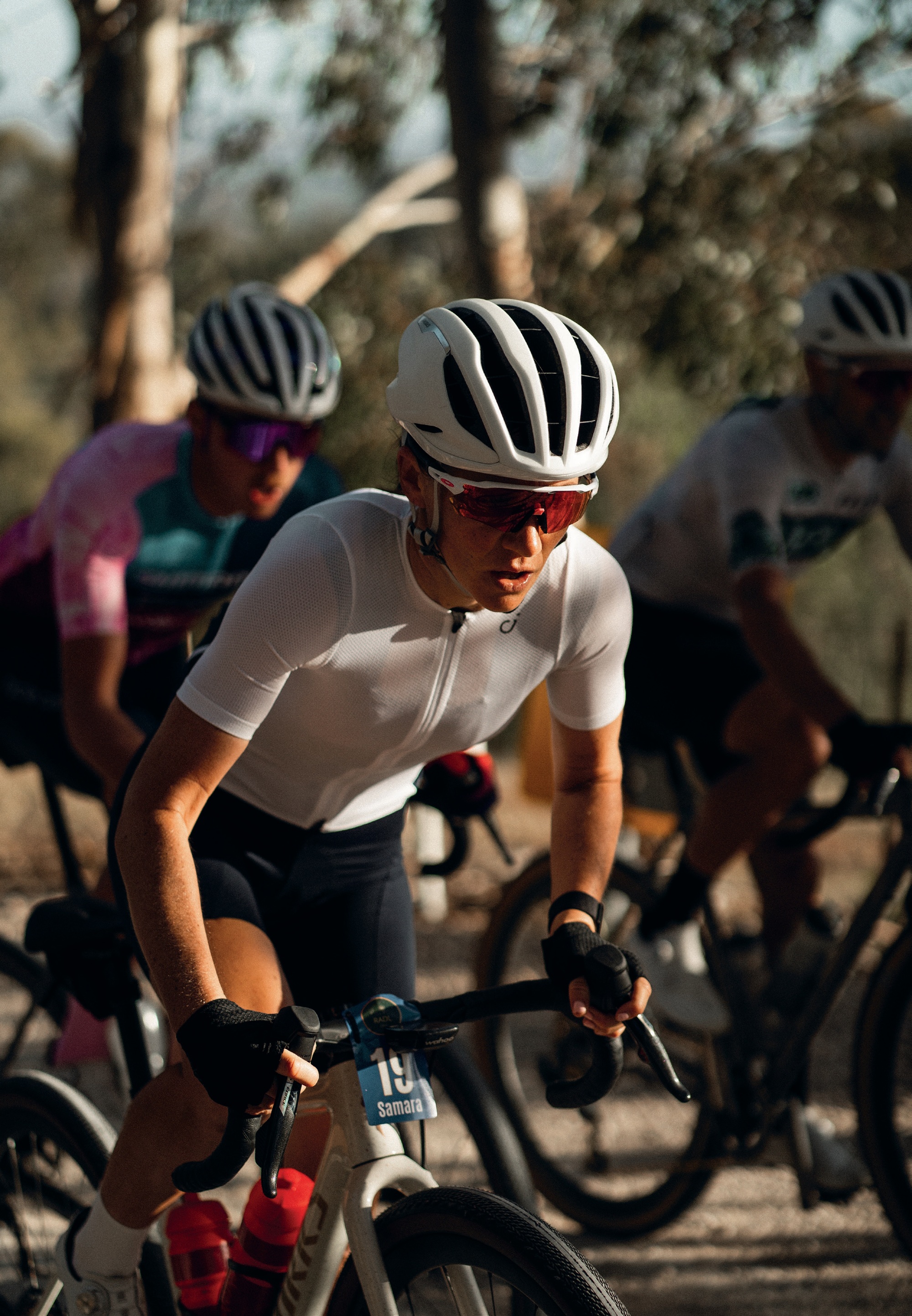
Weeks later, the pair lined up for the Lifetime Grand Prix (LTGP) opening round at Sea Otter Classic, Monterey, California, racing head-to- head rather than as a team. Carrying strong form from the Cape Epic, Samara took the podium, finishing second, just behind Sofia—a solid start to the Life Time series. “I took confidence from Cape Epic and a deep strength in my legs which set me up for a perfect start to the LTGP. Backing this up with a result at Sea Otter helped secure more industry support that has made the rest of the LTGP possible.“
Taking on a series that not only covers a long time span but also criss-crosses the US, provides some unique challenges; her first LTGP series has thrown her some serious curveballs. “As a privateer, the initial challenge was securing enough support to do it. Then there’s the logistics of traveling around the US, which is just gigantic; navigating visas so we don’t overstay; and finding a home base in the US, as travelling back and forth wasn’t realistic. Races from April to October. Extremely long endurance events. High altitude prep.”
Fortunately, Samara was lucky to become part of the Orange Seal (OS) Academy, easing the financial strain and providing top-notch coaching support, working alongside ex-world- tour pro, Dennis van Winden. “Not only do they make excellent tyre sealant, OS also get behind riders and have created a community in the US with their OS Academy. If it weren’t for John, the owner of OS, and Dennis, the Academy lead, it wouldn’t have been possible to race the LTGP this year. I owe this season to their encouragement and support.”
The LTGP has been a significant learning experience. Unfortunately, some of the learnings have been to the detriment of her performance. The Leadville Trail 100 MTB race is renowned as one of the toughest races in the world. Over its 170km, the course covers a massive 3,600 metres of elevation gain, reaching a peak altitude of 3,800 metres—roughly the same as the peak of Aoraki Mt Cook. “Everyone responds differently to altitude. With two rounds of the LTGP being at high altitude, I made the call to come over to the US three weeks ahead of the first one to acclimatise. By the time Leadville came around, I had spent seven weeks at high altitude (around 2000m). It’s hard to feel good on the bike at altitudes above 3000m, so I would consider doing multiple smaller blocks next time around.”
“Coming into this season, I thought a 100km MTB race very long. Racing Leadville this year opened my mind to what it’s like to race all day. Well, for nearly eight hours, over the 170km MTB course. The longest race in the LTGP— Unbound—is 320km long. Unbound was my drop race this year because I couldn’t fathom how to race that far. After the race, I had a bit of FOMO, so I’ll be working on getting my head and body around racing for 320kms next season!
“Then there have been other challenges like a herniated disc in my back that flared up, getting bitten by a dog whilst out training, which sent me to hospital for ten stitches in my arm and a mighty dose of antibiotics, then recovering from a concussion after hitting my head on the ground racing SBT Gravel (non-LTGP race). The most challenging part remains—to achieve what I set out to do: I took on the LTGP because I believe I have what it takes to finish on the overall podium. The challenge remains to make it happen.”
Following SBT, the circus was off to Chequamegon, where she finished 10th and scored 7th place points (three non-LTGP riders in front of her). Samara was showing signs she was on the way back from her injuries and looking strong heading into the Marathon World Championship and the final two LTGP rounds.
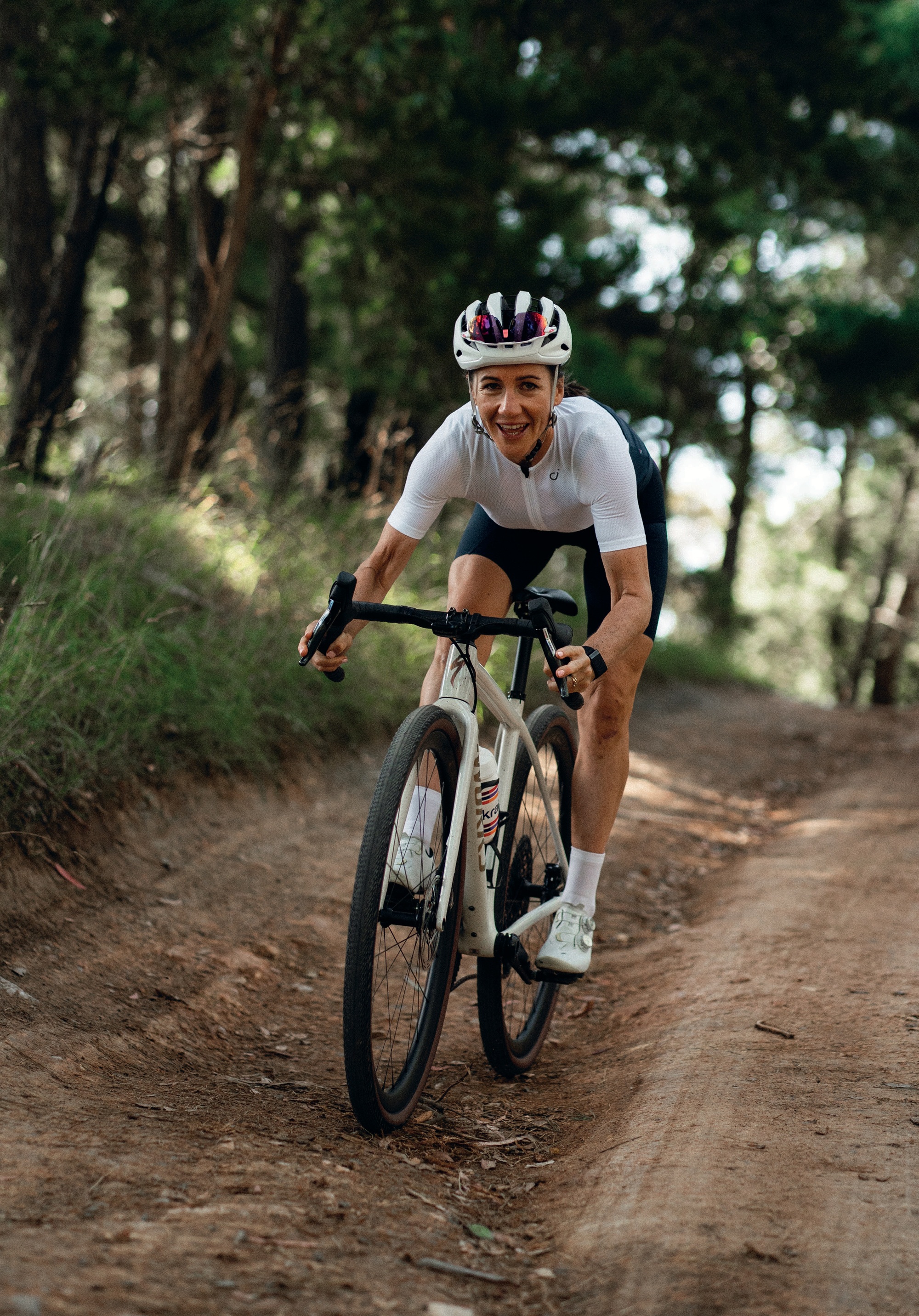
Next up was to be the UCI World Championships in Snowshoe, West Virginia. Once again, luck wasn’t on her side. “It was my first ride on the Marathon Worlds course, and the course markings and .gpx files didn’t match up, so I was a bit lost. I’d found some friends to try to figure out the course with. It had been raining for a few days, so the trails were slippery. I was following one of my speedy friends down a technical section, and I didn’t see a small stump that I clipped my pedal on. I went over the bars and hit my knee hard on a rock slab, slicing it open, causing swelling and aggravating my bursa. It also triggered some concussion symptoms from a crash I’d had four weeks prior.”
“It was really sad to miss out on racing Worlds. I’ve loved the buzz of World Champs ever since I watched XC Worlds in Rotorua in 2006 and competed in my first World Champs in Scotland in 2007. It’s a special opportunity to represent your country and race the best in the world, chasing a rainbow jersey—a big goal of mine, especially after finishing 6th last year and 5th in 2019.”
Unfortunately, her injuries sidelined her for LTGP round six, The Rad Dirt Fest, so her focus shifted to the final round—Big Sugar in Bentonville, Arkansas. “This season has had its fair share of highs and lows. Dealing with so many injuries and setbacks in one season has been tough, especially since I took a break from work to compete in the U.S. The smaller setbacks, like being bitten by a dog and splitting my knee open, were relatively minor and straightforward. But the concussion has been a completely different challenge. Every concussion is unique, and people can only tell you to be patient and take your time. You just can’t push through symptoms like you can with other injuries. “I remind myself that there’s more in life I want to achieve, and for that, I need a healthy brain. I try to be kind to my body, not overthink things, and focus on what I can control—like getting enough sleep, eating well, and appreciating where I am. Having a strong support system with Orange Seal Academy, led by Dennis van Winden, who checks in every day and brings a wealth of data to guide decisions, has been a big help. Making a plan based on both data and intuition helps me stay positive and keep moving forward.”
Now in its third year, the LTGP has been refined and built on each successive season, but there’s still work to be done. “I don’t like how the women’s races are influenced by men who are racing on the course at the same time. It’s great that the pro women have their own start wave this year, but if the women could race on a clear course, that would make the racing safer and more fair.”
The LTGP is the largest offroad cycling series in the world, and even though the pointy end of the competition gets most of the media attention, all seven rounds of the series attracts thousands of everyday riders keen to toe the line against the pros. “It’s also super inviting for beginners to pro riders. Combining the LTGP with mass participant events creates a fun community buzz. The LTGP are doing great things to develop fandom, like with the incredible docos they release 48 hours after the race, the pro panel discussions, autograph signings and ways they promote their series.”
“Once the season is over, my focus will be on recovery and building toward 2025. I aim to come back even stronger and wiser. My goals are still big, with plans to return for LTGP in 2025 and tackle a mix of endurance and ultra-endurance gravel and mountain bike events. I’m excited for what’s ahead.”

The Mackenzie Race
Words & Images Supplied
The Mackenzie, brought to you by Devold, is back in 2025. After a successful inaugural event, held in April of this year, the 2025 edition looks to be bigger and better than ever. Set in the stunning Mackenzie Region of the South Island, there are multiple distances to choose from, allowing for a day full of adventure for all levels of experience and fitness.
The Mackenzie race is a resurrection of a past event organised by Peter and Margaret Munro. The ‘Around Lake Tekapo’ bike race attracted up to 1500 competitors back in its day, and saw riders loop the lake early in the winter months. With a new team organising this event, and with the support of the Lake Tekapo community and previous organisers, the event has been reinvented with new course options and an autumn date.
The theme of The Mackenzie is an ode to the history of this awe-inspiring location. In 1855, Scottish shepherd, James Mackenzie, came across this incredible district while trying to hide flocks of sheep that he had rustled with the help of his loyal dog, Friday. He was eventually captured and rumour has it that Friday continued to drive the flocks of sheep—even without his owner! What happened to James Mackenzie after his capture rivals any movie plot. Initially, he managed to escape, walking 100 miles to Lyttelton before being recaptured. Over the next months he escaped multiple times, eventually being put in irons. After finally being sentenced to hard labour for five years, he only served nine months before being pardoned due to an apparent miscarriage of justice. Upon release, James set sail for Australia and that is the last we know of what became of this legendary outlaw.
The iconic dog statue in Lake Tekapo is a tribute to all our working dogs, and sits proudly overlooking the lake. The Mackenzie District is named after James Mackenzie, and The Mackenzie race pays tribute to all the legendary shepherds and farmers that have nurtured this district ever since.
‘The Drover’ is the biggest race on the day and takes you on a journey to two of the most iconic lakes in New Zealand; Lake Pukaki and Lake Tekapo. The course utilises the unique features of this landscape; the canals that cut through the land, the turquoise hues of the lakes, and the mountain views all around —including New Zealand’s tallest mountain, Aoraki Mt Cook. For this day only, you will have access to private high country stations, allowing you the opportunity of a lifetime to cycle your way around this incredible location.
‘The Muster’ is a 92km adventure that is the full loop of Lake Tekapo. This is the most popular event on the day and riders have almost ten hours to ride around the lake. Godley Peaks Station is an absolute highlight with riders enjoying the high country station experience, including the wildlife and farm animals that roam amidst this vast landscape.
‘The Huntaway’ is a shorter loop of the lake, starting on Godley Peaks Station. This is a great option for those not wanting to spend quite as much time on their bikes but still wanting this ‘once in a lifetime’ experience—and with 73km to travel this is still no easy feat and definitely worth bragging rights post-race!
The final two events are out-and-back gravel races, offering competitors a fast ride on the eastern side of Lake Tekapo. Riders can choose between the 78km or 34km courses, and eBikes are welcome to join the gravel and mountain bikes on both of these distances.
In April of this year The Mackenzie saw elite riders tackle the race, alongside first- timers. There were some fast times recorded, including Craig Oliver completing the full loop of Lake Tekapo in 3 hours and 4 minutes. With professional athletes already signed up for the 2025 race, organisers are excited to see what the field looks like on race day.
“It was amazing to see the level of competitors at the event this year,” says event owner and organiser, Kerry Uren. “To see elites on the start line, it definitely added to the excitement when we set them off in the morning.”
But it’s not all about elites at this race. “It’s really important for us to ensure this event caters for everyone,” adds Kerry. “The majority of riders in 2024 were out for an adventure, and soaked up the atmosphere and views throughout the day. It’s pretty special to be able to get access to this area, so that was a definite drawcard for most. I know riders are as grateful as we are for the landowners who allow access for the event.”
Scenic Sports Events ensure competitors are safe whilst out on course, using a mixture of experienced personnel to marshal and specialist water safety teams to assist with the river crossings. Creating a remarkable atmosphere was high on the list of priorities as well, with the aid stations and friendly crew adding to the fun and welcoming vibe. The Musterer’s Rest Aid Station was set up like a café; tables and chairs were available for a rest, while the crew cooked up made-to-order toasted sandwiches, as well as coffee and tea—all included in the entry fee.
“What makes this event so special is the atmosphere,” says Kerry. “There was a real camaraderie out on course with riders offering ‘cramp stop’, supporting each other through the rivers, and even helping fix flat tyres.”
The next event is set for 5th April 2025, and entries have been coming in from all over New Zealand—and the world. With less than six months to go, why not make this event your next autumn race, where you too can have your own #legendarymackenzie adventure to share with your mates for years to come.

Southern Legends: 100 years in one trip
Words & Images Jamie Nicoll
The St James area did not pull my strings until I bumped into Johno while on a bike launch assignment, checking out the new Hanmer Springs trails. My eyes were opened to yet another hidden world of magical riding and scenery to be treasured!
Johno is a pioneer of new trails and a visionary of our sport – in other words, he’s exactly the sort of person I try to find so I can tell their story. Johno works alongside Mark Ingles… yes, the legend himself. After losing his legs to frostbite in an alpine survival situation, Mark has gone on to inspire many generations through motivational talks and projects like this one; the development of the St James. This was to turn out to be a week of Kiwi legends! Johno and Mark are working together to breathe epic style into Hamner and the surrounding remote St James ranges. These ranges are steeped in history and the romance of a rugged life of working the land on horseback—and this is not just history but a present-day reality: I met a horseman out earning a crust through trapping and track maintenance.
This is a place where you can ride for miles and stay in huts; it’s basically an Old Ghost Road or Paparoa trail, except that it has always been there and therefore hasn’t received the marketing attention. All you need to do is look at a map, follow the dotted lines between huts and you are done; you have created your own hut-to-hut adventure on good trails and singletrack with epic views. This area sports a lot of good weather days too, which is worth noting in case you were planning to ride into the mist and rain elsewhere.
Now, I live in Motueka, and I like going places via routes less trodden, so I turned the key on the tried and tested, global-expedition-equipped Land Cruiser with a bike strapped to the back, and headed for the rough roads. From Blenheim, one can access a gravel road heading south 120 km through the Molesworth Station, NZ’s largest station, and the road to Hanmer Springs. The Molesworth road is gravel and remote but can be driven in any sensible car, and allows you to drop into the back of the Hanmer Springs township.
After two days of touring, we pulled the trucks up at Johno’s house for an evening of poring over maps. The next morning the plan unfolded, with Mark Ingles shuttling us out to the start of Fowlers Pass on the Rainbow Road while my trail building mate, Sam, and his brother, drove the two Land Cruisers into a side valley to set up a welcome camp at Scotties Flat hut.
Fowlers Pass has a lot going for it. It sits at 1296m altitude with a smooth singletrack climb and loads of promising and stunning terrain. This was the start of chasing Johno on his eBike for the day. With a good portion of the climb done, we rounded a corner and there was some real-life Kiwi-as-you-get, grey-bearded, Swandri-wearing, horse-packing dude cruising along beside his mount. His name was Sean. His horse has no name but carried the most basic of set ups, using sacks as saddlebags—I thought I’d hit my head and gone back in time! Sean spends 11 months of the year in the backcountry, trapping possums for fur and repairing trails so horses – and subsequently, bikes – can pass through unhindered. Sean is actively involved with a group that focuses on establishing and re-opening historic horse trails throughout the South Island. Man, did this guy blow my mind… legend!
Descending off the pass, tight schist-y singletrack turned and a smooth, narrow thread of trails snaked down the open landscape. This had me back in France, and the trails of the infamous Trans Provence race.
From a plateau meadowland, we peered down at Lake Guyon. Johno pointed out and explained more about the future trail development and links that will expand an already stellar array of backcountry and multi-day options. Think of it as a choose-your-own-adventure location. From the plateau, it was not far to the historic Stanley Vale Hut, dating back to the 1860s with remnants of wall paper and Mother Mary still hanging on the wall. I’d been told a story about some cyclists who had been snowed in at the hut, with Sean keeping them well entertained with stories over the bleak days!
The Stanley River, running south from this mountain grassland, boasts yet more singletrack. We generally maintained a nicely efficient pace, until we eventually climbed up out of the Stanley to ‘The Race Course’, something of a wide clay flat area. Again, you are privy to some of the most impressive views out west, up the Jones River and south down the Waiau.
Some 35km and six hours later we descended to Scotties Hut, down a newly cleared singletrack to a sweet welcome party of Sam and his adventurous kids. These are impressive kids—back home in Motueka the two of them spend days out playing in the forest while Sam is digging new MTB trails for a crust.
That evening, we headed to a remote “wild” hot pool not far from Scotties Hut. Wedged into a small side valley and beautifully located on the stream edge, the starry night above created a fine finish to a big day in the saddle.
Johno had only used 45% of his battery running on Eco for the day, but my legs were definitely spent. This was day four; bikes strapped to the Land Cruiser and headed out, we turned north towards Lake Tennyson and, more precisely, the rough road up to Mailing Pass. Standing at the 1308m pass we looked once more down to the beautiful grassland of the Waiau River flats. Johno pointed out the large pockets of beech forest nestled into the western folds and enthusiastically shared his trail vision for this descent, something worthy of a trip in its own right, once it is built.
With special permission from DOC, we were able to make a quick trip to look at Lake Guyon from the opposite angle. Standing at the Lake Guyon hut, we looked over this alpine lake up to the plateau edge I had looked down from only the day before. This gave me a good picture and understanding for the singletrack trail vision that would link these two tracks with not just old 4WD trails but outstanding singletrack terrain, making even more options for MTB backcountry adventures here!
Tired but stoked, we took shelter in the Island Gully hut in the middle of the scree-clad mountains of the Rainbow Road. Another night in the hills rounded out an epic adventure, rather than the all too familiar story of getting tired and over-focused on getting out. A fresh and happy bunch rolled back into the Motueka Valley with new and exciting trails under our belts and an eagerness to return for more!

Northern Lines
Words & Images Liam Friary
The Pacific Northwest has always held a certain mystique for mountain bikers. Its loamy trails, dense forests and mountainous terrain have been home to some of the world’s best shredders, and have helped shape the culture of our sport.
I was fortunate enough to take a winter hiatus earlier this year, to trip around some of North America. This part of the journey took me from the iconic trails of Bellingham, Washington, through British Columbia’s interior, ultimately landing us in Golden. The ‘us’ is me and one other – Chris Mandell. Just one video call led me to this situation; Chris was meeting a larger crew (travelling from other regions) in Golden for the 25th Anniversary of Psychosis, so I hitched a ride.
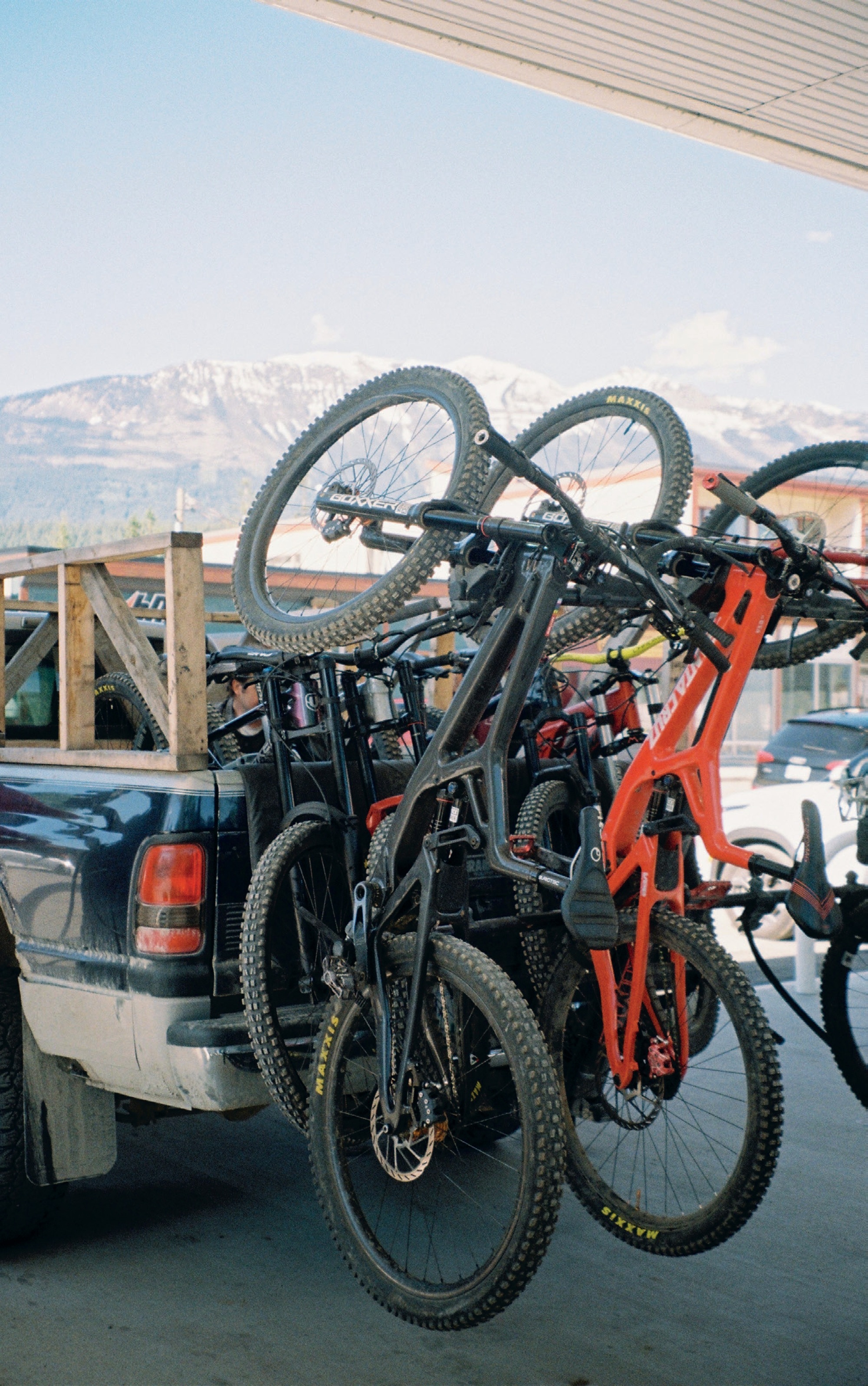
Bellingham served as our launch point; its reputation as a mountain bike haven is well- earned. The town sits nestled between the Salish Sea and the North Cascades, where trails seem to sprout from every fold in the landscape.
There’s a ton of riding options here and even if you spent weeks, you’d only just be scratching the surface. One of the main local riding locations is Galbraith Mountain. The network offers more than 65 miles of pristine singletrack that’s been methodically crafted over decades. Before heading north, we squeezed in an afternoon session on some of Galbraith’s finest. It was dry but the dirt was tacky, and the trails were so damn fun. Pacific Northwest trail builders craft with precision—berms and jump lines are dialled, but there’s also a heap of tight hand-cut singletrack. I was itching to get more trail time in, but we needed to gap it.
The van was packed. Two trail bikes, a DH bike, spare wheels, tyres, a heap of bike paraphernalia, clothes, some food and coffee and, after a quick homecooked lunch, we were set: ready to hit the road north. The border crossing at Sumas was relatively quick, and, soon enough, we were cruising through British Columbia’s Fraser Valley. The landscape gradually transformed from coastal rainforest to the drier interior as we pushed eastward. I was just trying to take everything in whilst also attempting to find an afternoon ride and dinner location. I wasn’t just a passenger, more like a co-pilot. We found a riding location to spin our legs, but it wasn’t really the mountain biking we were after as it was actually a cross-country ski course (in the winter, of course). We pedalled anyway as it was good to get the body moving again after spending a few hours in the van. We jumped back in and, within about ten minutes or so, we saw a heap of cars parked up at a trail head. Turns out that was a better location and had ‘real’ mountain bike trails. Oh well, that’s the joy of travel—right?!
After dinner in Kamloops, we pinned our first overnight stop to Salmon Arm. It’s a modest town on the shores of Shuswap Lake that’s quietly been developing its own mountain bike identity. The South Canoe trail network here is a testament to grassroots community building—local riders have turned hillsides into playgrounds, with trails that range from flowy cross-country to technical descent lines.
The morning light in Salmon Arm painted the lake in silvers and blues as we loaded up on coffee and breakfast sandwiches from a local cafe. After an hour or so of clearing the digital backlog, we were set for another day of road tripping. The air was crisp, typical of early summer in the BC interior. We surveyed Trail Forks and spotted a good trail en route. We drove the van up a fire road and parked at the trail exit. The climb up was peaceful, switch-backing through stands of cedar and fir with occasional glimpses of the Shuswap peeking through the trees. The descent was fast, flowing tight singletrack punctuated by natural rock rolls and root gaps that seemed purposefully placed by nature itself. I clipped a tree towards the end of the trail and catapulted myself off the bike. After a dust off, I fixed my bars and gathered myself before descending the rest of the trail. Stoke levels were high back at the van.
Golden was calling. But first: a short stopover in Revelstoke for lunch and multiple coffees. The urge to ride this iconic mountain biking location was at an all time high, but the timeline just didn’t allow for it, unfortunately. Here’s hoping I’ll get back there one day. Instead, we took in the historic charm of the town before hitting the road again. The drive east took us through some of BC’s most dramatic terrain—Rogers Pass cuts through the heart of the Selkirk Mountains, where glaciers still cling to peaks and the Trans- Canada Highway fits perfectly into the splendid scenery. The chat at this point was mostly about ski lines you could hit during the winter months. That’s certainly a trip for another time!
Golden appeared below us as we descended from Rogers Pass, nestled in the confluence of the Columbia and Kicking Horse Rivers, with Mt. 7 looming above like a staunch sentinel. The energy in town was all about the return of Psychosis. This is a race that had achieved almost mythical status in the mountain bike world, running from 1999 to 2008. After some dormant times, the race had been resurrected for its 25th Anniversary, drawing riders from here, there and almost everywhere to test themselves on one of the most demanding downhill tracks ever raced. Mt. 7’s course drops 1,200 vertical metres over seven kilometres, with some super steep gradients that would make a theme park seem lame.
The atmosphere in Golden was electric. The small town was buzzing, with bikes appearing from every corner. Our homestay for the event was an iconic local legend, Mark (Rabbit) Ewan. Rabbit had energy to burn and would not only house us but host us and get us anywhere we needed to be in Golden. It felt like we were with the mayor, as wherever we went with him in this small mountain town, he knew someone. His enthusiasm was infectious. Rabbit’s house was soon taken over by a flock of mountain bikers dossing down wherever space allowed. Thankfully, his wife and kids were out of town. A quick evening shuttle run was the order – I picked up the role of driver and the hoots and hollers on the way up were only louder on pick up at the bottom of the run. Rabbit took in some elements of the racecourse but wanted to venture off piste too. Dinner was served in the backyard, with bikes being tinkered with late into the night, thanks to the endless daylight that stuck around until 11pm.
Dawn was met with pancakes and maple syrup, washed down with coffee. Before long, we were driving back up Mt. 7’s access road, a rutted forest service path that twisted its way up. The view from the top is incredible and not only does it serve as a starting point for the riding trails, but a paragliding launch site, too. Columbia Valley stretched out below, with the morning mist still clinging to the river’s curves. Several runs later, the crew become a little more confident but there was still a nervous energy amongst them.
The race itself was a spectacle of human determination. Watching riders tackle the infamous ‘Dead Dog’—a steep, exposed section that had everyone’s hearts in their throats—was both terrifying and mesmerising. The level of commitment required to race this mountain at speed is hard to fathom, even for experienced riders. Between practice runs and race heats, the stories flowed. Tales of legendary runs from the day—and from the original Psychosis days—of broken bikes and broken bones, but mostly of the strong mountain biking community. Our crew all did well and kept their bikes upright and bones intact. The finish area party was strong, with music, beers, food and an electric atmosphere. This was all grass roots, with nothing flamboyant about it; as authentic as it gets. The crew were stoked to re-live yesteryear, reminiscing about the racing scene and how it reminded them that bikes have the power to bring like-minded people together.
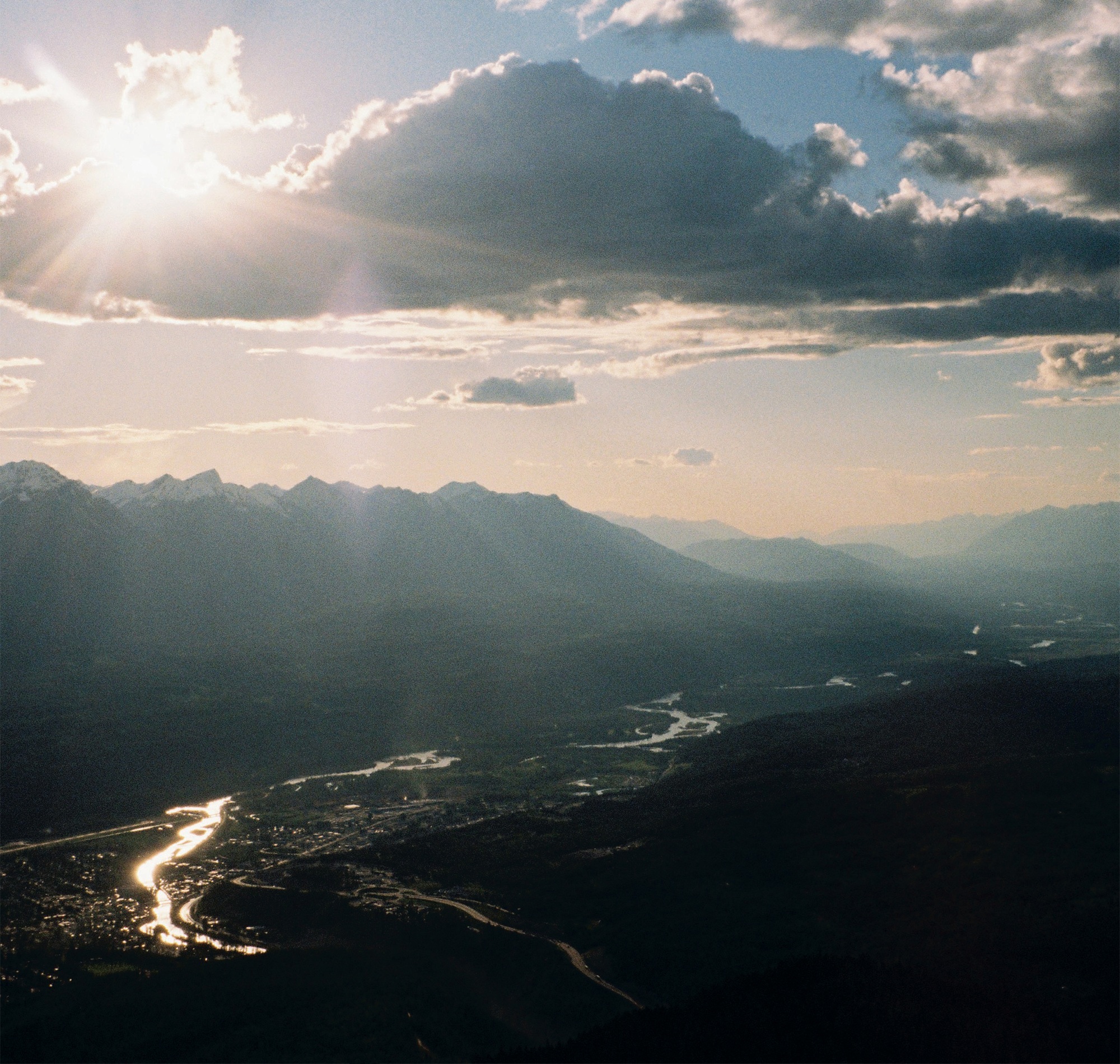
Our final evening in Golden was spent at the after party, held at a local bar where racers, support crew and spectators celebrated hard with a 90’s punk band doing covers. It got quite loose as the intensity of the music ramped up – think: mosh pits, no shirts and an electric atmosphere that would rival some concerts these days. The return of this iconic event represents mountain biking’s raw soul. The stories shared that night weren’t just about racing, but the lifestyle that surrounds the sport, too. Psychosis is all about preserving a piece of mountain bike history and culture that often gets overlooked in the new era.
As we loaded up for the journey to my next location, Golden’s morning light painting Mt. 7 in alpenglow—it was clear why events like Psychosis matter. In an age where mountain biking continues to evolve and modernise, there’s something special about places that maintain their raw, untamed character. From Bellingham’s pristine trails to Golden’s rugged mountains, our road trip had traced a line through the sport’s past, present and future. The shared experience has become a core memory, at the heart of which is the strong and vibrant community that keeps the sport intact.

The Longest, Longest Day
Words Tom Bradshaw
Images Peter Wojnar
The idea was simple: fly to the Yukon, arriving at 11:59pm on Friday night. Greeted by the midnight sun of the summer solstice, we’d leave the bike bags somewhere and start riding. We’d ride the stunning Whitehorse trails until the 5pm flight on Sunday night, returning to Vancouver in time for work on Monday. No accommodation, no vehicles—just a big ride with plenty of stops and the occasional nap under the midnight sun.
It was ambitious to say the least.
Landing at Whitehorse airport ahead of schedule at 11:30pm on the Friday, we feverishly built up our bikes outside the terminal, in a twilight haze of disbelief and—to be honest—tiredness.
The Yukon is known for its remoteness; the gold rush, the Arctic Circle, and beautiful, expansive terrain.
It’s five times the size of New Zealand and, more than once, we would find ourselves “Yukon’d.” If you were to look up Yukon’d in the dictionary, it would be a verb describing the moment of realisation that, three hours into a climb towards a mountain top, it appears no closer than when you started.
The Yukon is less well known for its mountain biking, however, it is outstanding. The soil is a blend of water-sapping loam and near-sandy alpine dirt. The tree line stops at 900m of elevation, providing “easy” access to the alpine. The vastness cannot be underestimated.
Immediately, our plan was derailed. Unable to simply leave our bags in the bush by the airport as we had planned, we dragged them with us to the local bike shop. I-cycle, arguably the best named bike shop in the world, fortunately has a perfect covered patio where we left the bags. We began pedalling, into the darkness—and the rain.
As it transpires, even during the actual summer solstice the sun technically sets for about one hour. At this point it was 1:30am on the summer solstice and, because of the rain, clouds and technical twilight, our mood matched the unexpected darkness of the forest around us. There was no traffic and as we left the city limits, we realised how dark, wet and dumb this idea actually was.
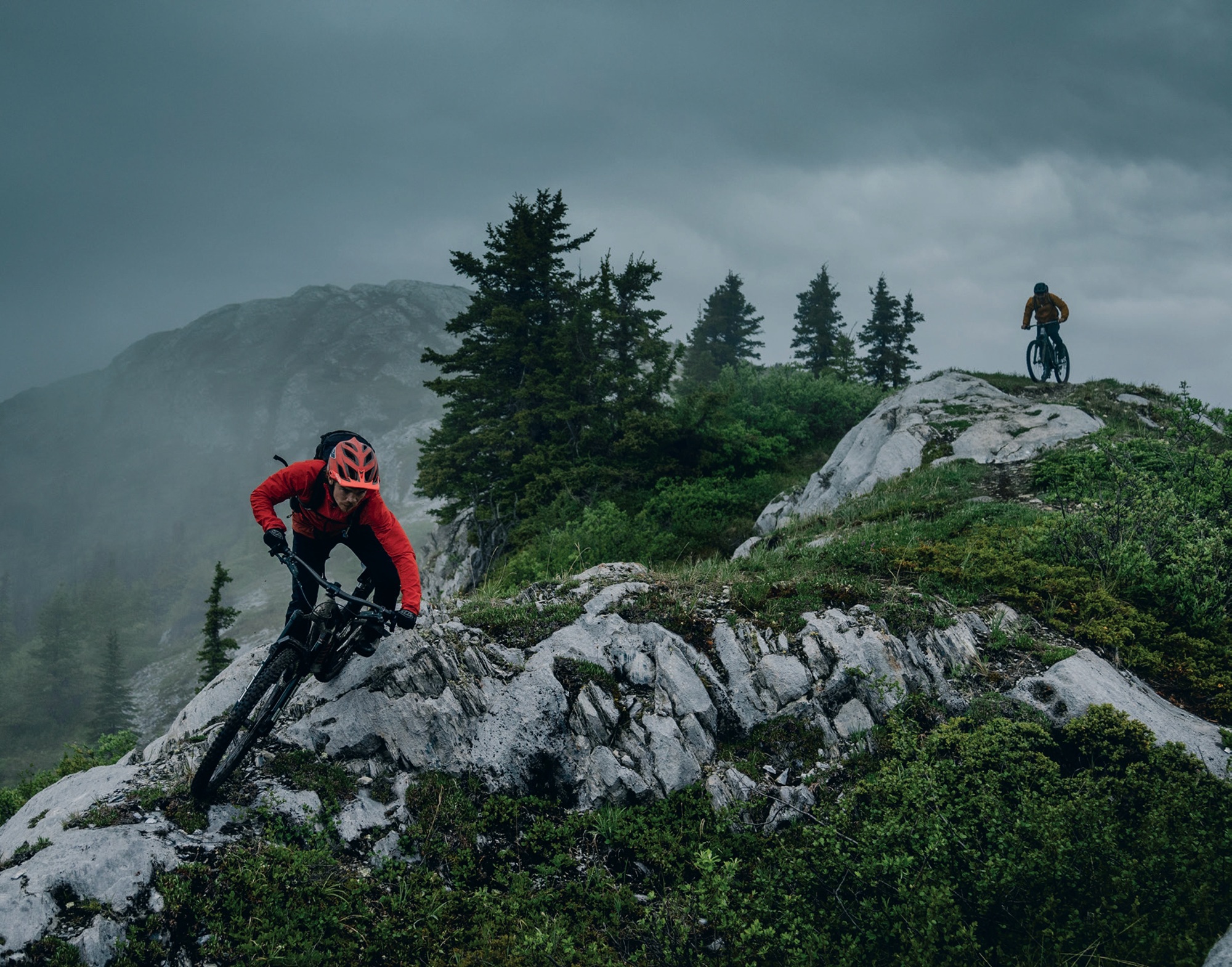
Three hours later, at 4:30am, we finally broke the tree line. The 1000m climb had taken it’s time, as we paced ourselves and got lost a handful of times up the ever-expanding forestry road network. The visions I’d had of a four-hour-long twilight, painting the alpine and expansive Yukon landscape shades of a Picasso art piece, couldn’t have been more than a fever dream at this point. It was lightish, however, a grey misty cloud had settled, enveloping not only the sunrise but the view of Whitehorse entirely. At least we only had another 20 hours to go, a chance for the weather to clear.
As soon as we started heading downhill, the first bonk of the day disappeared. The low angle 800-metre descent was delicious, albeit spicy with the wet slick roots ready to catch a front wheel. The dirt was perfect, though, and held the moisture well.
The final 150 vertical metres was such a treat that we pushed back up and did it again. By the time we got to the bottom, it was 7:30am, and thoughts of hot, fresh coffee were pulling myself and Jacob to town. Fortunately Peter, who was also lugging around a camera, wisely told us we were being cowards and our short-sighted goal of hot coffee would add another 25km of road to our ride.
The mountains and their bike trails completely encircle Whitehorse. We had headed out to the west, and our next trail lay northwest of town. If Jacob and I were left to listen to our caffeine addiction, we would drop 400m elevation and have to ride back up the same road; it was a dumb idea inside a dumb idea. Instead, we listened to our bodies, and all promptly fell asleep. It’s amazing what 24 hours awake can do. We found a shelter, and passed out on the gravel like it was a California King. Some 20 minutes later, refreshed, we started climbing again—this time aiming for our second 1000m climb for the day: Whitehorse’s downhill track. The climb flew by; the proper daylight, improving weather and incoming fresh singletrack had us moving.
Haeckel Hill DH did not disappoint. Dropping in at about 10am we were treated to a handful of steep chutes with beautifully placed catch berms. The trail then went to that outstanding Rotorua- esque low angle, off the brakes gradient. We were riding like we hadn’t been moving for nearly 12 hours with 2000m of climbing under our belt.
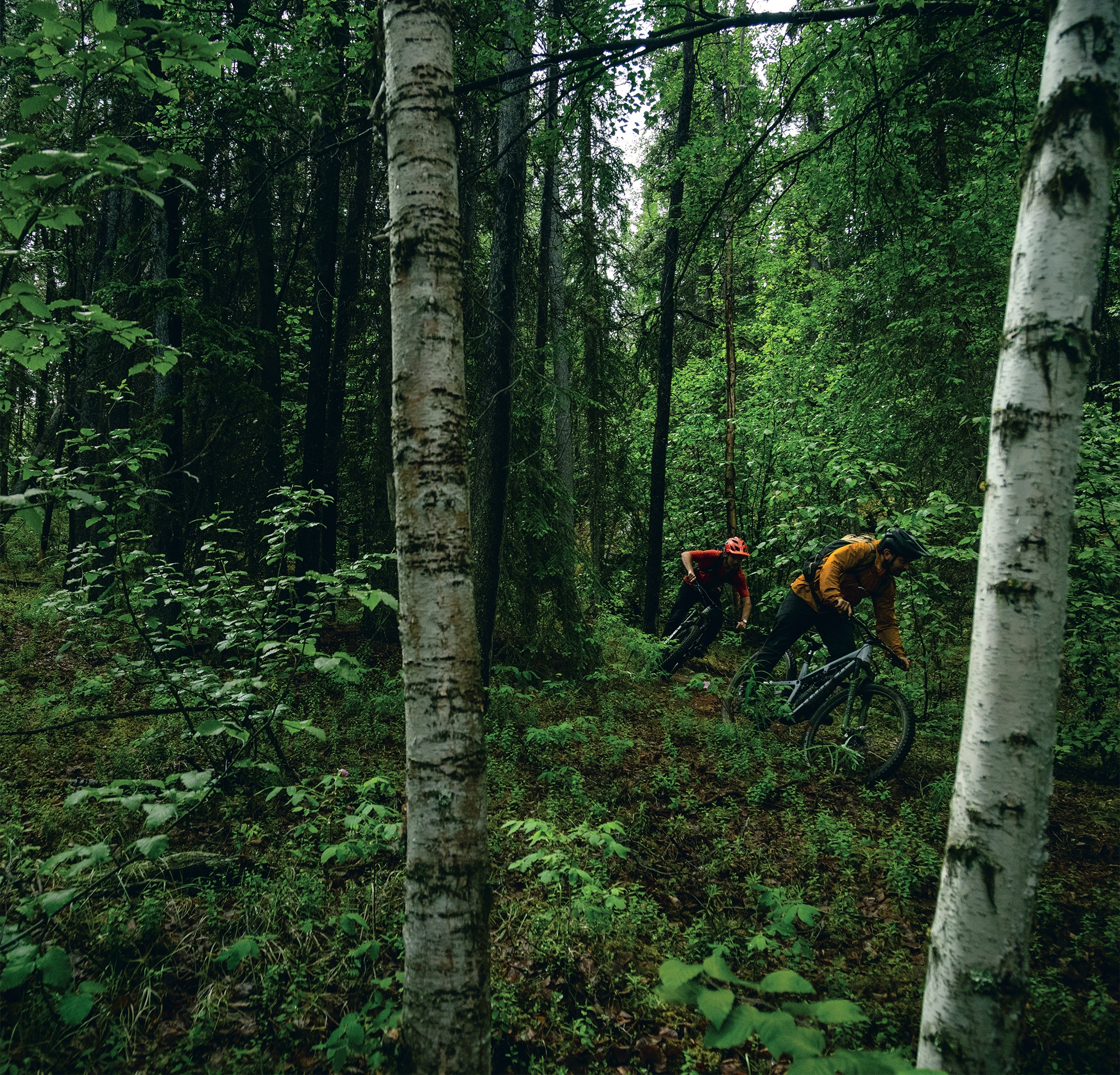
After the 700m descent of beauty we had earnt a coffee. And a beer. This turned out to be a near-fatal mistake. Rolling back into downtown Whitehorse sometime after noon, we had been moving for about 12 hours and were all completely soaked. The bottoms of our feet resembled the contours on a topo map. They did not look pretty, nor did we. We were accepted to the local pub and found a table amongst the locals enjoying a rainy Saturday lunch. Fortunately, the people of Whitehorse could not have been more welcoming. They all seemed unperturbed by our soaking wet carcasses, and we celebrated the halfway mark by toasting to being inside and warm. The consequences of that lunch beer were almost immediate. It was all we could do not fall asleep in the warm, dry pub. Knowing we couldn’t afford to totally piss off the locals, we settled up and promptly fell asleep on the park bench across the road.
This was not the alpine wildflower bed sunshine nap I had envisioned when scheming this mission. But at this point, none of us could care less. Awaking to rain falling on us again, and seeing that it was 2:30pm, we decided we should really get going to climb up Grey Mountain, a 1400m mountain to the east of town.
Over the next three hours, we learned the hard way about the term “Yukon’d”. By 5:30pm it felt like we hadn’t even made a dent on the climb, however, it was starting to make a dent on us. We needed to stop to air our now trench foot-like feet every hour or two—the downside of our plan to only wear our riding gear on the plane. This travel light strategy was really starting to backfire on us as I considered pedalling barefoot for a spell. The fire road was pleasant enough, with a gentle gradient, and the three of us kept each other cheery while reminding each other of previous indiscretions over the past 18 hours. The animals of Whitehorse were clearly taking shelter, wiser than us; our only sighting was a small black bear, jumping out a few hundred metres up the road, glancing at us then deciding he had better things to eat than three smelly, tired, wet humans.
Fortunately, the higher we climbed, the clearer the skies got. The cloud broke as we reached the summit of Grey Mountain. It was 7:30pm when we were gifted our first proper view of the Yukon. The mountain had taken five or so hours to climb from town, but paled in comparison to what lay beyond. Mountains, lakes and the mighty Yukon river stretched as far as the eye could see. It was beautiful. And so was the descent.
Money Shot was the most technically challenging trail yet; steep, rocky and exposed as it descended through the alpine. Again, the descent gave us all a shot of life. All three of us rode like we’d just jumped off a chairlift, passing each other on inside lines and cackling at the trail. This was our first of two descents off Grey Mountain. We’d lost 600 metres on this descent and started climbing to the top for a second time, knowing midnight was getting close.
We knew we had to be at the summit by around 11:30pm. The light was fading and rain clouds were forecast to roll back in. We had ambitiously decided not to pack any riding lights, believing that “of course we won’t need them; it’ll be light the whole time”.
Regardless, we pushed on knowing this would be the final descent of our longest, longest day. We started climbing the final alpine ridge at 10:30pm. The cloudy, murky twilight wasn’t the hours-long beautiful golden hour sunset I had envisioned, but it was still breathtaking. The climb was also breathtaking. By this point, we had climbed well over 3,500m and ridden over 120kms on about 50ish minutes of sleep. The bonk was hitting us all hard.
It was only fitting that this final 1000m plus descent was called “The Dream.” A beauty; blue flow trail, hand-built by volunteers from the local mountain bike club, descended through the alpine back to the Yukon River and into town.
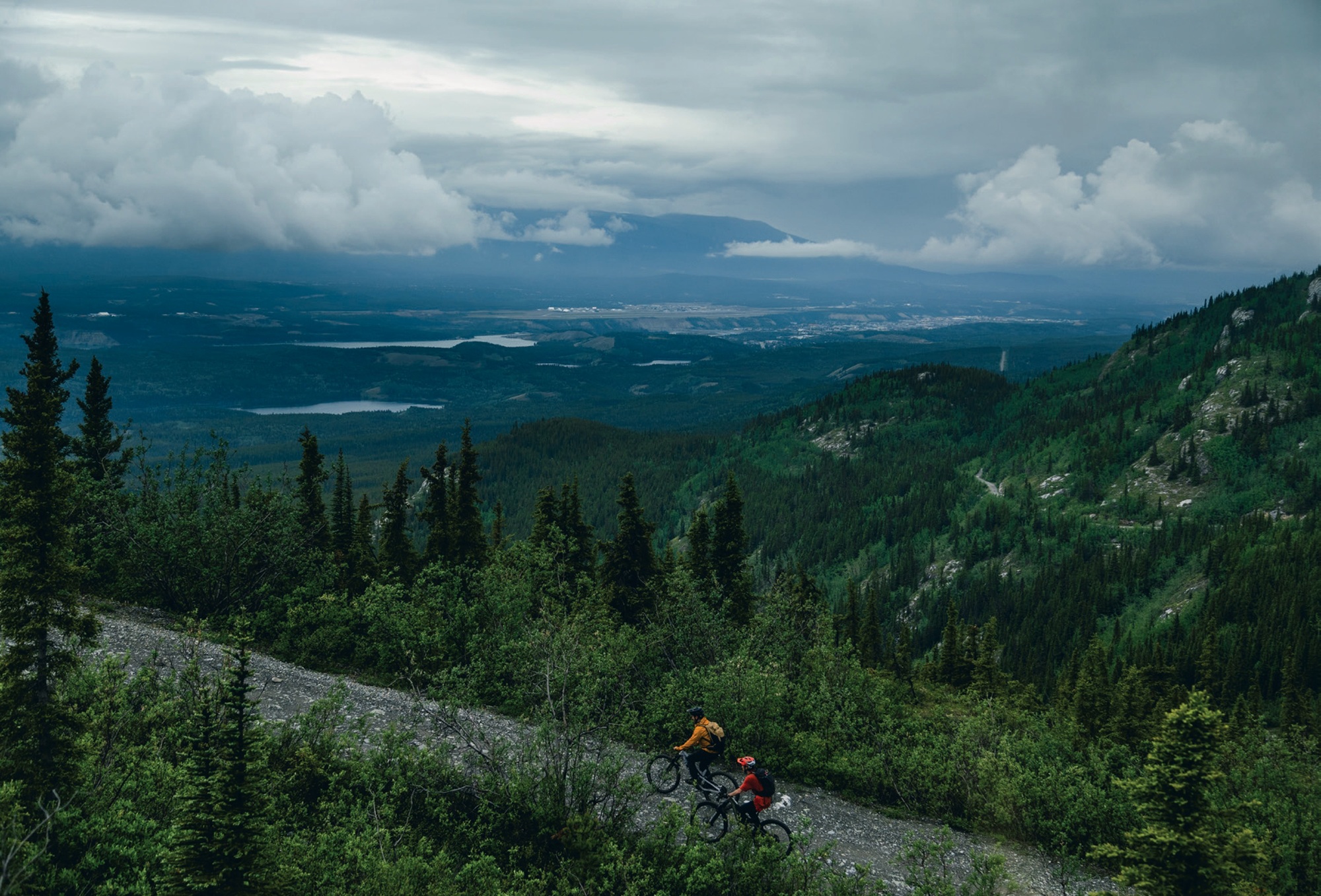
Naturally, we didn’t make the summit quite in time. As we dropped in at 11:45pm, the fading light and cloud made ‘The Dream’ a true and proper dream. Hooting and hollering like the delirious children we were, we scared any wildlife out of the way, the descent once again bringing us all to life. Twenty-four hours in, we were riding like it was lap one; the sandy alpine dirt providing unlimited grip despite the rain. The lights from town steadily got brighter as we got closer, and our grins were ear to ear.
As we rolled back to town at 1am, some 11 hours after we had left from our lunch nap, we realised how hungry and tired we were.
It’s fair to say we had drastically underestimated the logistics. I had planned this trip thinking we’d be riding through the hot summer sunlight, taking rests in fields of alpine wildflowers, and riding all the way through to our flight back on Sunday afternoon. Due to this overly ambitious plan, we had failed to book or bring any accommodation with us. We hadn’t really thought about that until this point, however, food was our number one priority. Whether you are in Whitehorse, Wellington or Warsaw, the golden arches of McDonald’s will always provide. The crispy, salty fries and magic Big Mac sauce filled a void we didn’t know we had.
Considering our options, sitting outside, soaked and bonked, we decided going back to our bike bags under the sheltered porch of the bike shop was our best move. And by god it was. To be honest, we probably could’ve booked a hotel, but we weren’t ready to drag our soaking wet carcasses back to society just yet.
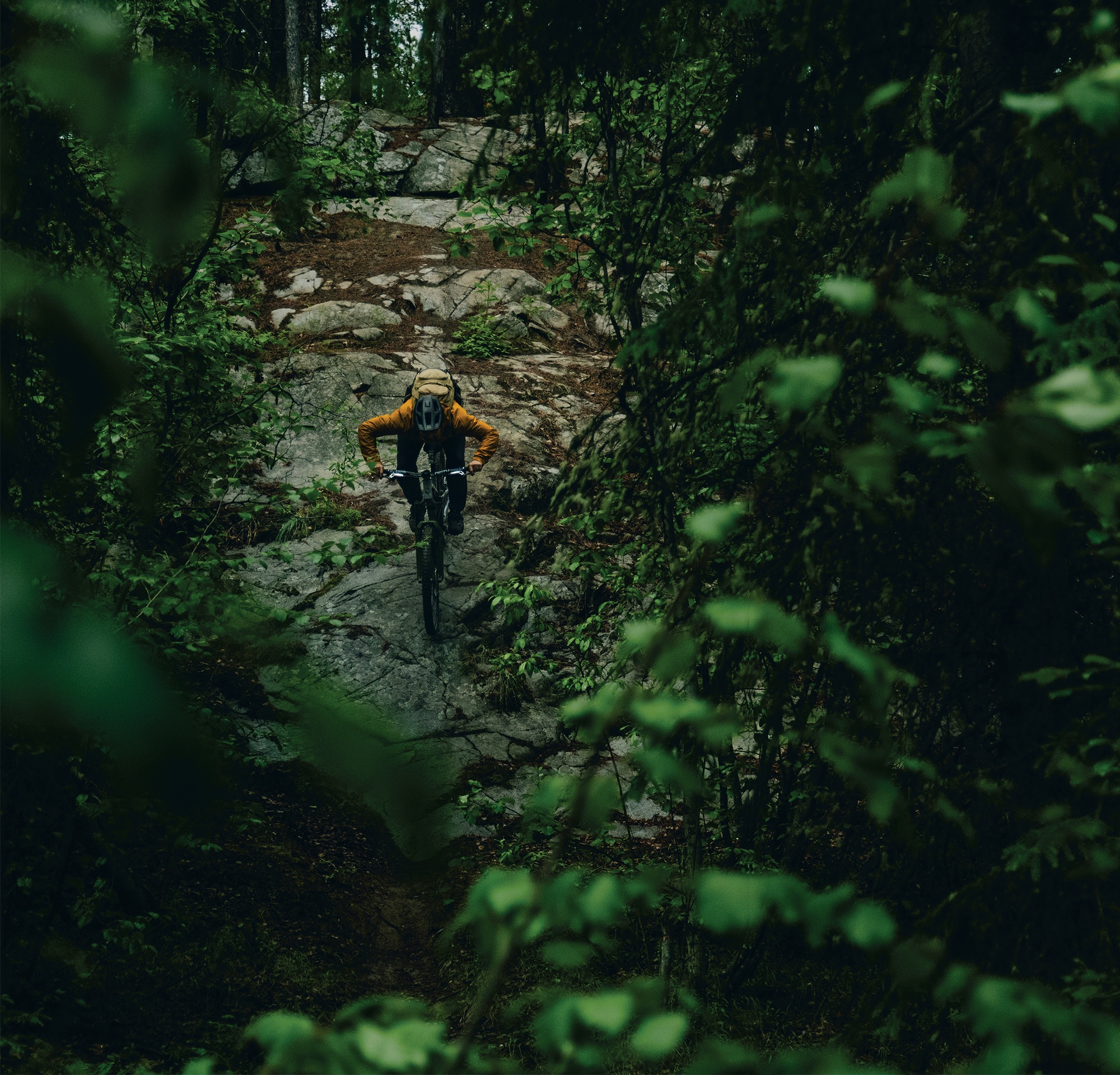
Cozying up in a bike bag might not seem like the comfiest bed to you, if you’re reading this from the couch or the coffee shop, but at 1:30am in the twilight of a rainy Whitehorse morning, it couldn’t have been better.
A successful end to the longest, longest day ride. As the sun properly rose on Sunday morning, we sought shelter in the local coffee shop, promptly falling asleep again, but caffeinated, dry and relatively warm.
We spent Sunday testing out the local BMX track and jumps close to town, then rode back up to the airport, but only after a crucial stop to buy clothes for the flight home. Our strategy of packing only our riding gear had worked out so far, however, by now we were a biohazard. We would not have been allowed to board a commercial flight in the state we were in, so Walmart provided a pair of jandals and enough clothes to let us board the flight home.
Sitting down on the flight back to Vancouver, I felt relieved that the Yukon had let us get away with this atrocious lack of planning. The vastness was real, and a place I cannot wait to revisit with the bike—and perhaps a vehicle and accommodation. Nonetheless, we left feeling successful. We did it, but it wasn’t pretty. We had spent the entire midnight to midnight exploring the outstanding trails, people and town Whitehorse has to offer.
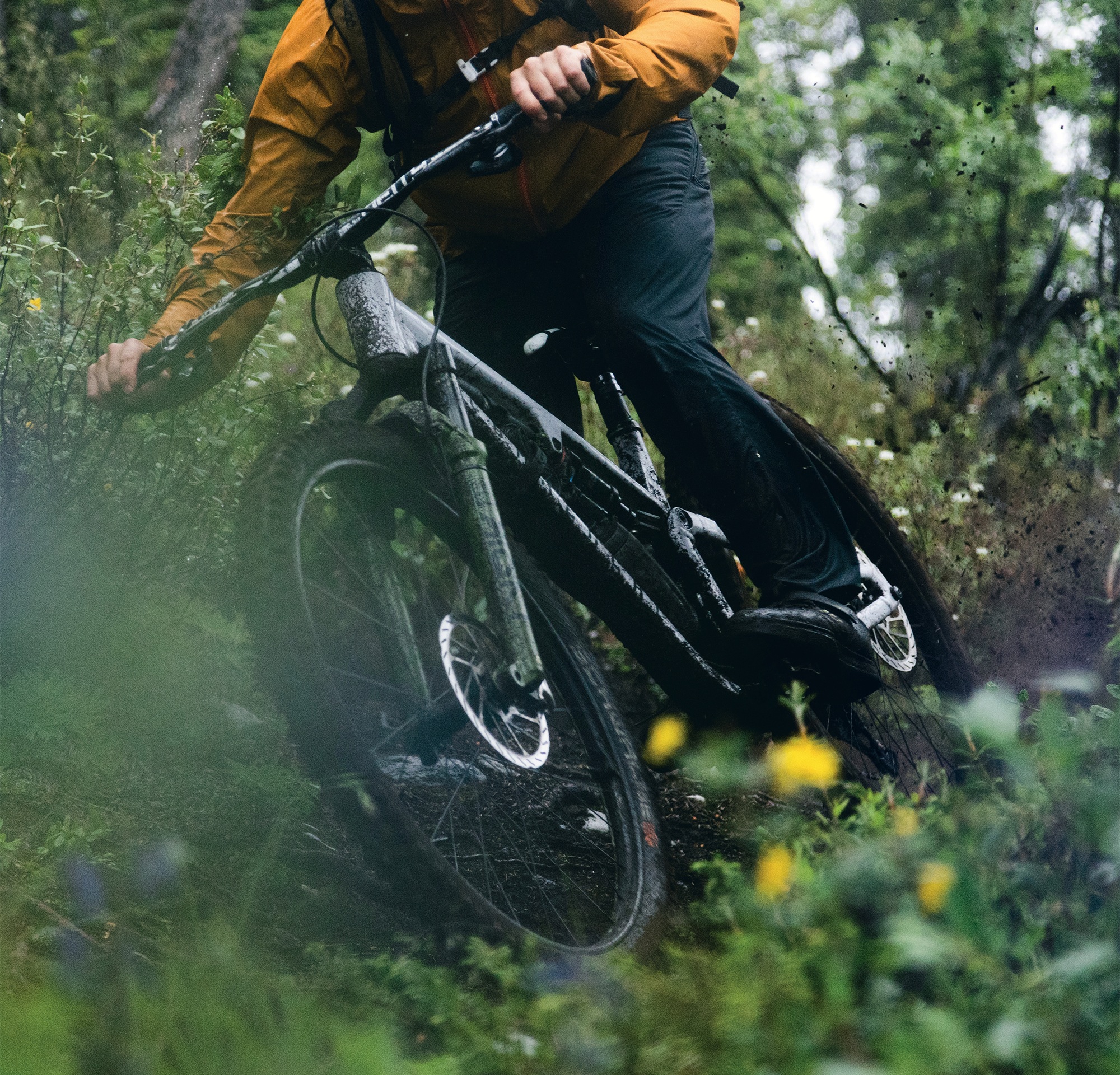

Resilience in Ōtautahi: Christchurch’s Mountain Biking Legacy
Words Lester Perry
Images Cameron Mackenzie
In the shadow of the Southern Alps, where tectonic forces have shaped both landscape and spirit, Ōtautahi Christchurch’s mountain biking community has written its own story of resilience.
In the shadow of the Southern Alps, where tectonic forces have shaped both landscape and spirit, Ōtautahi Christchurch’s mountain biking community has written its own story of resilience.
Like the native tussock grass that bends but never breaks in Canterbury’s fierce nor ‘westers, the city’s riders have proven time and again that adversity only strengthens their resolve.
The devastation of yesteryear has hardened city dwellers who have incredible forward momentum. These individuals are armed with spades and determination and, over the past decade or more, they’ve built new lines to prove their mettle on. Not only new lines appeared but new riding communities too and, nowadays, rider’s flock to Christchurch and its stunning surrounds to get a piece of the action.
The Port Hills, those ancient volcanic remnants that stand sentinel over the city, have always been more than just terrain. They’re the beating heart of Christchurch’s mountain biking culture. From the technical challenges of Flying Nun to the flowing contours of Anaconda, each trail tells a story. Simply ask around and you’ll hear rider’s tales of dawn missions before work, lights twinkling on helmets as they chase the sun up Mt. Vernon; and weekend missions.
When the Christchurch Adventure Park (CAP) emerged from the drawing board in 2016, it wasn’t just another bike park—it was a statement of intent. Heck, there was a ton of excitement in the air at the time and rightfully so. This would be the Southern Hemisphere’s first year-round chairlift-assisted bike park. It represented everything the community stood for: ambition, innovation, and that characteristic Cantabrian courage to dream big. The 358.5 hectare park became a testament to what’s possible when passion meets perseverance.
The 2017 Port Hills fires, that swept through CAP, could have been the end of the story. Instead, it became just another chapter in Christchurch’s tale of renewal. As the smoke cleared, revealing a changed landscape of blackened pine skeletons and scorched earth, the mountain biking community rallied. Volunteer trail builders worked alongside professional teams, adapting their designs to the new terrain. Where once there were forest lines, they created raw, exposed tracks that showcased the hills’ natural beauty. The park didn’t just survive—it evolved.
Today, Christchurch’s riding scene reflects this history of adaptation and growth. The city’s unique geography offers something for every rider. Beginners find their wheels at McLeans Island, where purpose-built tracks wind through river terraces. Urban warriors connect the dots between the city’s green spaces via an extensive cycle network that makes every ride an adventure. Intermediate to advanced riders push their limits at CAP, where world-class trails like Shredzilla and B-Line challenge even the most skilled athletes.
The highly anticipated Crankworx Summer Series is set to return to New Zealand in 2025, after the cancellation of the 2024 event due to the devastating fires in the Port Hills. The series will take place from 13th to 16th February 2025, with a new line up of events that will elevate the mountain biking experience for both riders and spectators alike, and will form part of the build-up to the first mega-festival of the Crankworx World Tour, in Rotorua from 5th – 9th March 2025.
The Ōtautahi Christchurch festival will introduce a new Freeride Mountain Bike Association (FMBA) Gold Level Slopestyle event, the first of its kind in New Zealand. The new course and competition is set to attract some of the world’s top Slopestyle riders and provide a pathway for emerging New Zealand talent. Alongside Slopestyle, the series will also feature Pump Track and Downhill, ensuring a weekend packed with action for spectators and athletes alike.
Beyond the established trails, Christchurch’s riding culture continues to evolve. Secret lines appear in forgotten corners of the Port Hills, carved by passionate locals who see possibility in every contour. Over the weekend, vehicles with bikes hanging off them head out of town with riders making the short trek to Craigieburn and Mt. Hutt, extending the community’s reach into the high country. Each new trail, whether sanctioned or social, adds another thread to the rich tapestry of Christchurch’s mountain biking story.
The city’s mountain biking infrastructure has become a model for urban planning worldwide. The Major Cycleway network, born from post-earthquake reconstruction, has transformed how people move through the city. Riders can now pedal from the International Airport to the Adventure Park without leaving dedicated cycling infrastructure – a journey that captures the essence of Christchurch’s commitment to two-wheeled adventure. What’s even better, is that you can store your bike box at the airport—perfect for a weekend riding getaway with no need for a car!
As the sun sets behind the Port Hills, casting long shadows across tracks both old and new, Ōtautahi Christchurch’s mountain biking community continues to prove that it’s not the challenges that define us, but how we respond to them. In the end, it’s not just about the trails – it’s about the people who build them, ride them, and keep coming back, no matter what nature throws their way.



